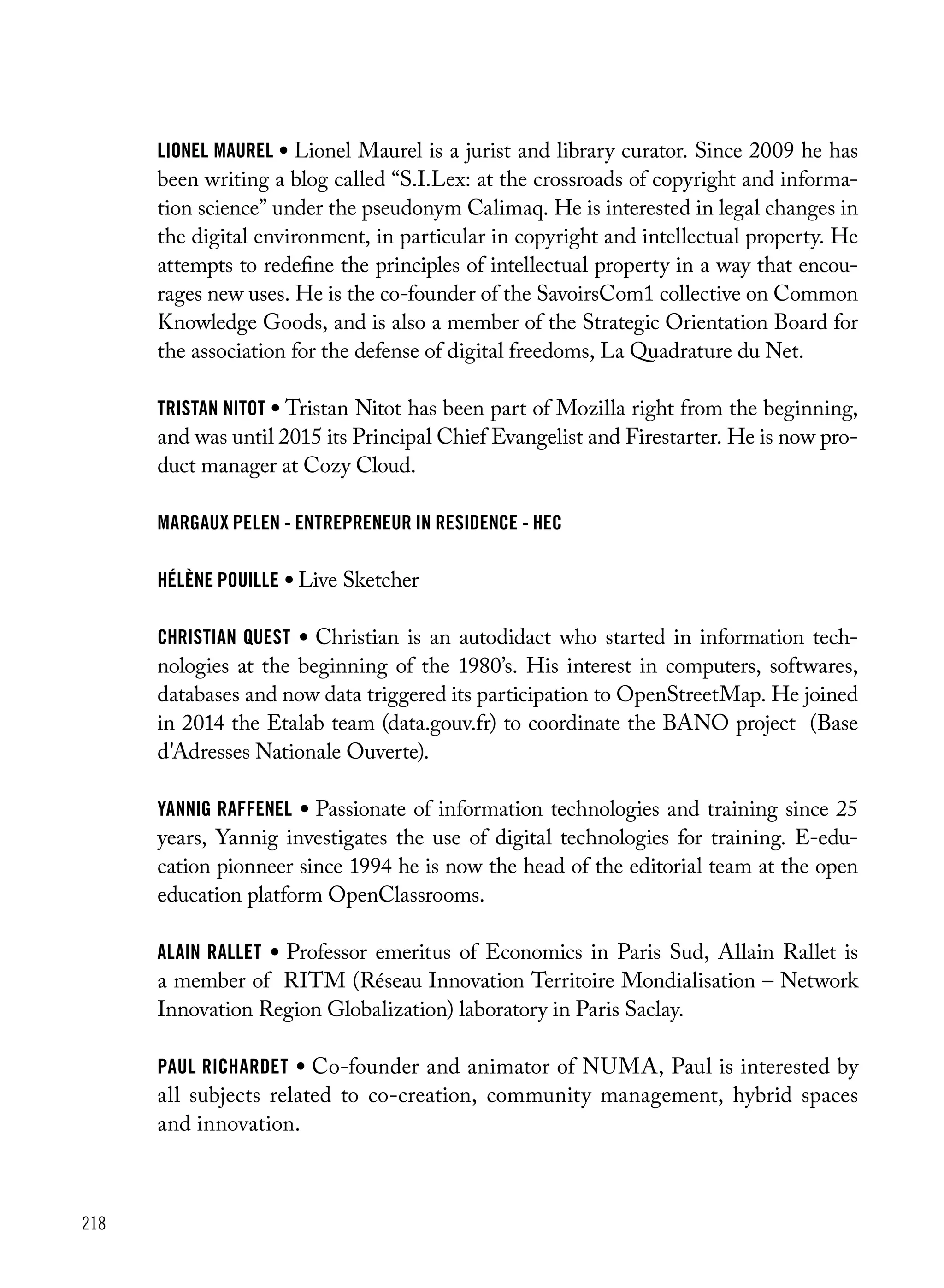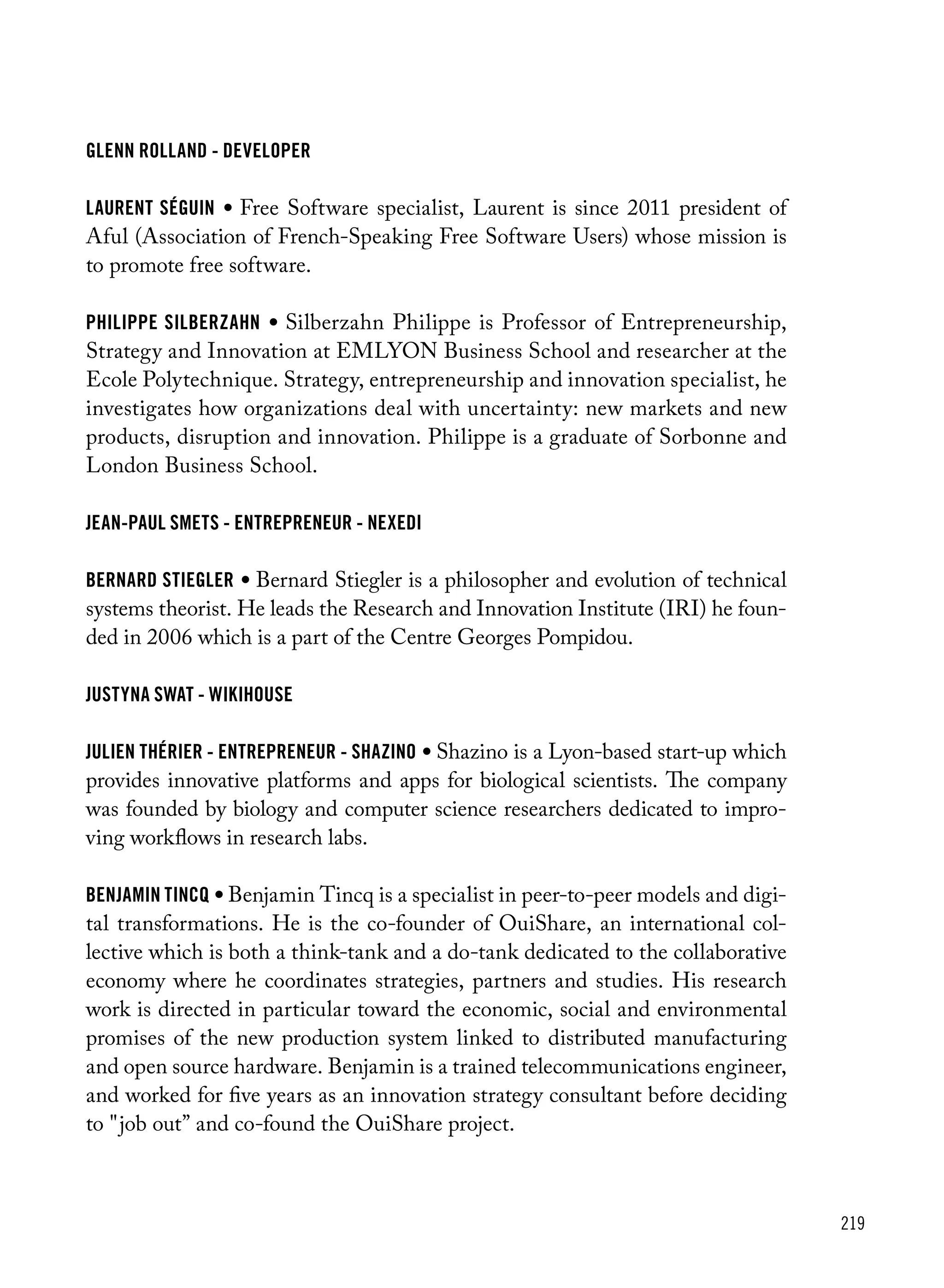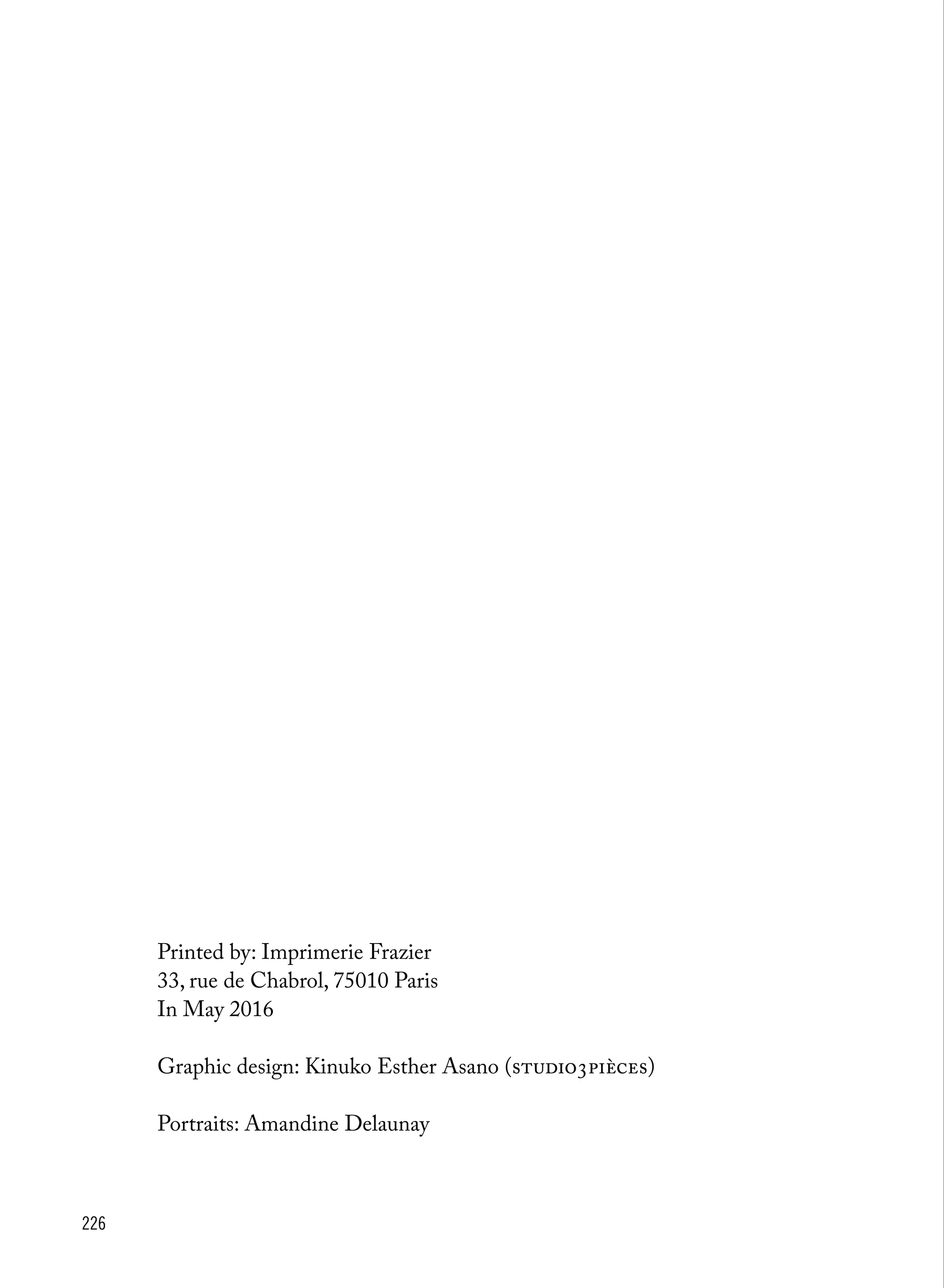The document discusses the emergence and impact of open models in various sectors, emphasizing their role as alternatives to traditional business approaches. It highlights contributions from various experts and researchers who explore the implications of collaborative and open methodologies in software, education, arts, and more. Published by 'Without Model,' the text encourages dialogue on how these models challenge existing norms and foster innovation.




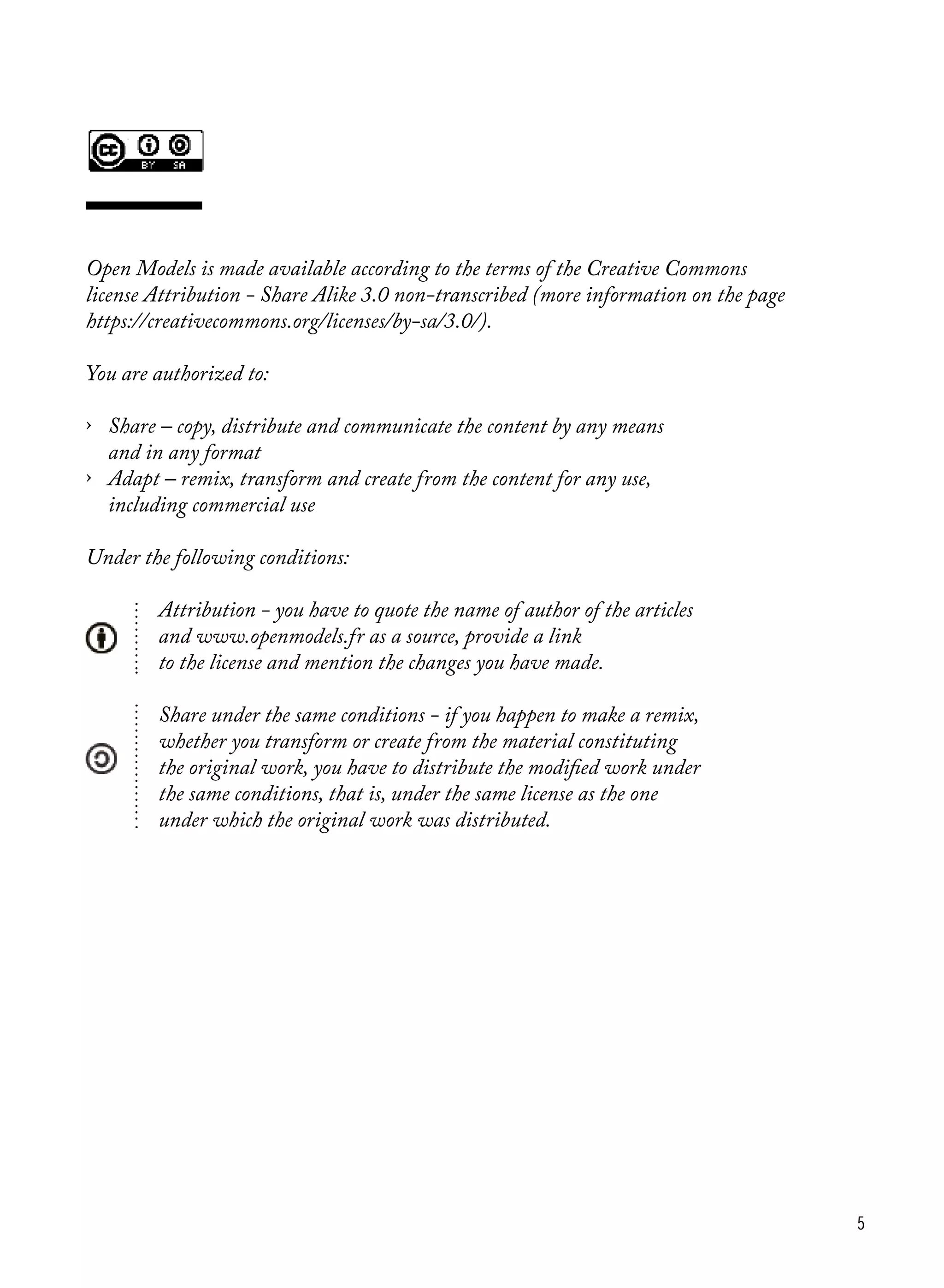
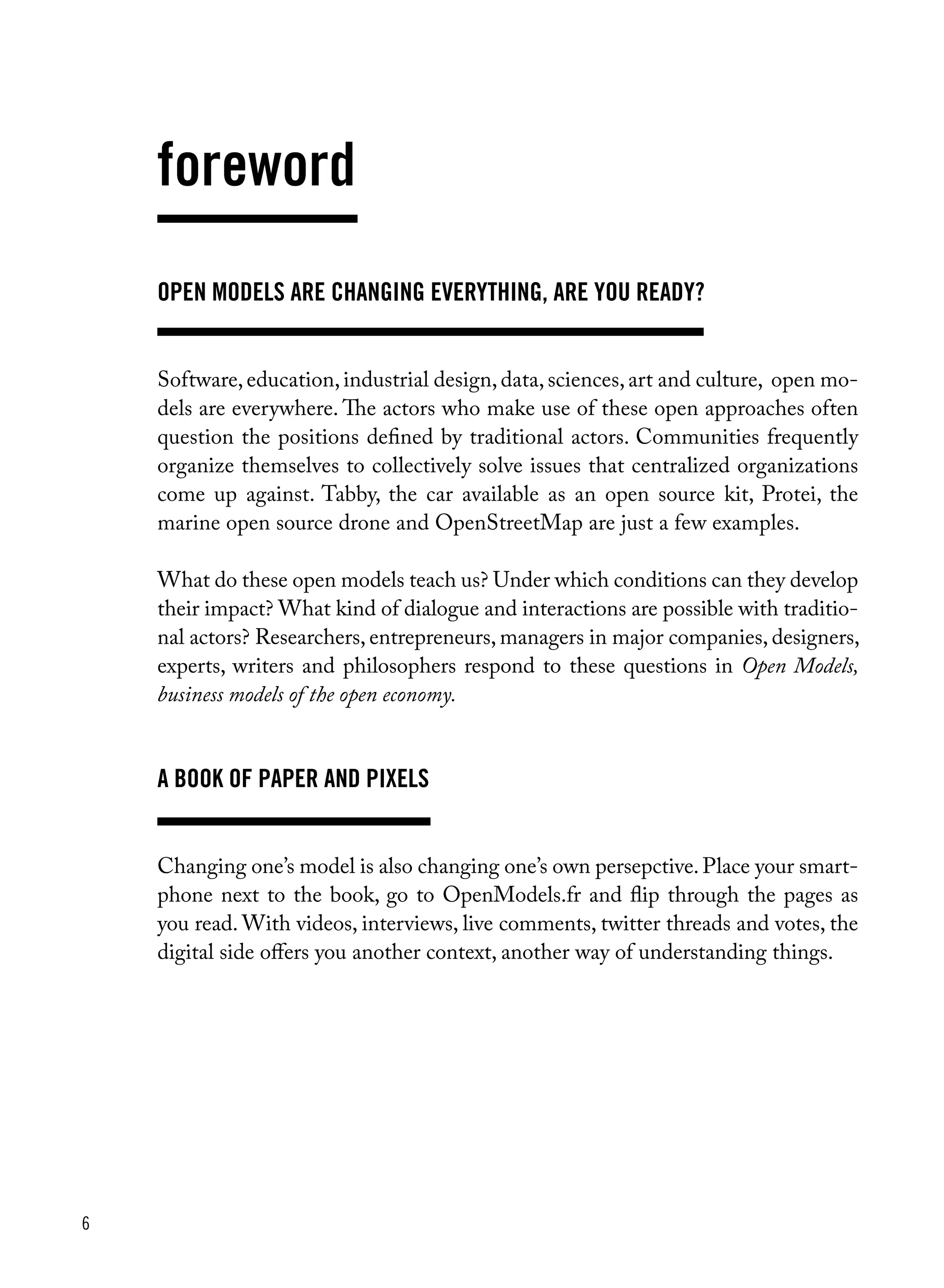

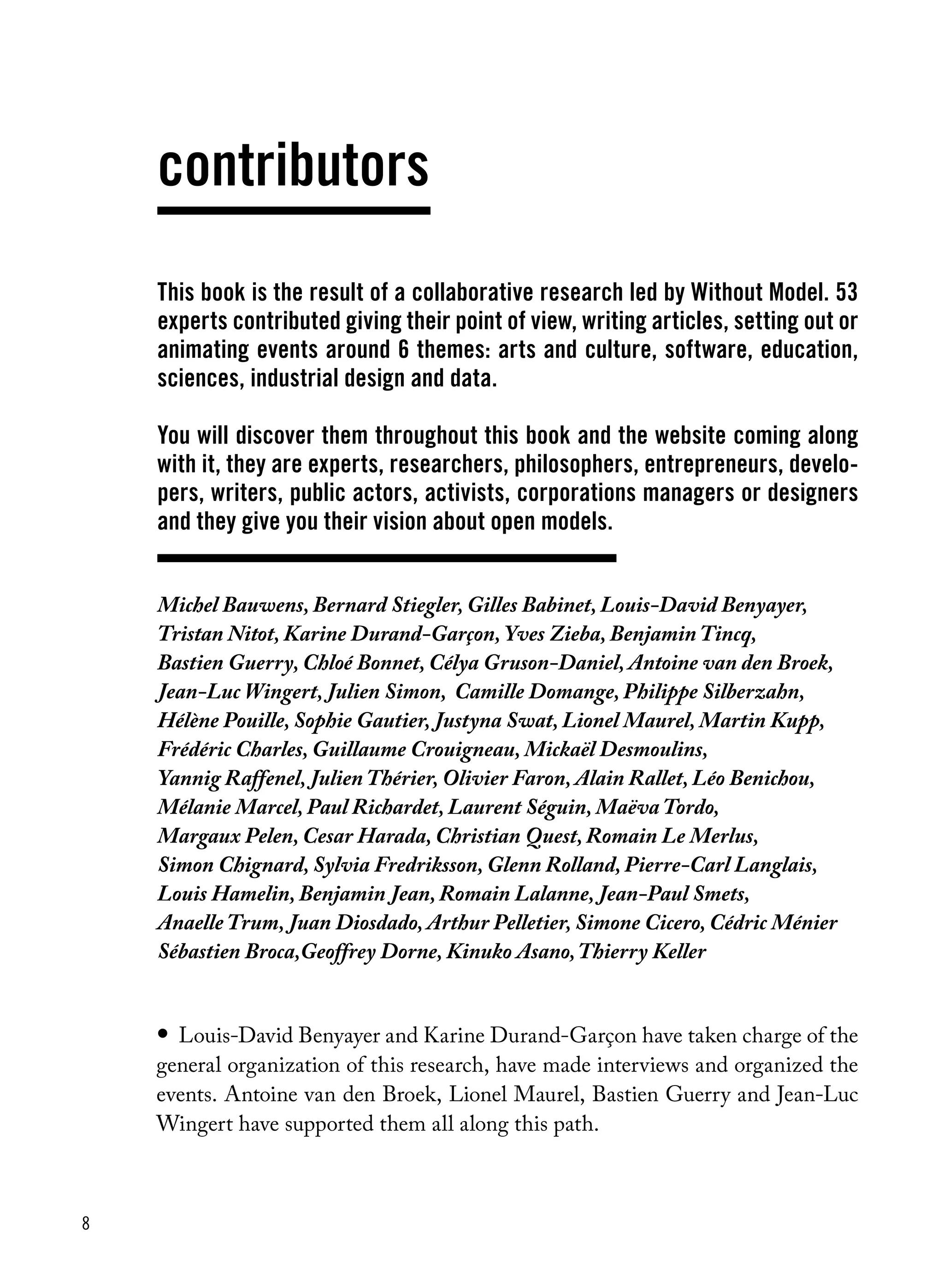

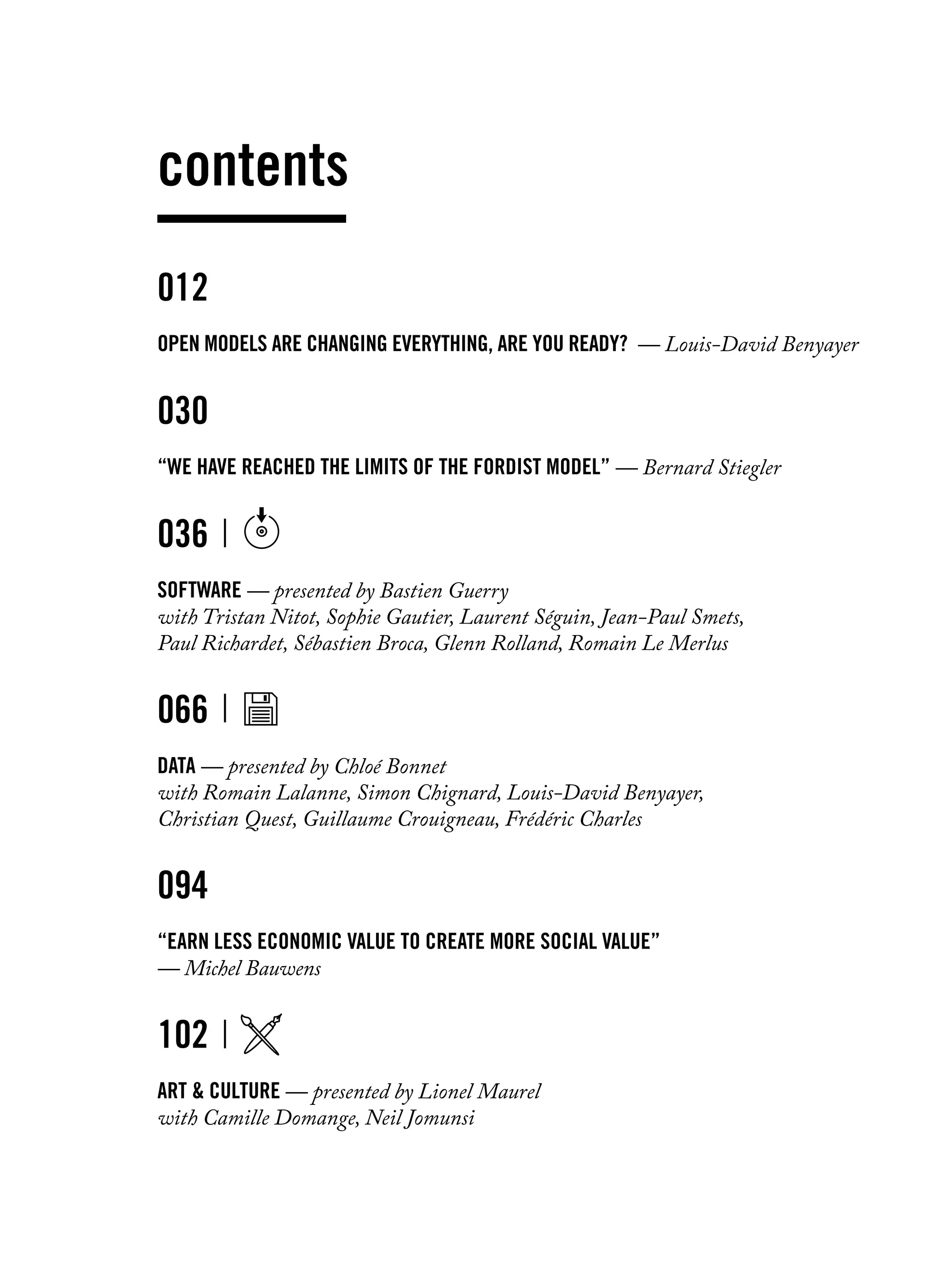
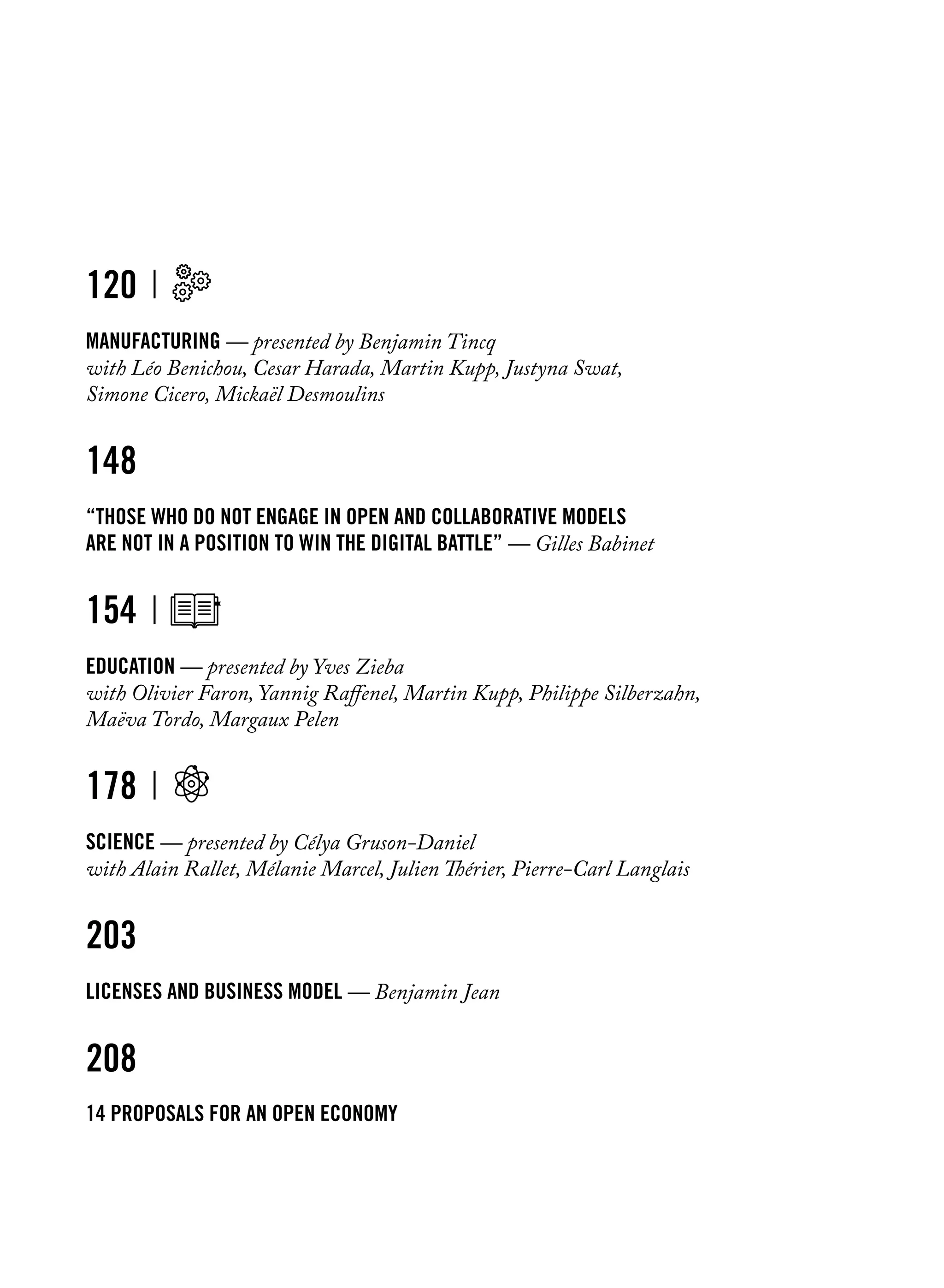
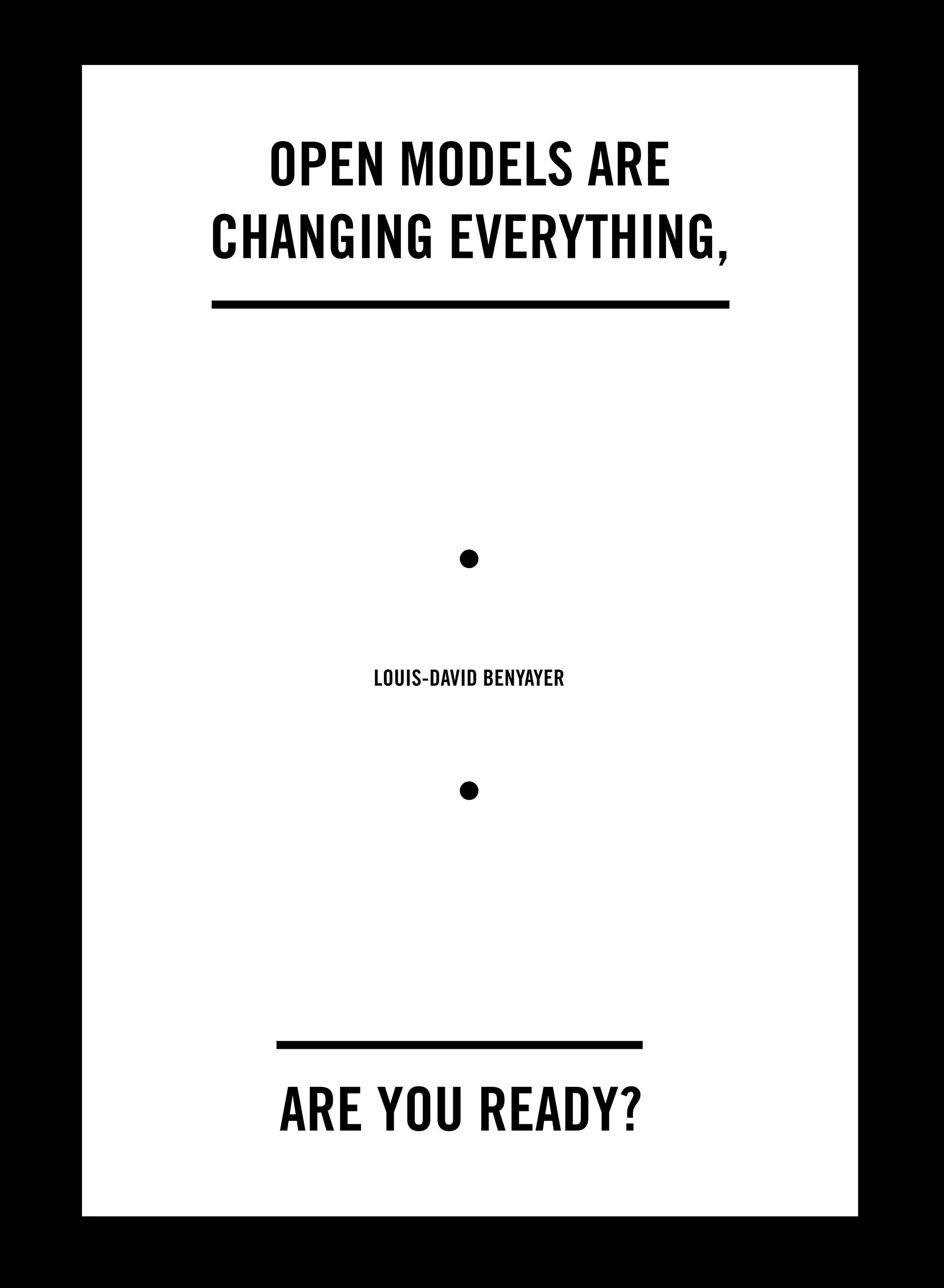

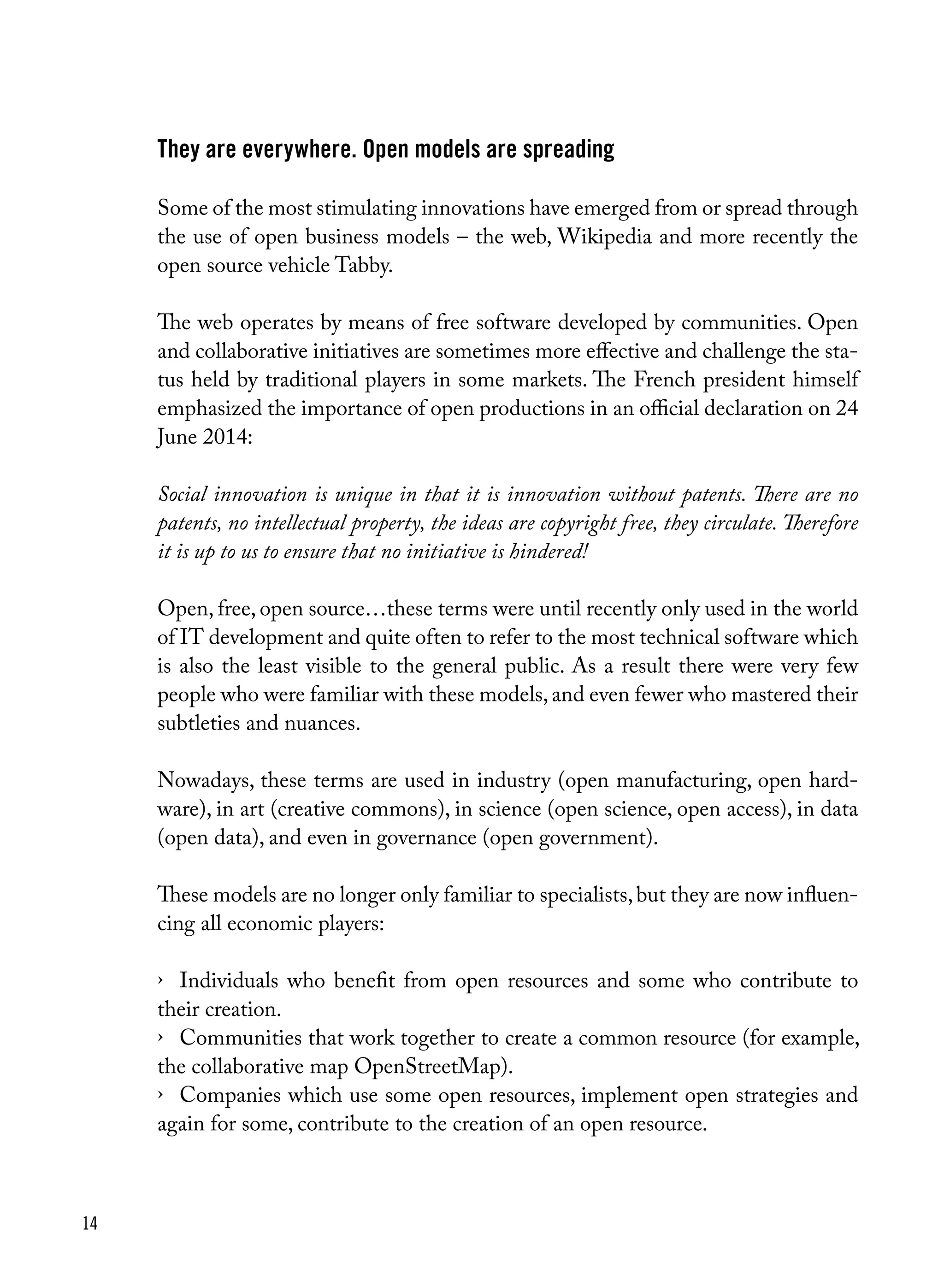









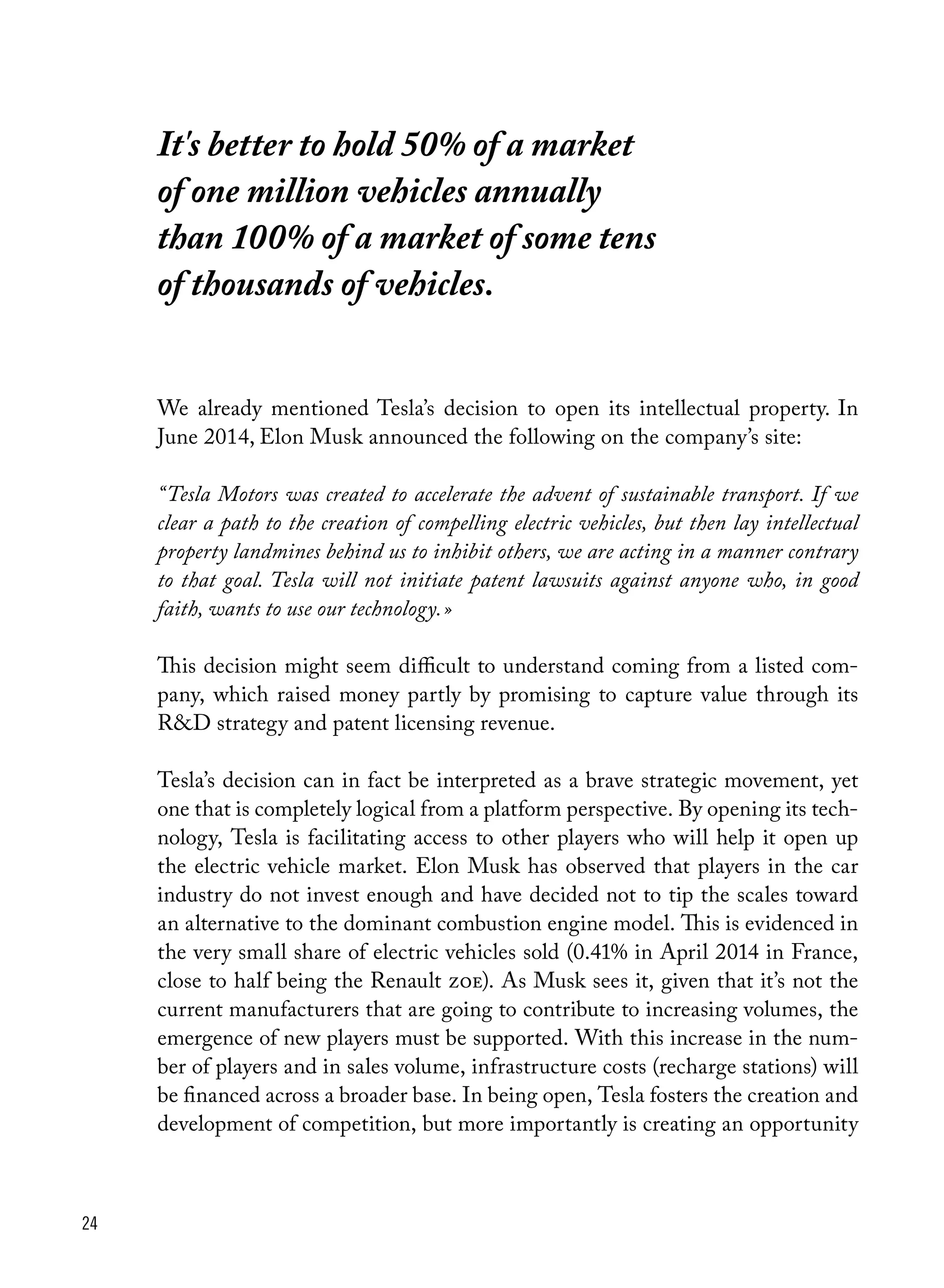








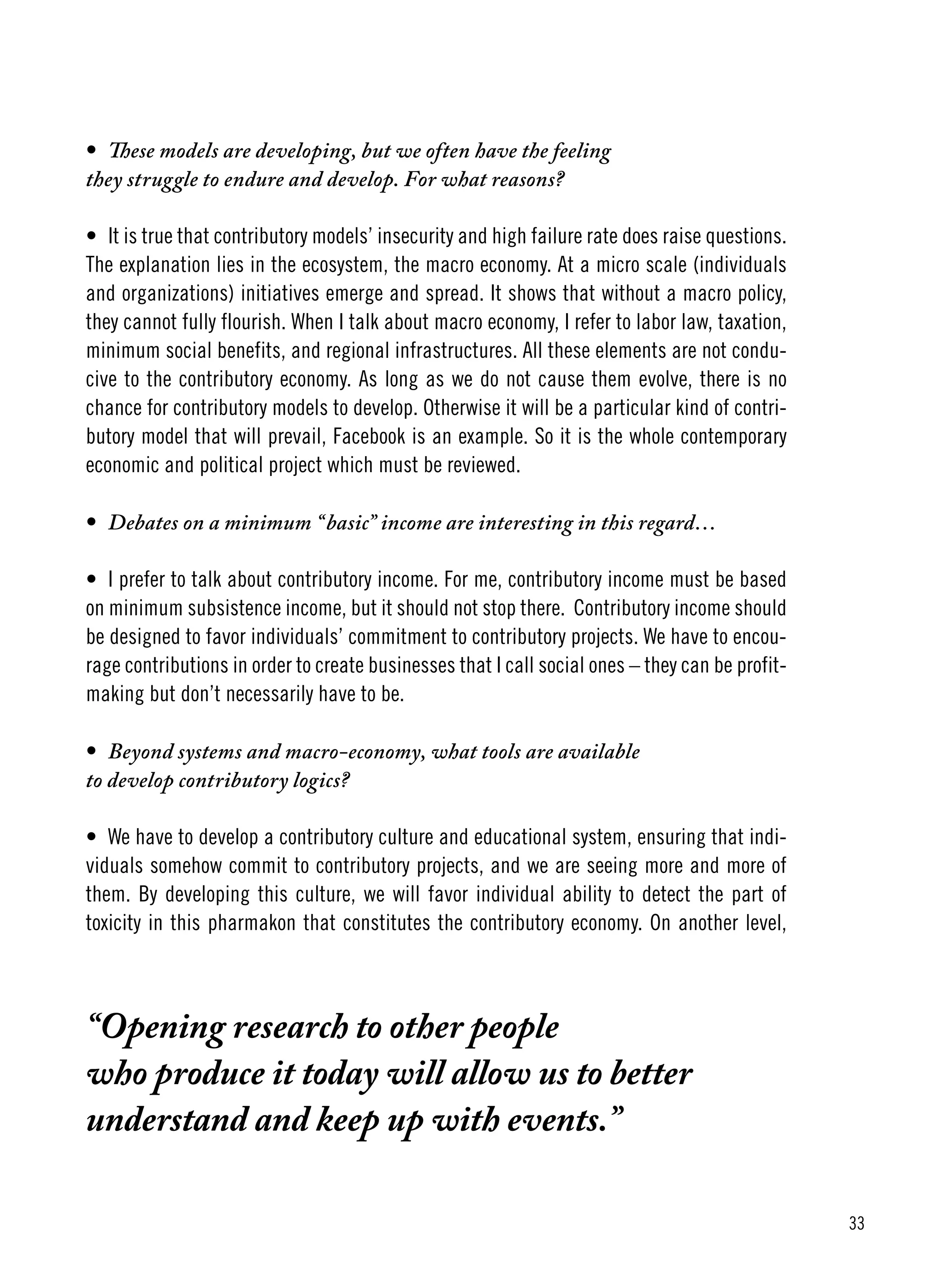
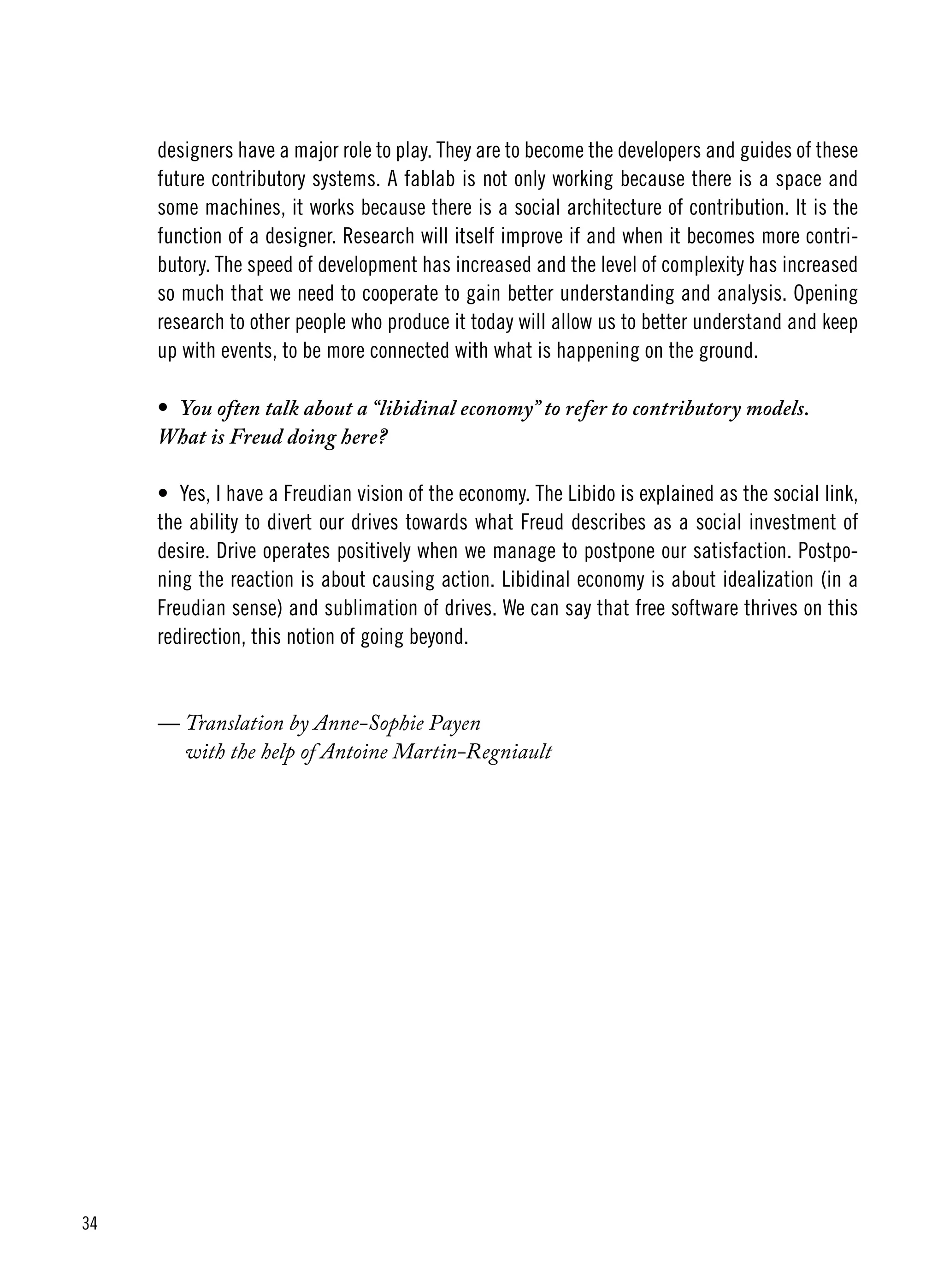











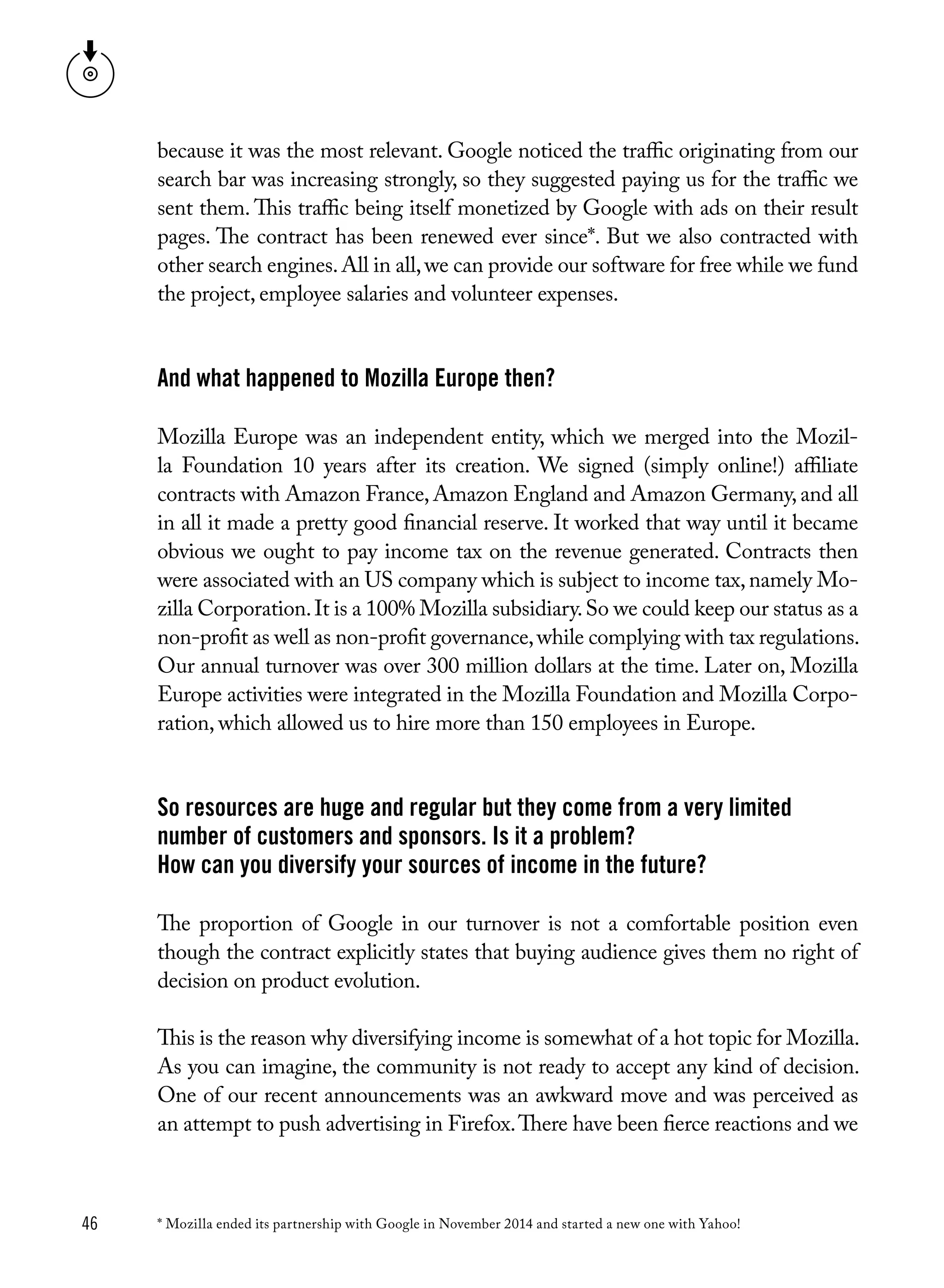

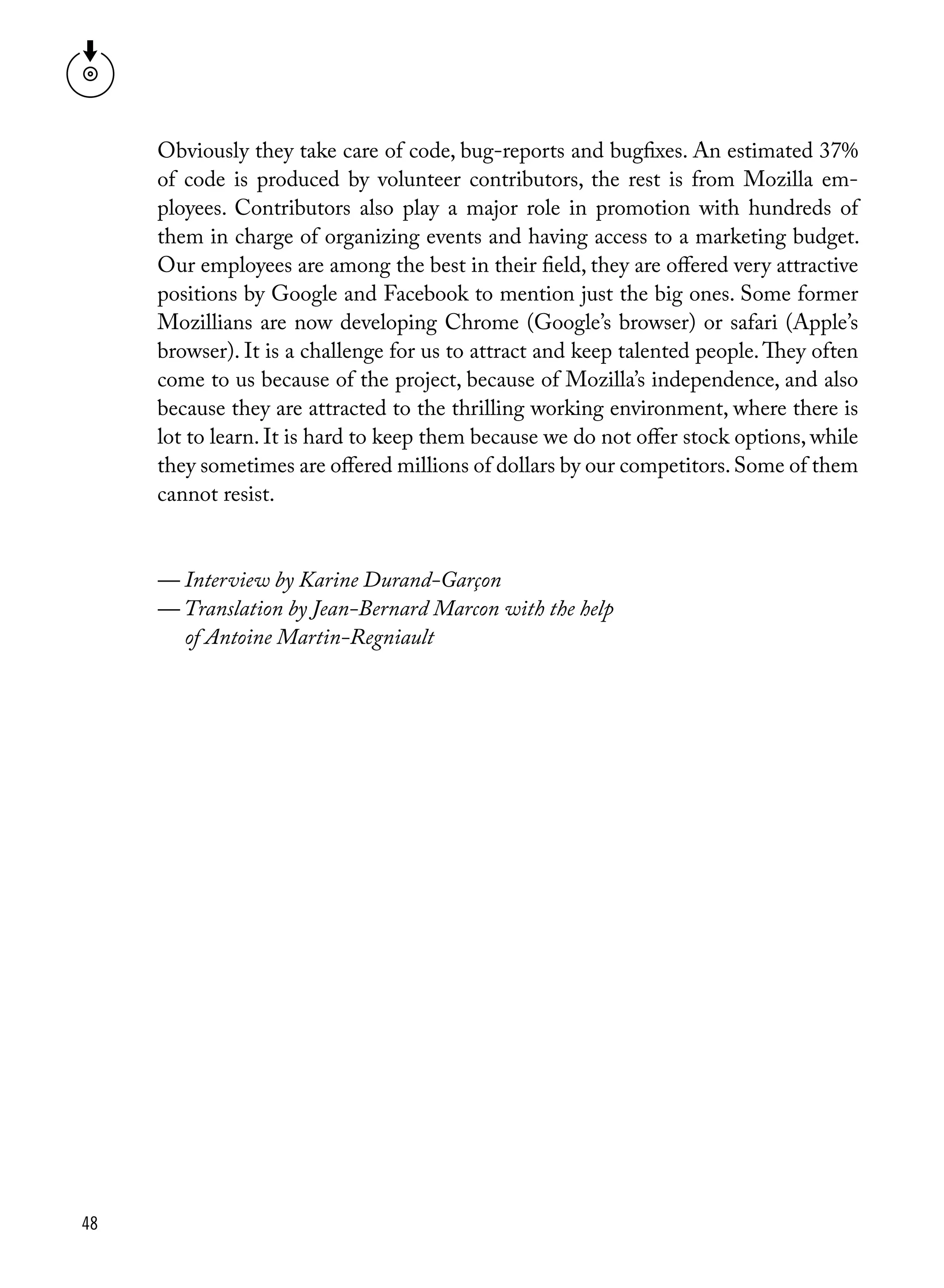
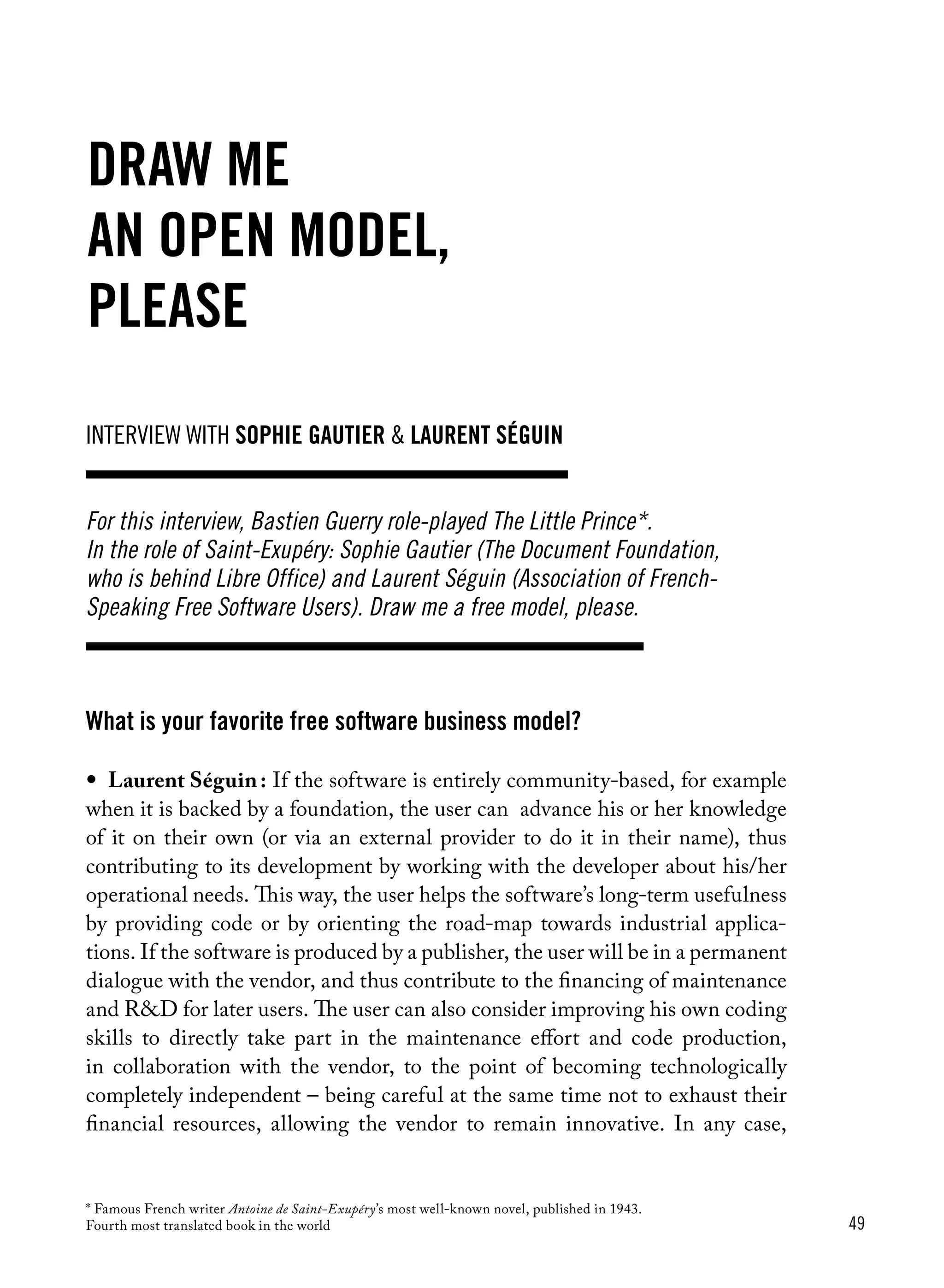
![50
users should understand that choosing a free software is an investment worth
protecting, not just another IT expenditure. This protection should cover the
software itself as a technical tool (sustaining the freely available code), and
should also target all those who are involved in making it better (sustaining
know-how and innovation). I think that the human and financial implication
for the users – depending on how critical the software is to their activity – ulti-
mately constitutes the best model.
• Sophie Gautier : Laurent just read my mind! In short, the best model is an
ecosystem where the users take part in the development of the software, one
in which companies can help technically by contributing to the source code,
otherwise, help can also be provided by directly financing the project.
What are the attractive business models that do not actually work?
• Laurent Séguin : It depends on what you mean by “do not work”. Do you
only care about revenue streams, or are you also considering the implications
that free software entails for users. If you only measure revenue, then all mo-
dels work, because you can make money with any one of them. Establishing
multiple revenue streams simultaneously generally allows enough resources to
keep the project going. For instance, mainly collecting revenue through sup-
port services does not mean you overlook selling stuffed animals [if you can].
However, any software vendor who thinks about financing R&D by only sel-
ling support services should be careful. When a vendor tries to be competitive
with service prices (as expected by clients), service revenues tend to only cover
service costs, and do not necessarily allow for any extra to finance code deve-
lopment as well. Fortunately, France has plenty of aid schemes in support of
innovation, like the Crédit Impôt Recherche (Research Tax Credit) which allows
them to continue investing in their R&D. If users’ freedom is what matters
(truly free software, not any “shareware”that is half open-source), then models
that restrict users’ freedoms do not work by that criterion. By that token, The
AFUL (Association of French-Speaking Free Software Users) advises all com-
panies enticed by this type of software – which can be technologically very
good and actually fulfill their needs – to be very critical with the open-source](https://image.slidesharecdn.com/20160504wmglobalanglaispage-160728074215/75/Open-models-book-50-2048.jpg)
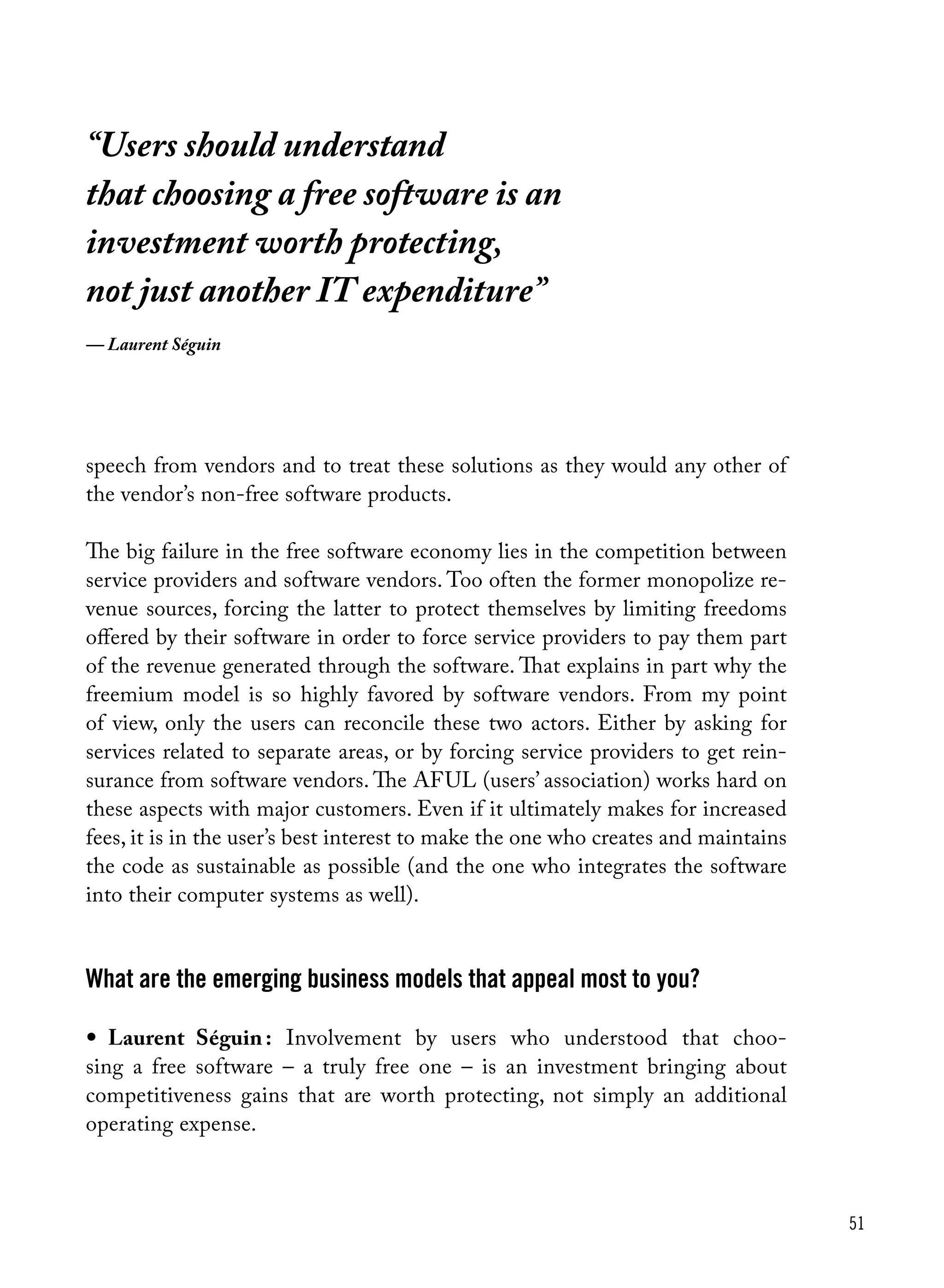


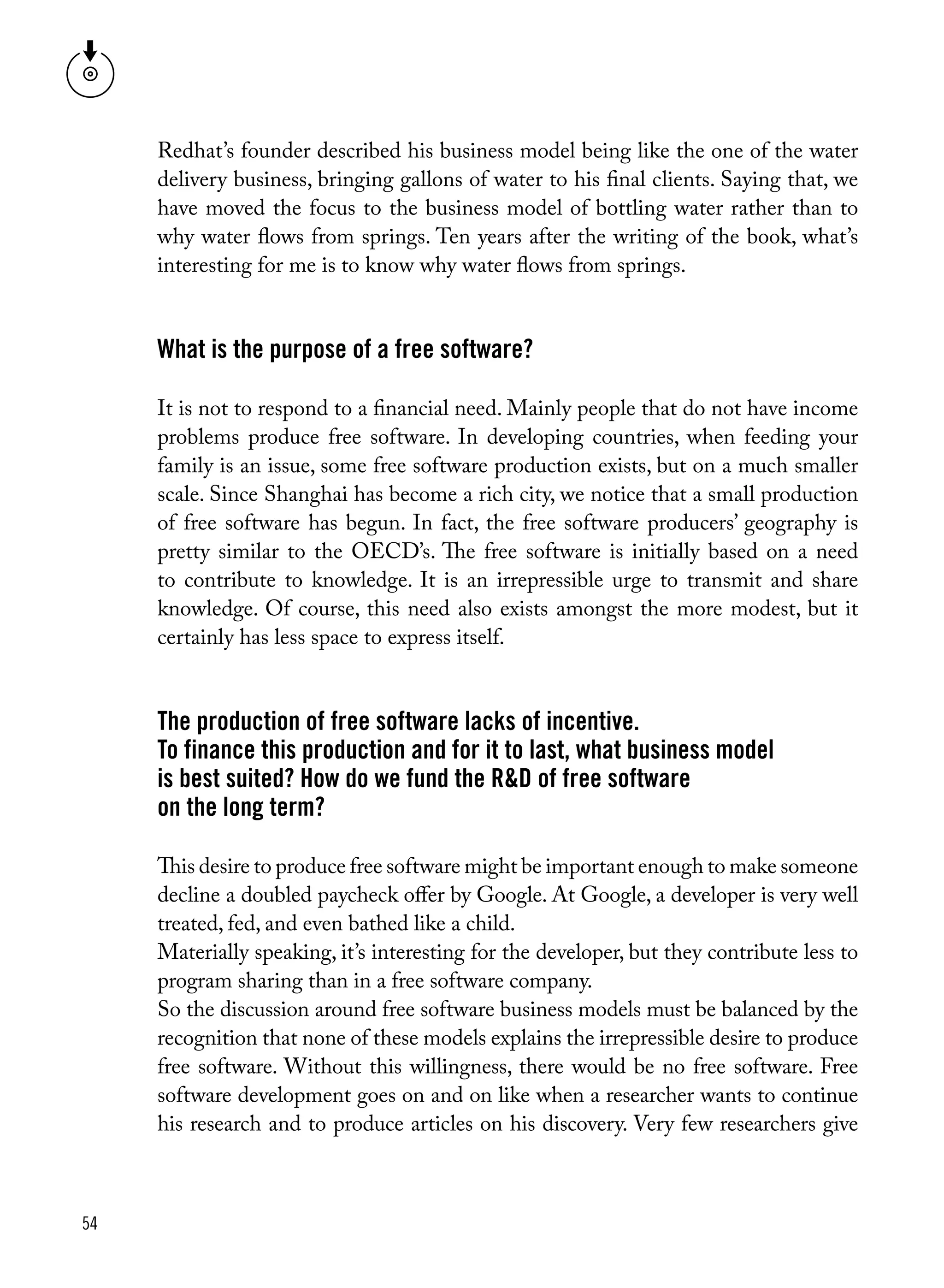
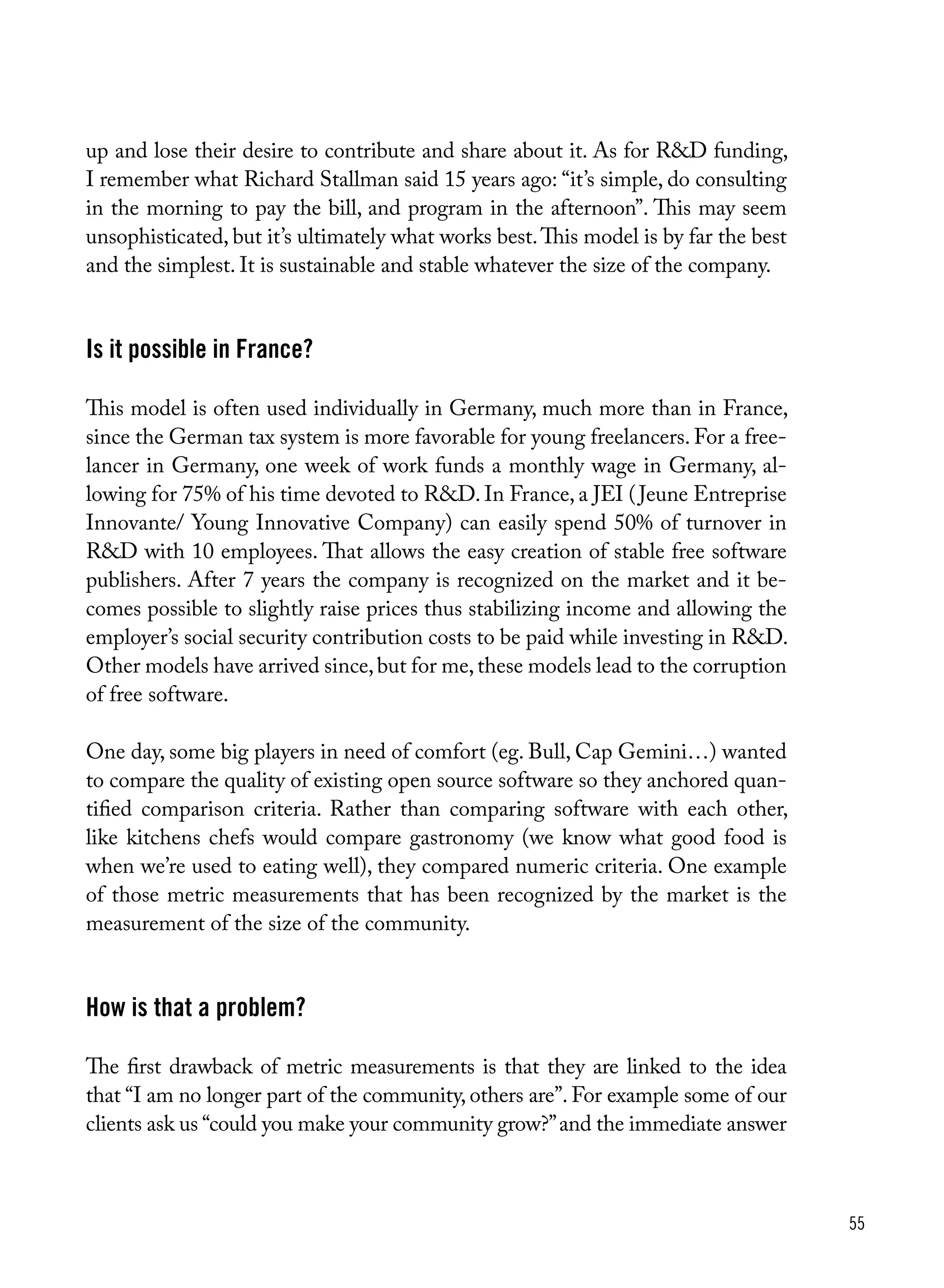





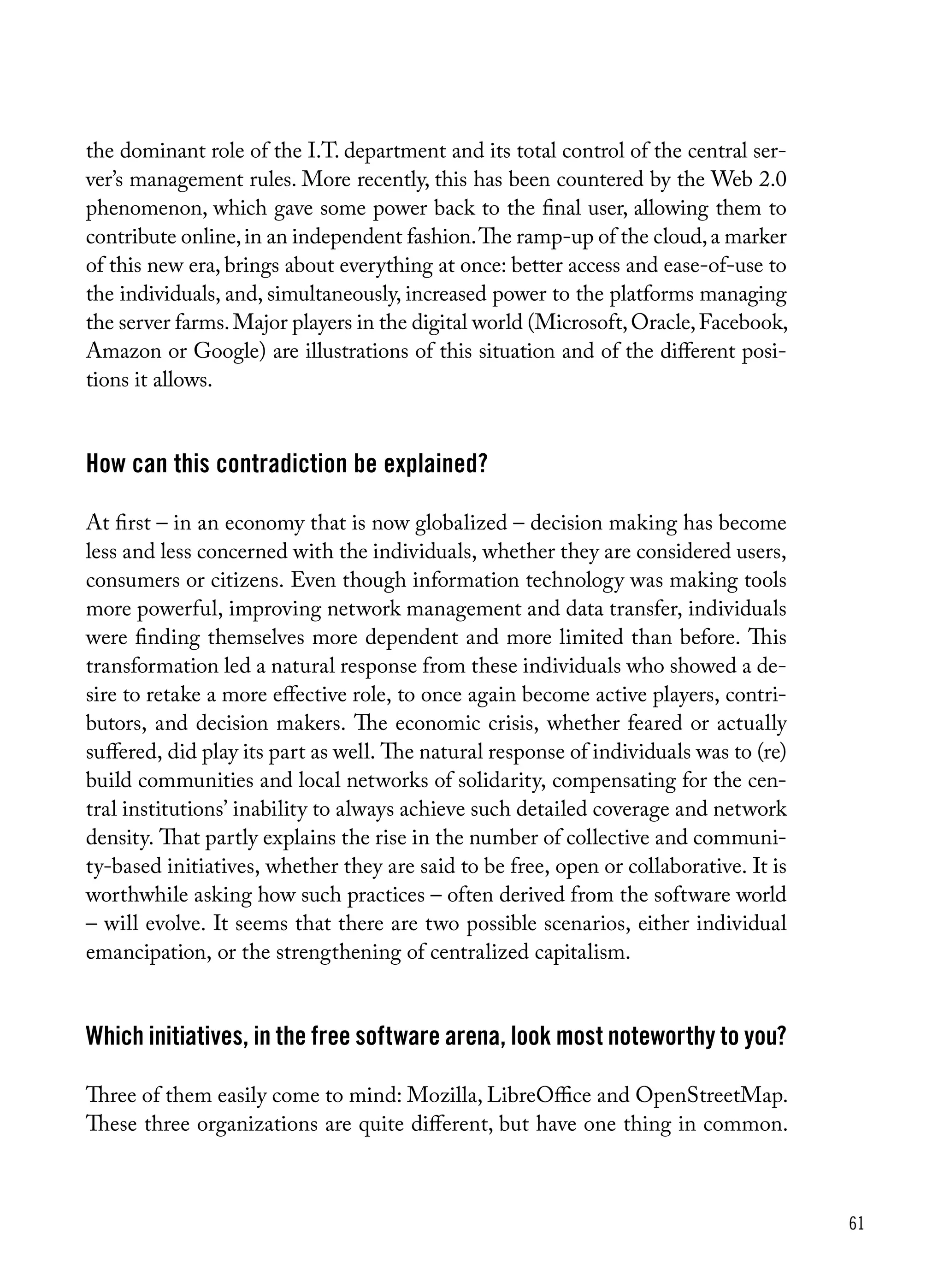
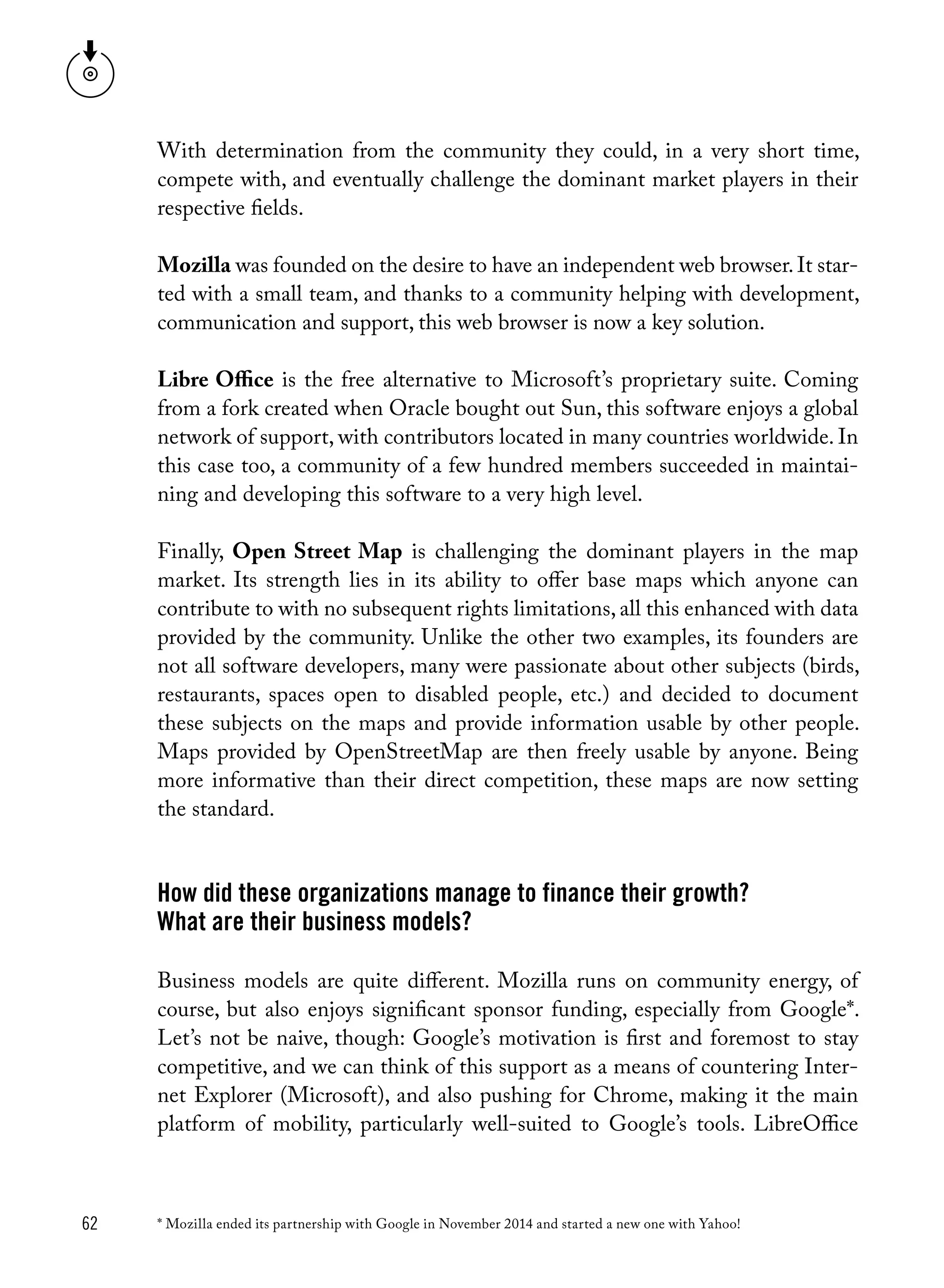
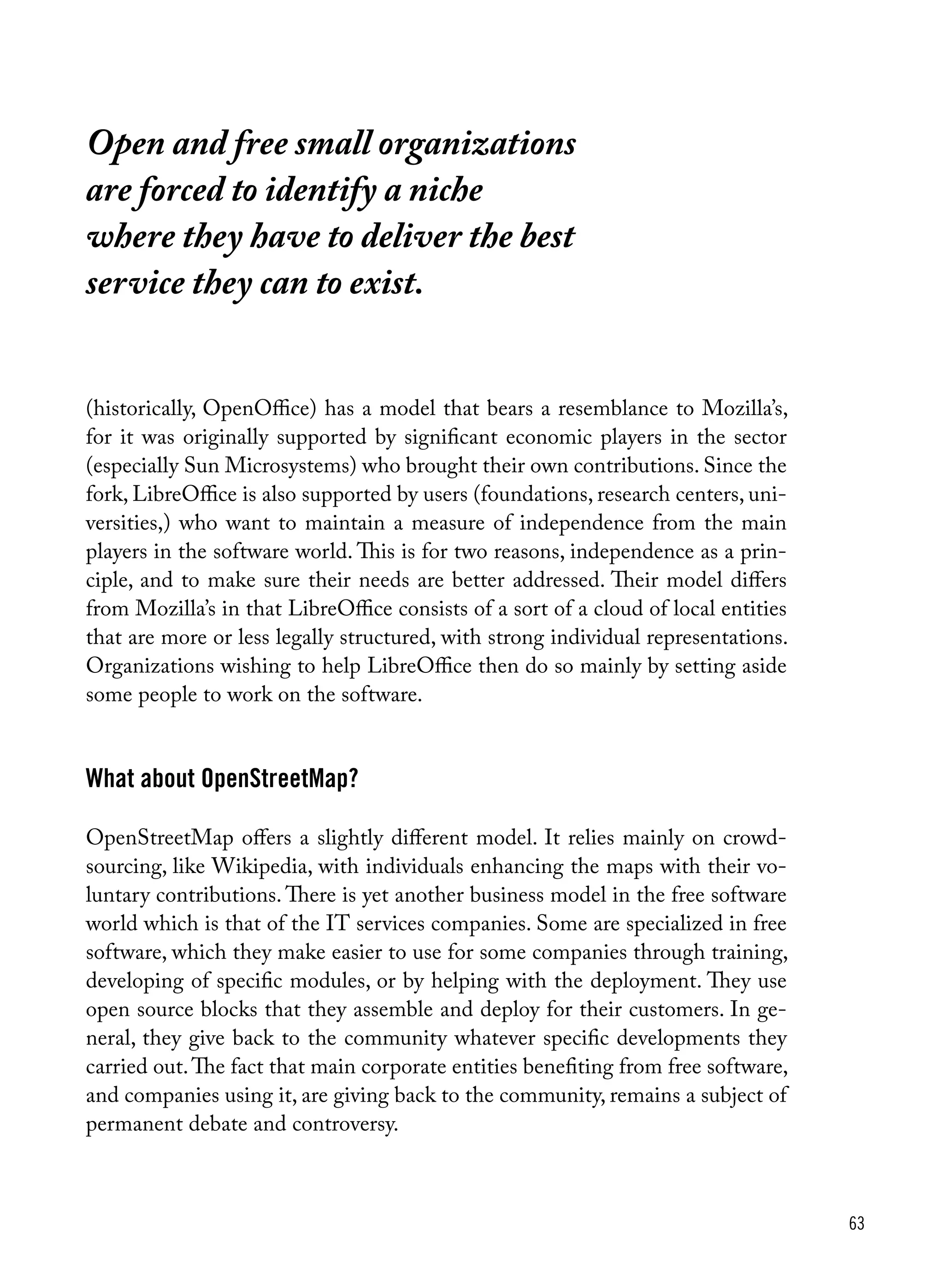

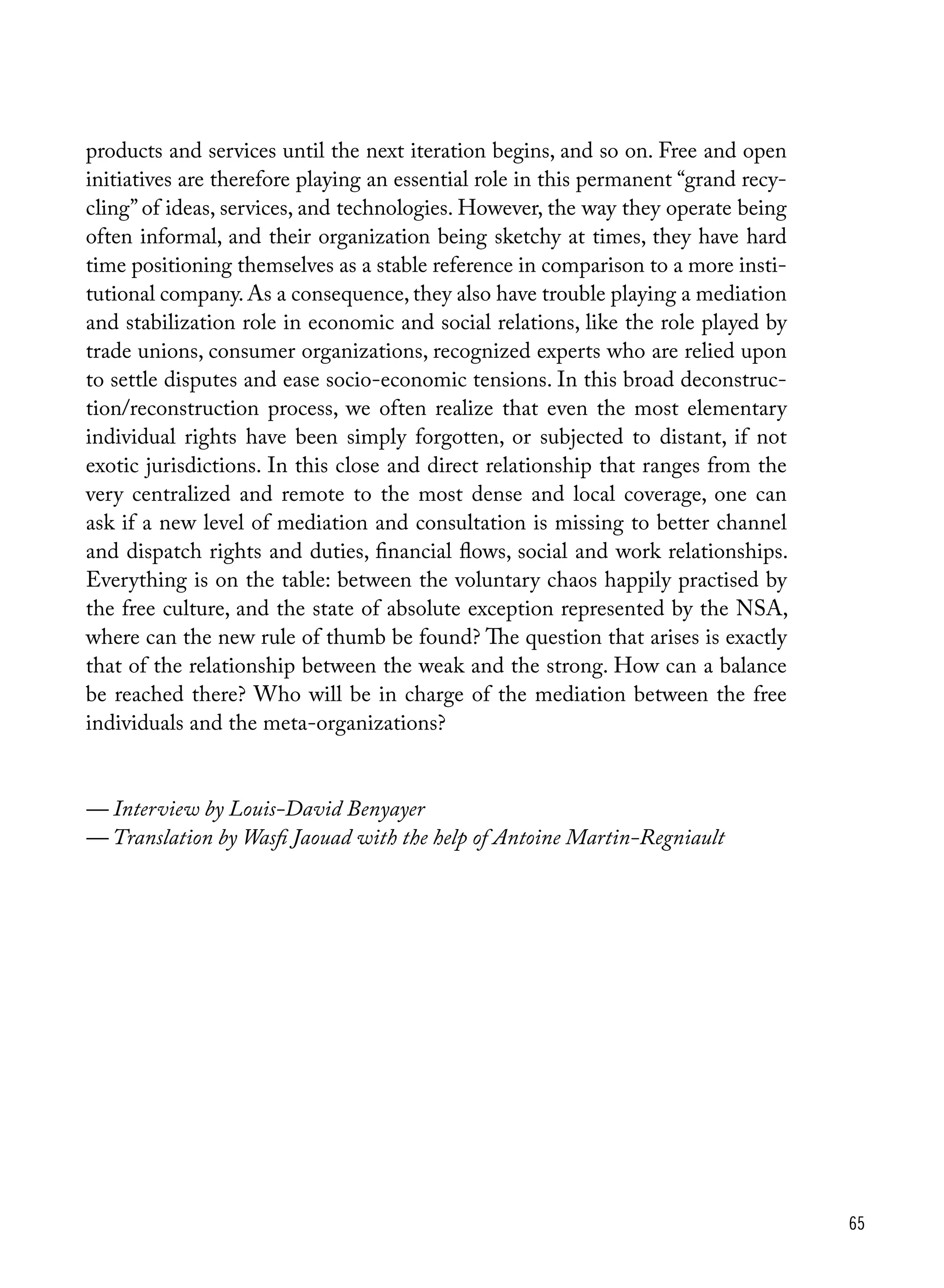

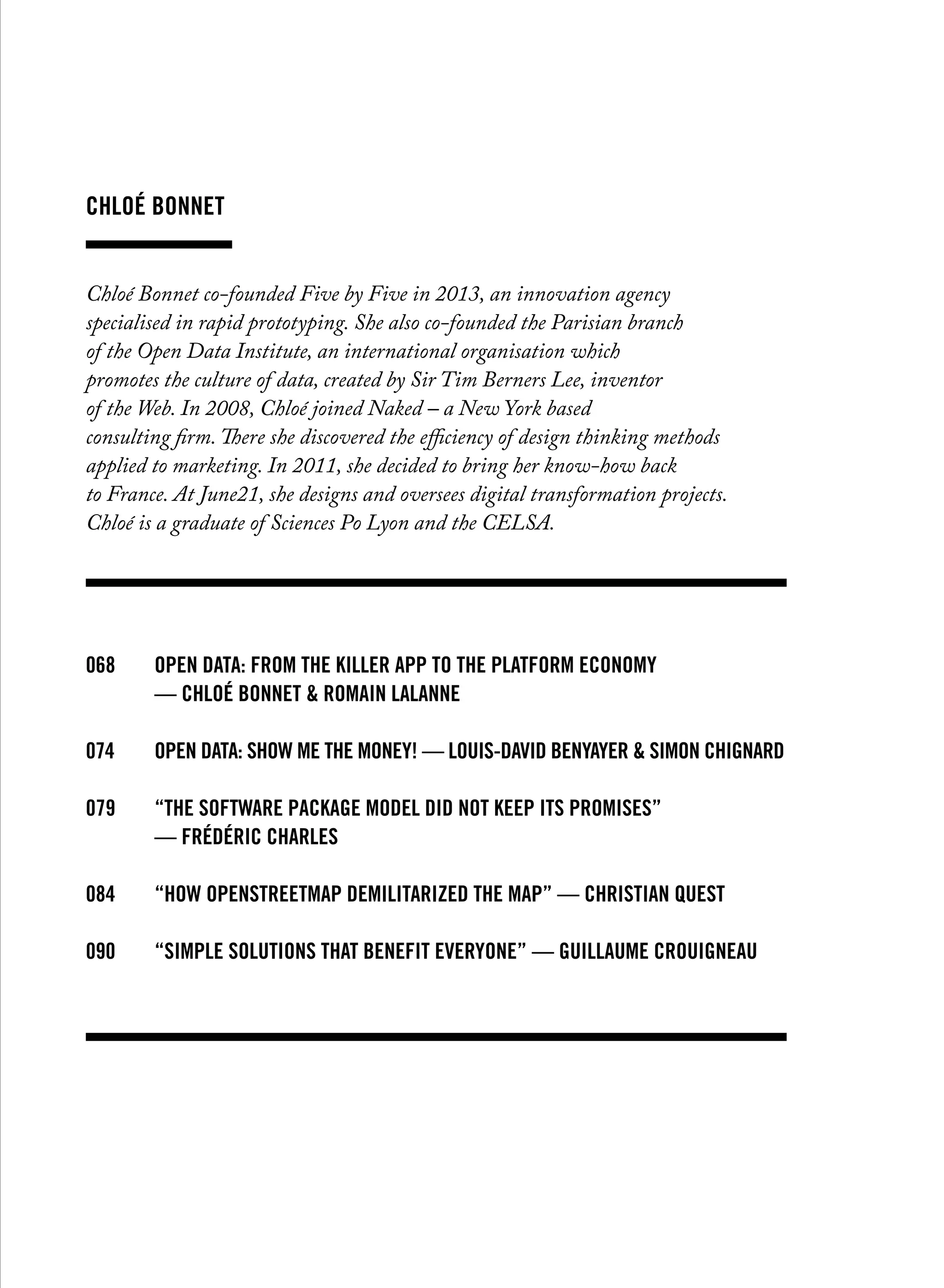
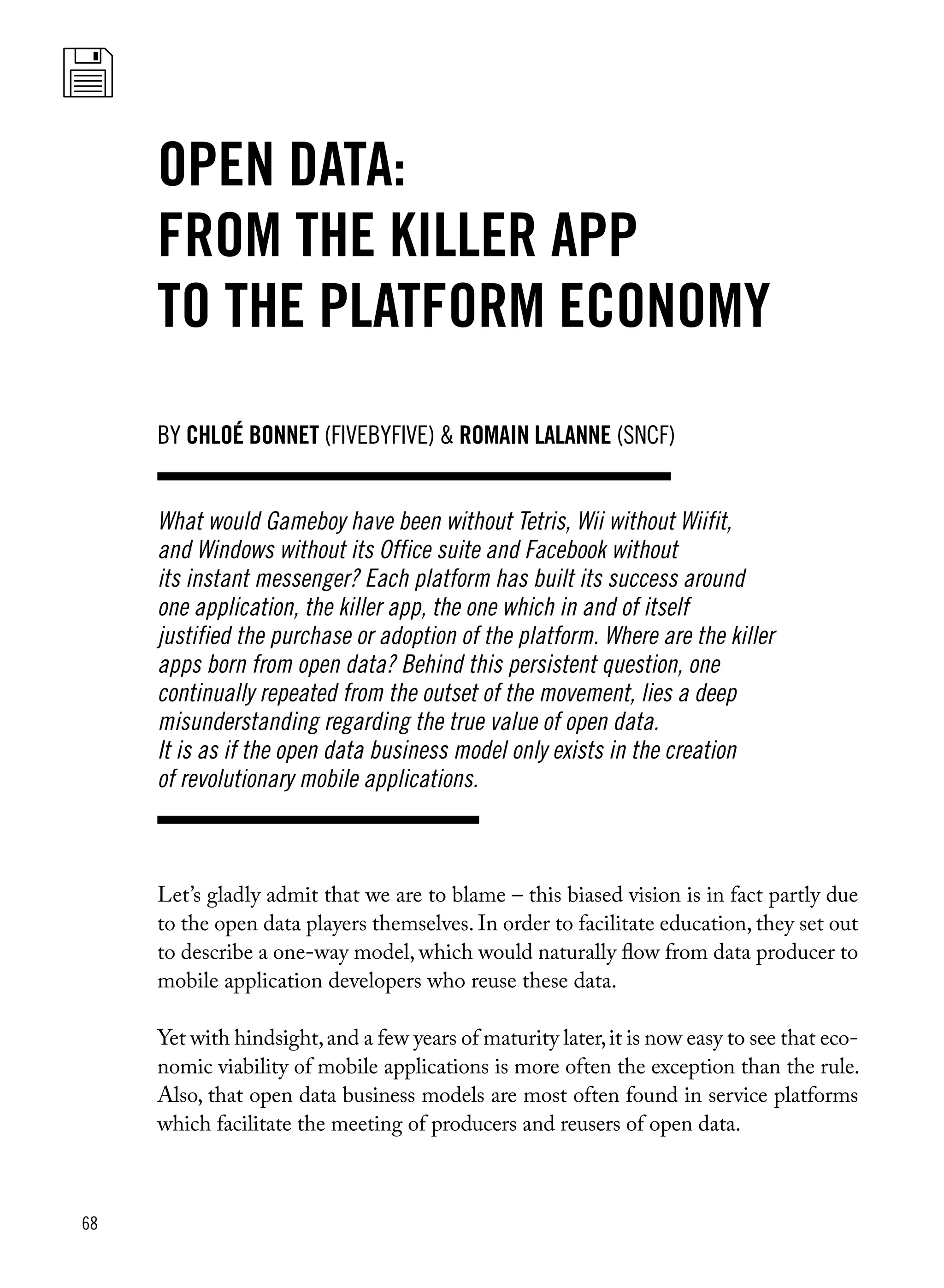


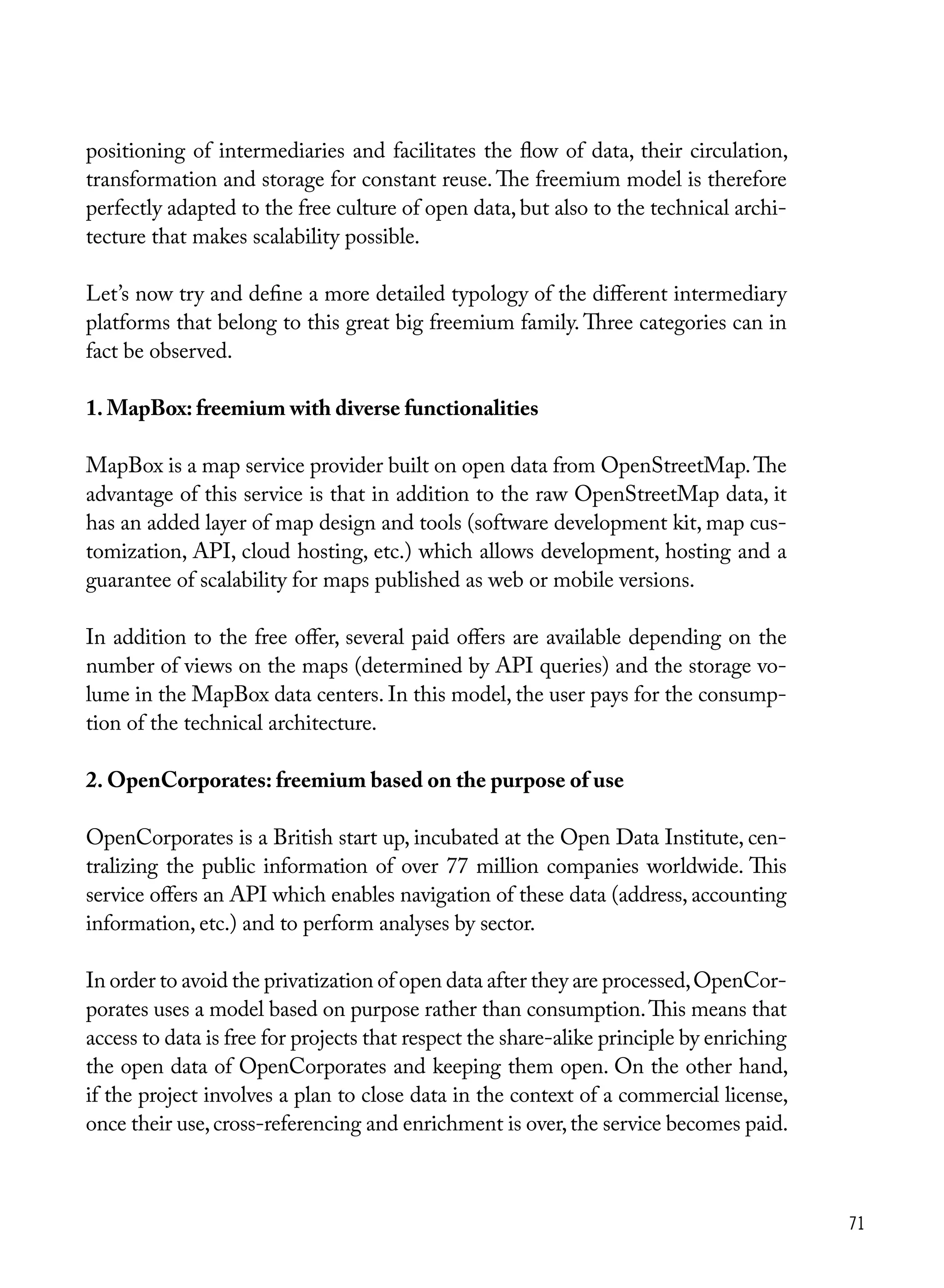









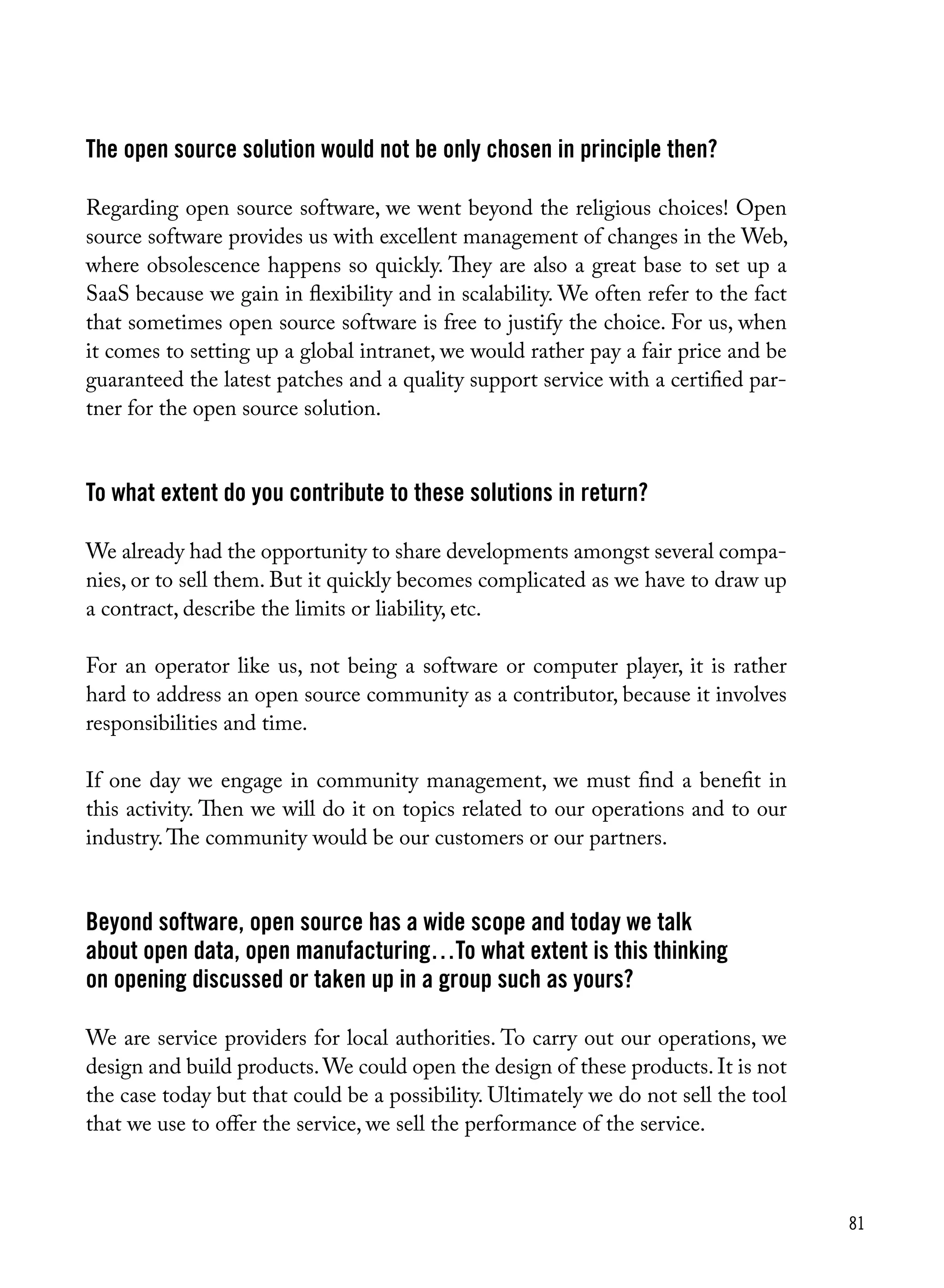
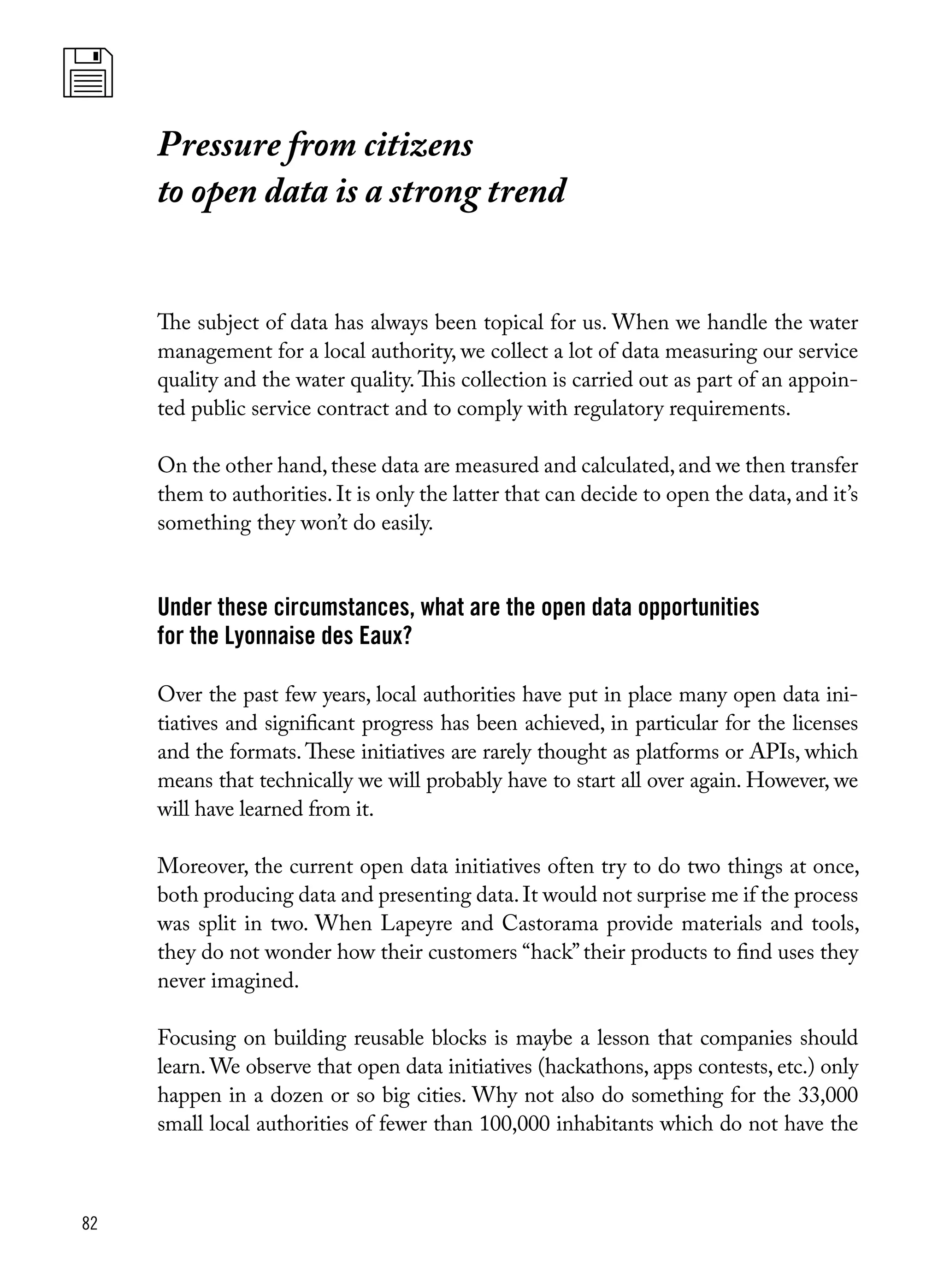








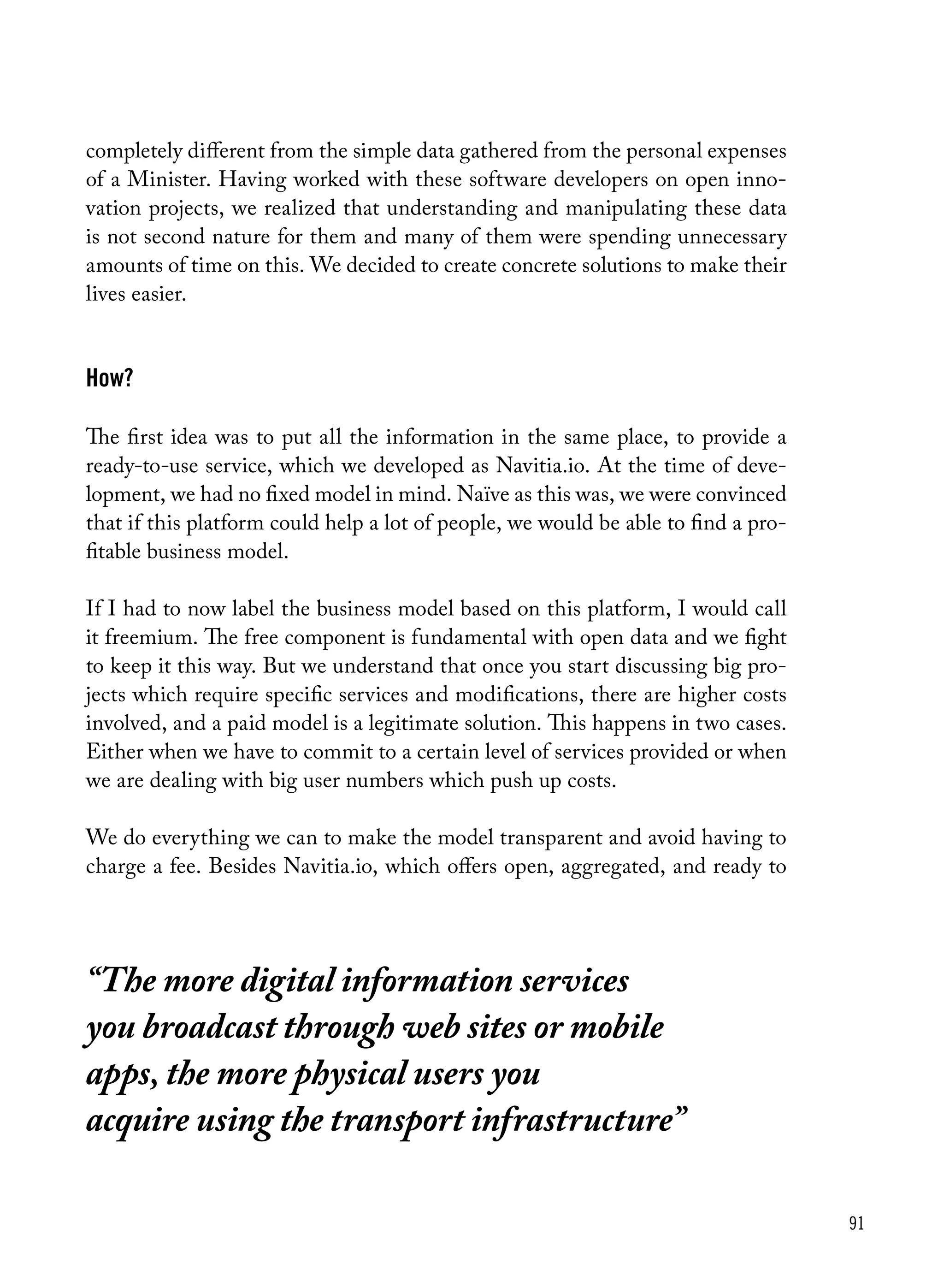


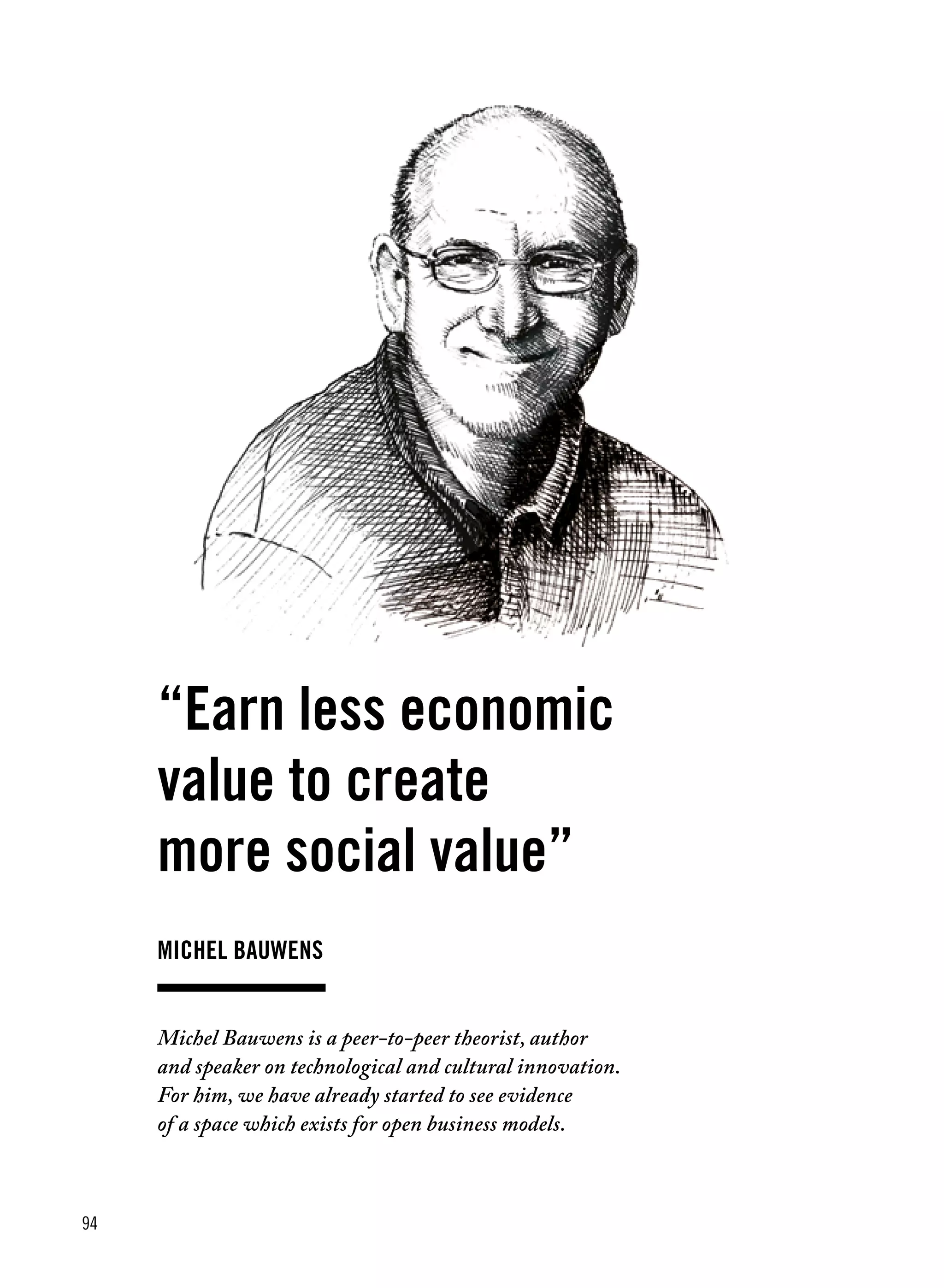

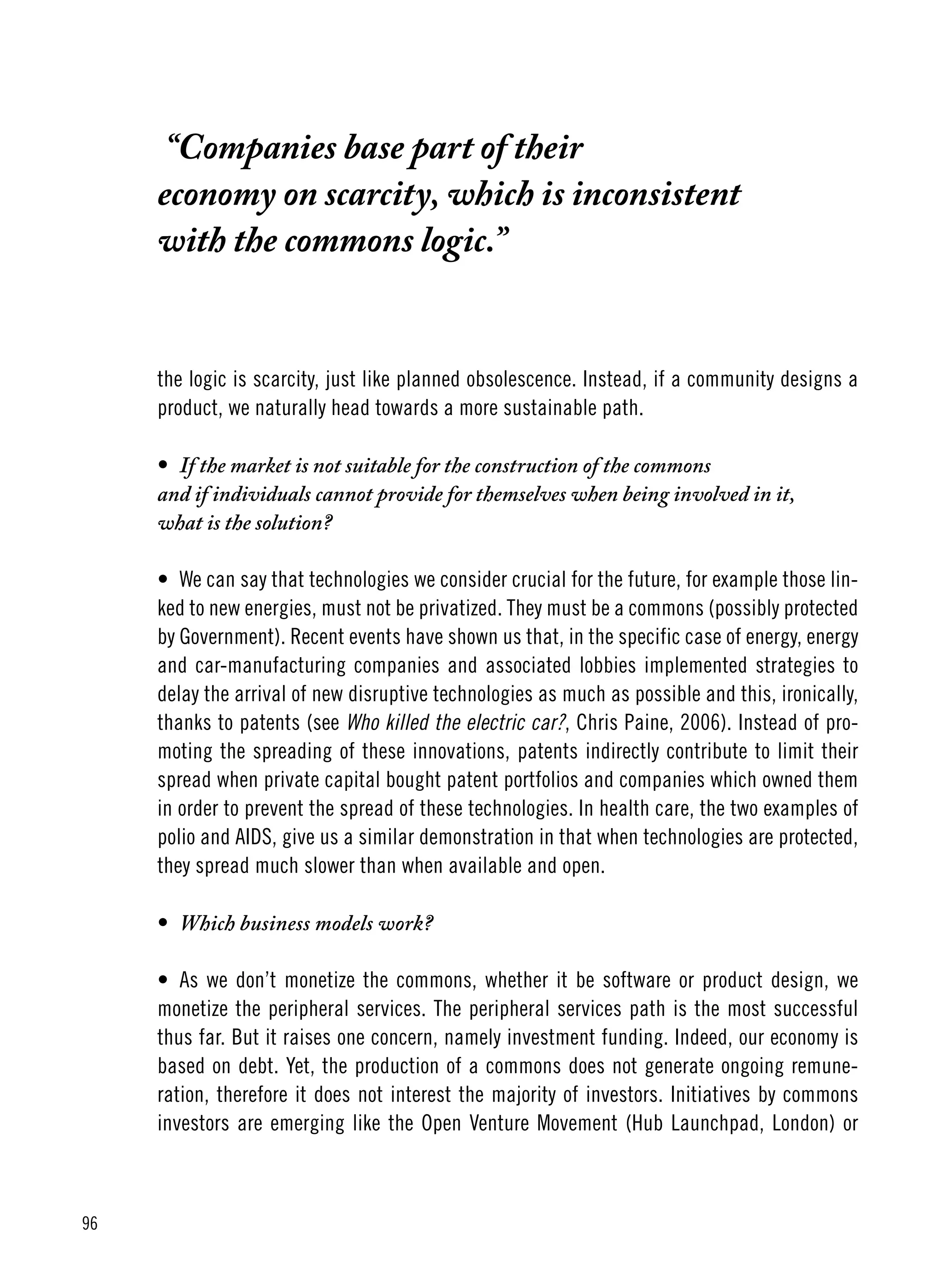

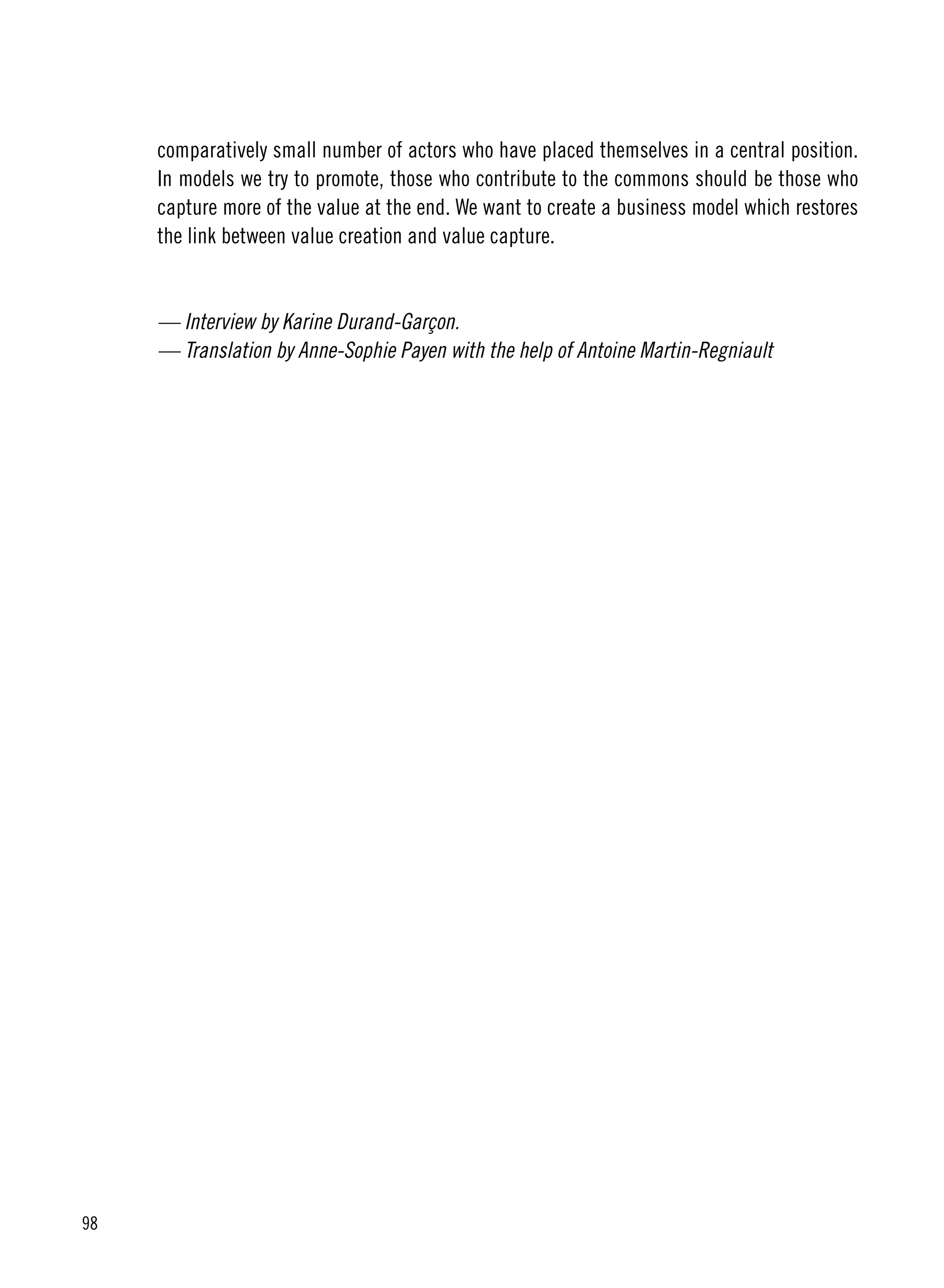


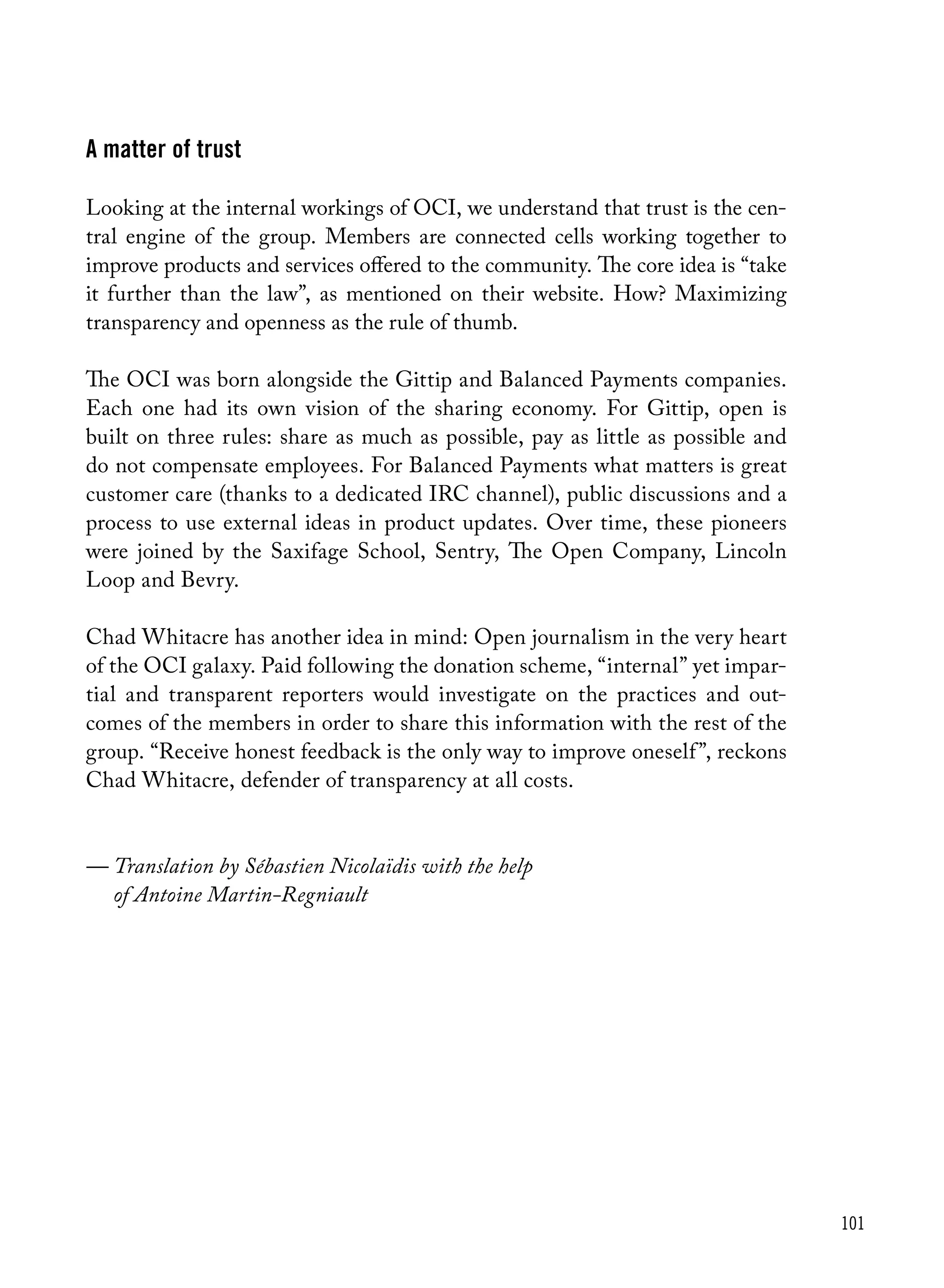
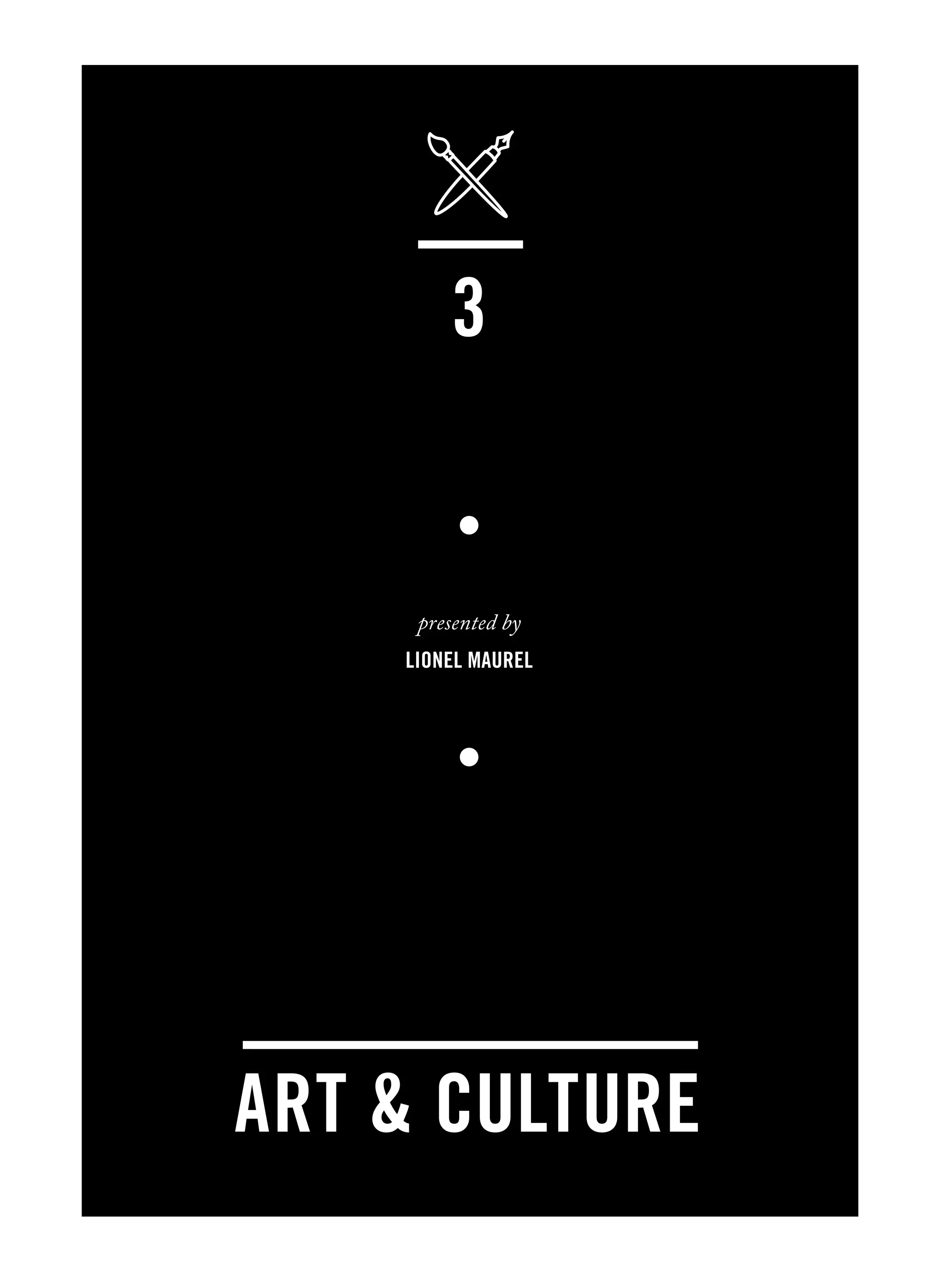



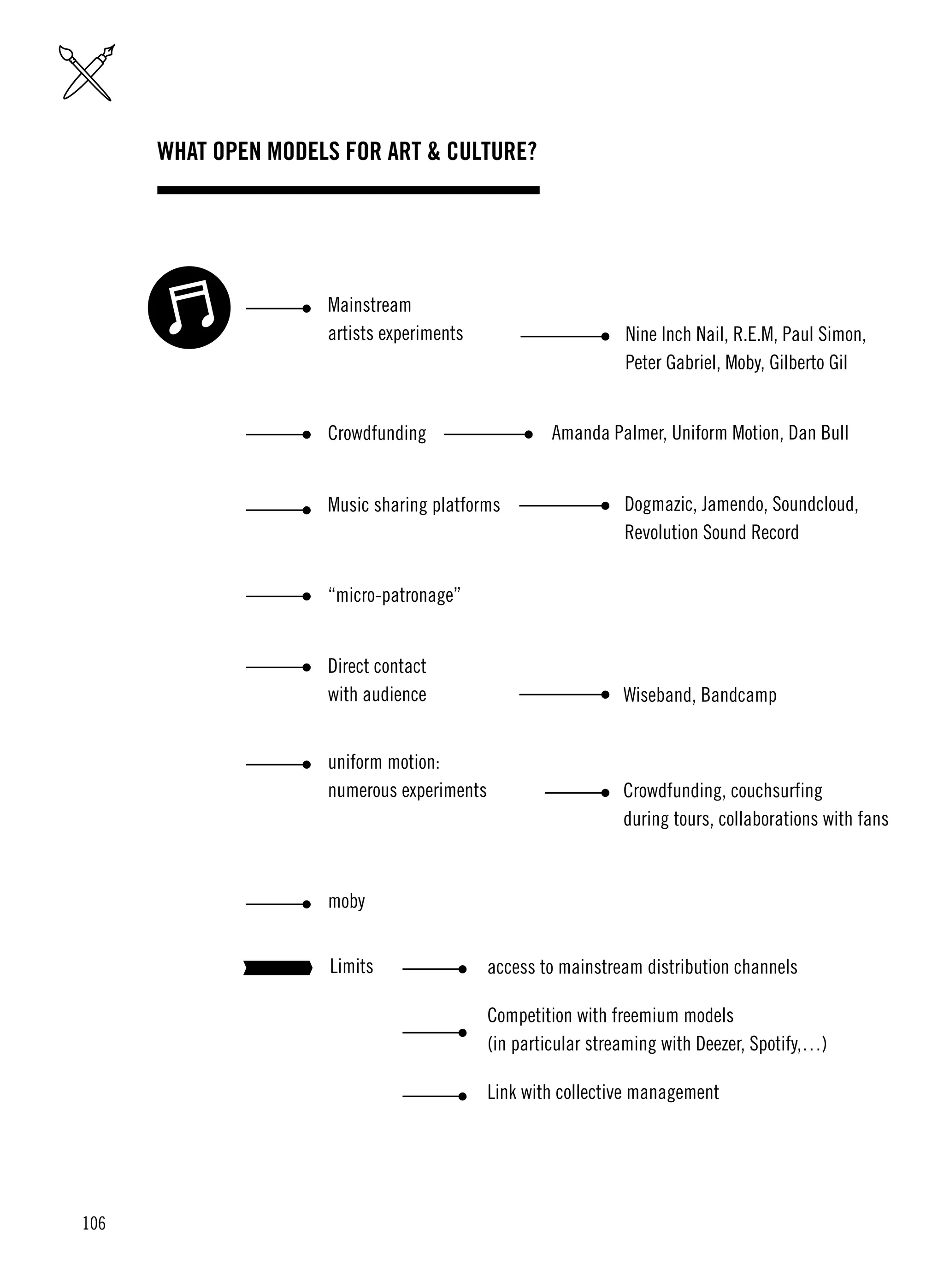
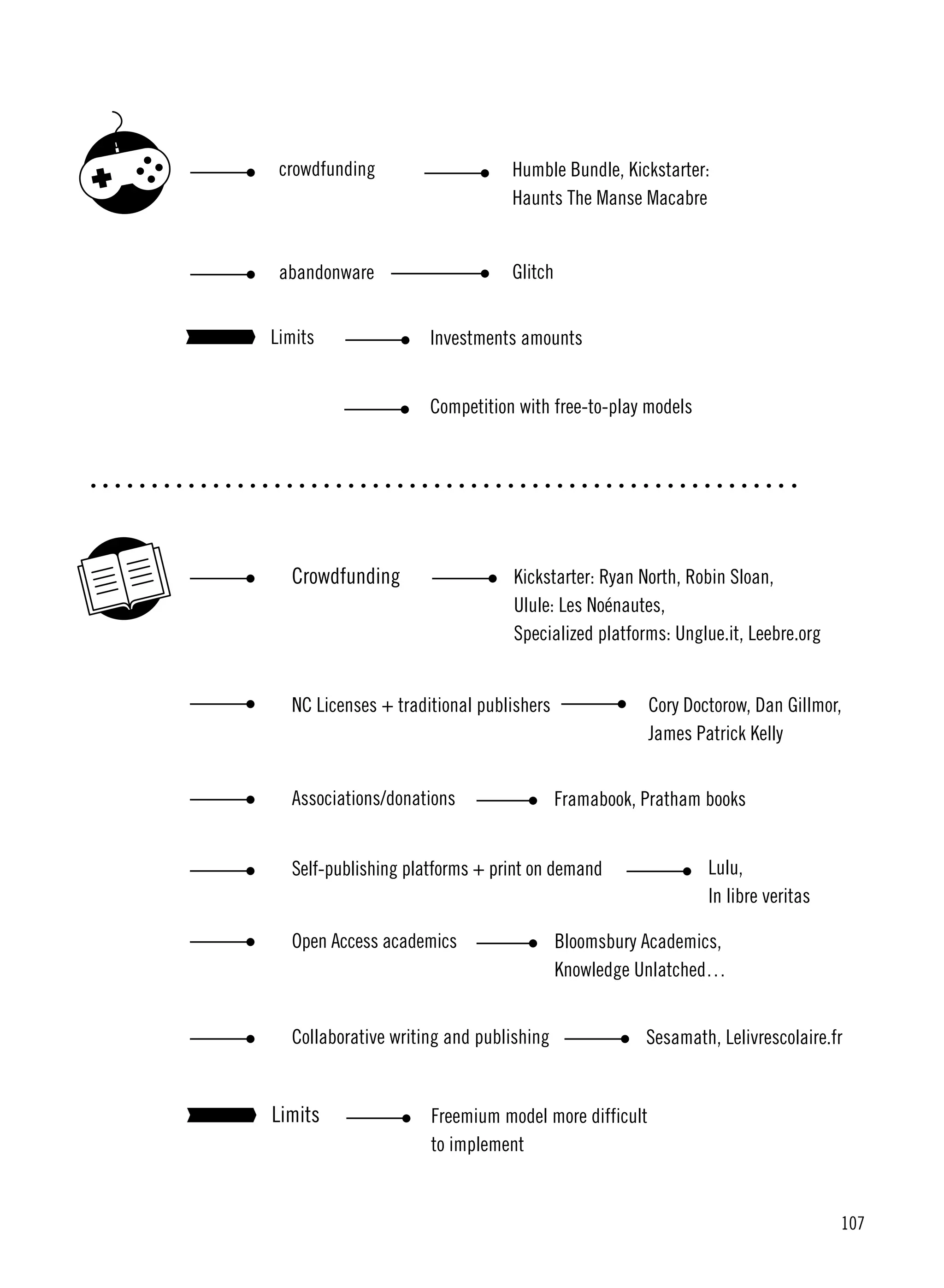








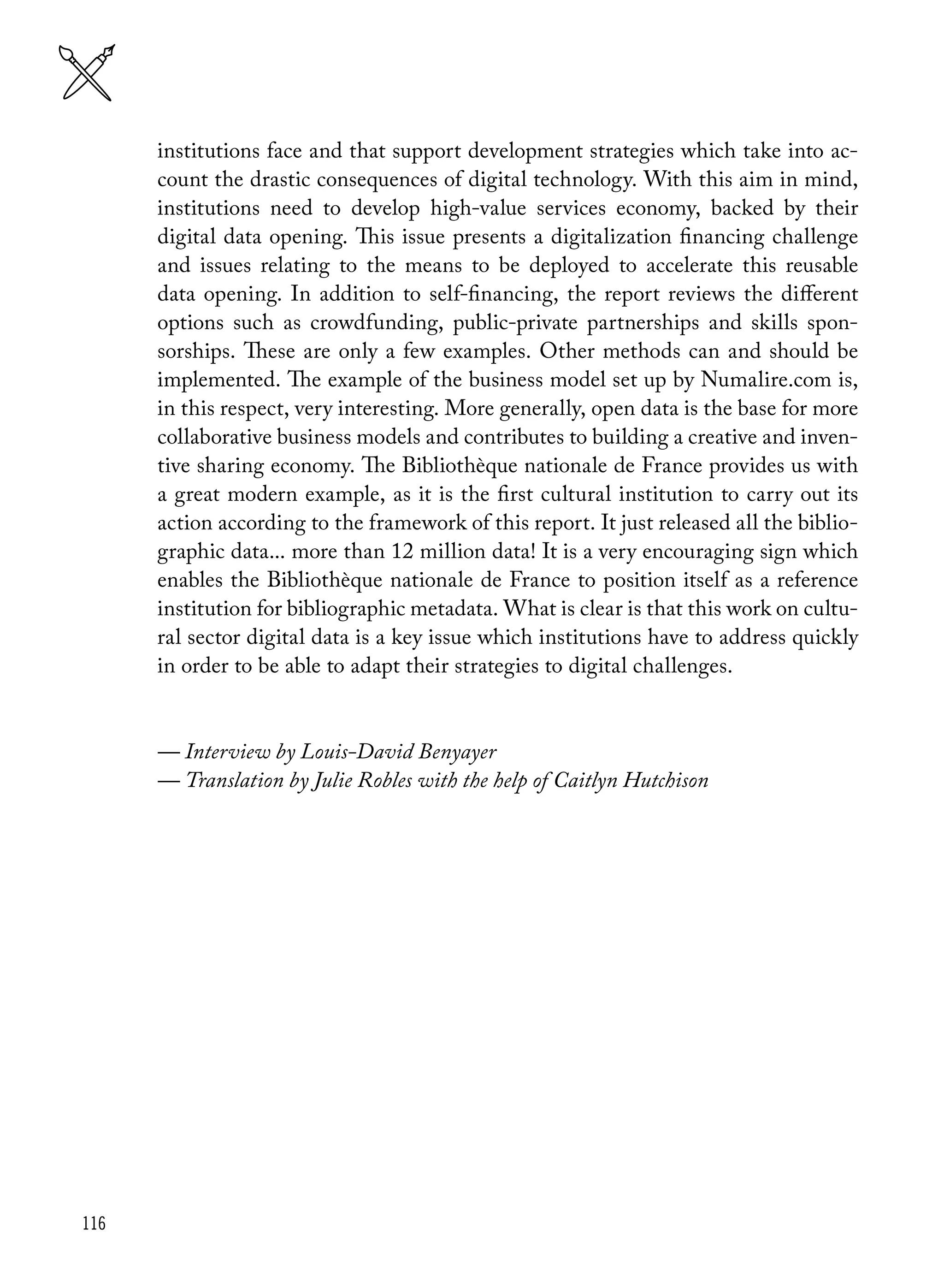
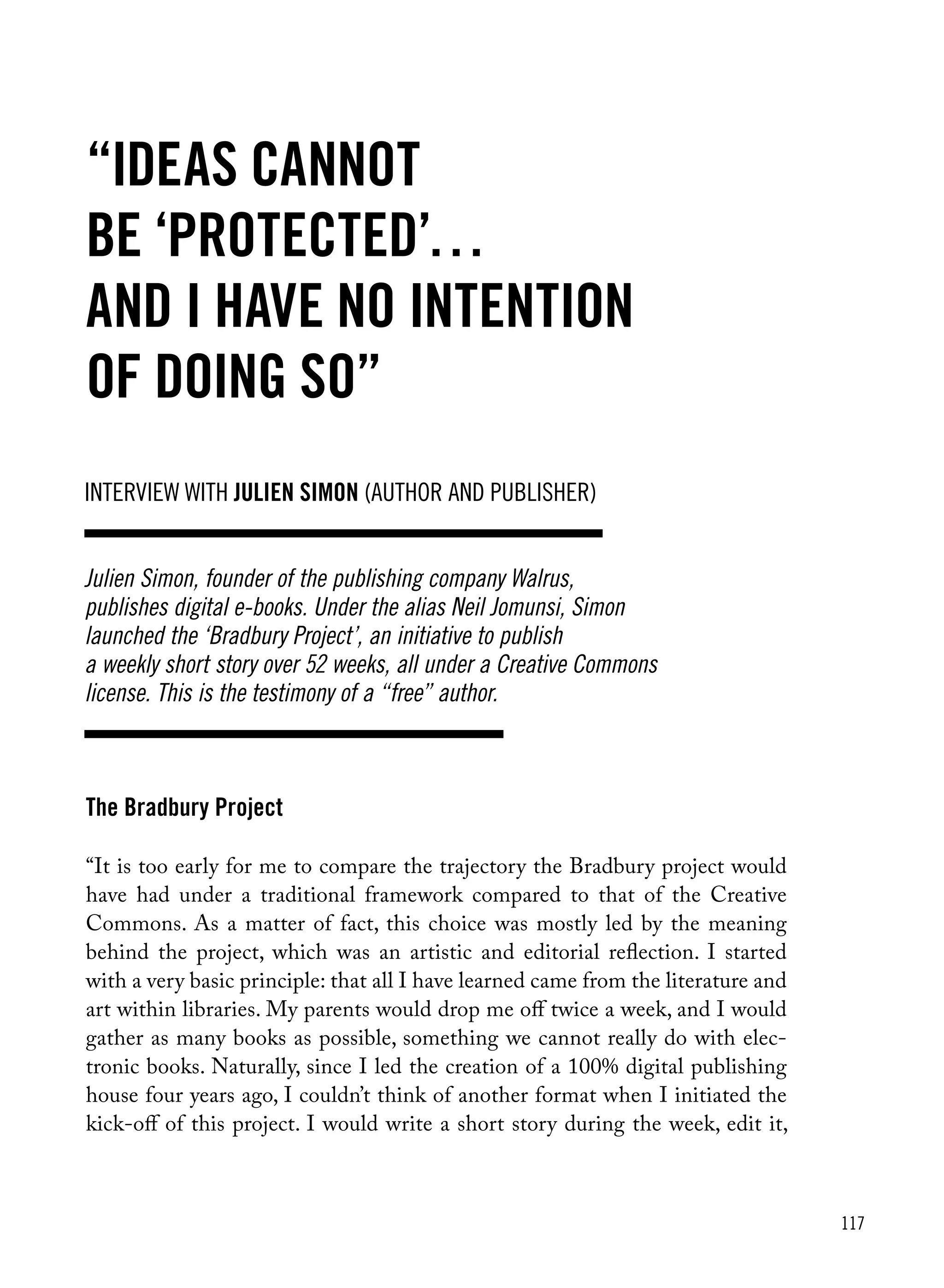



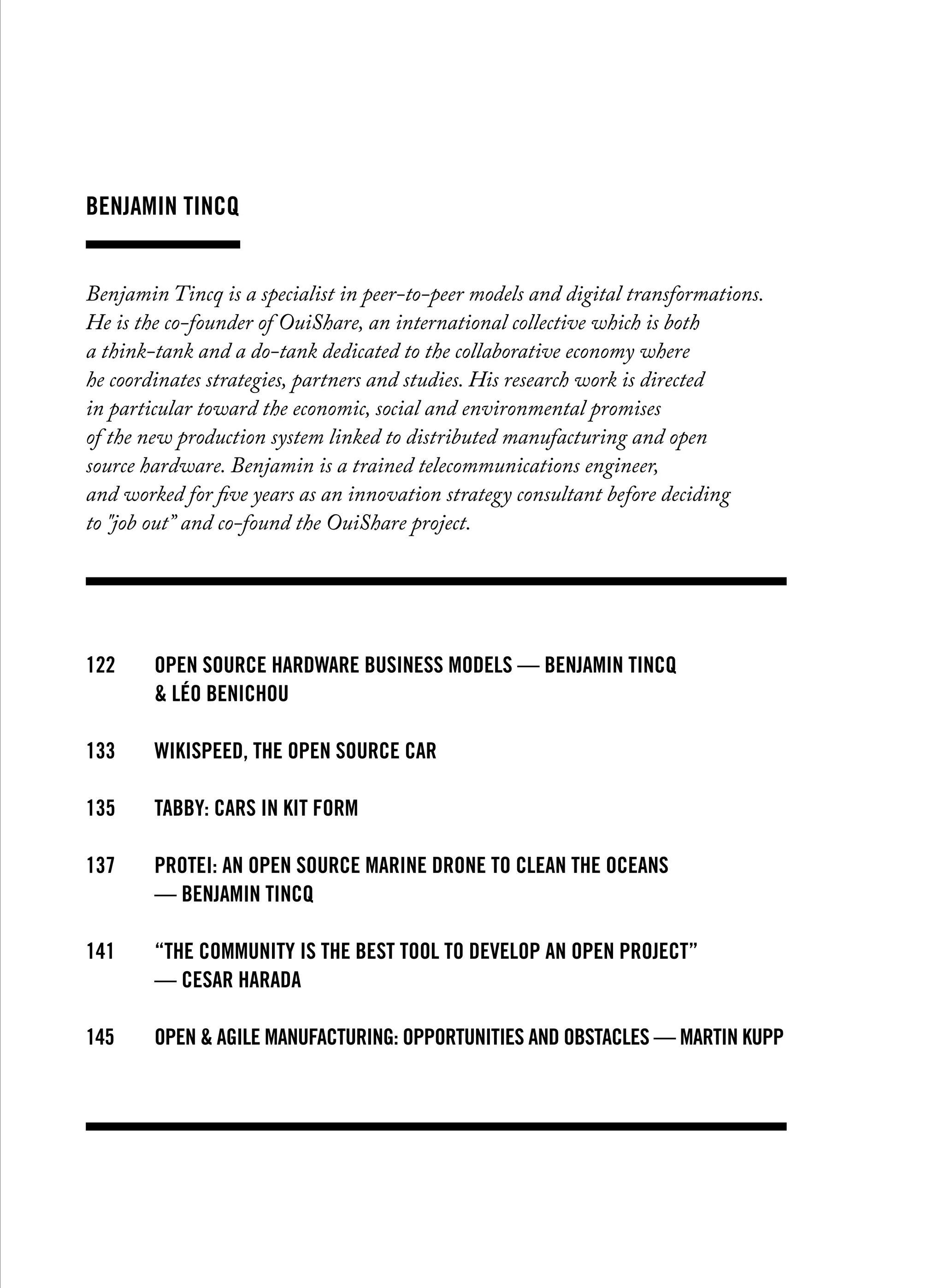



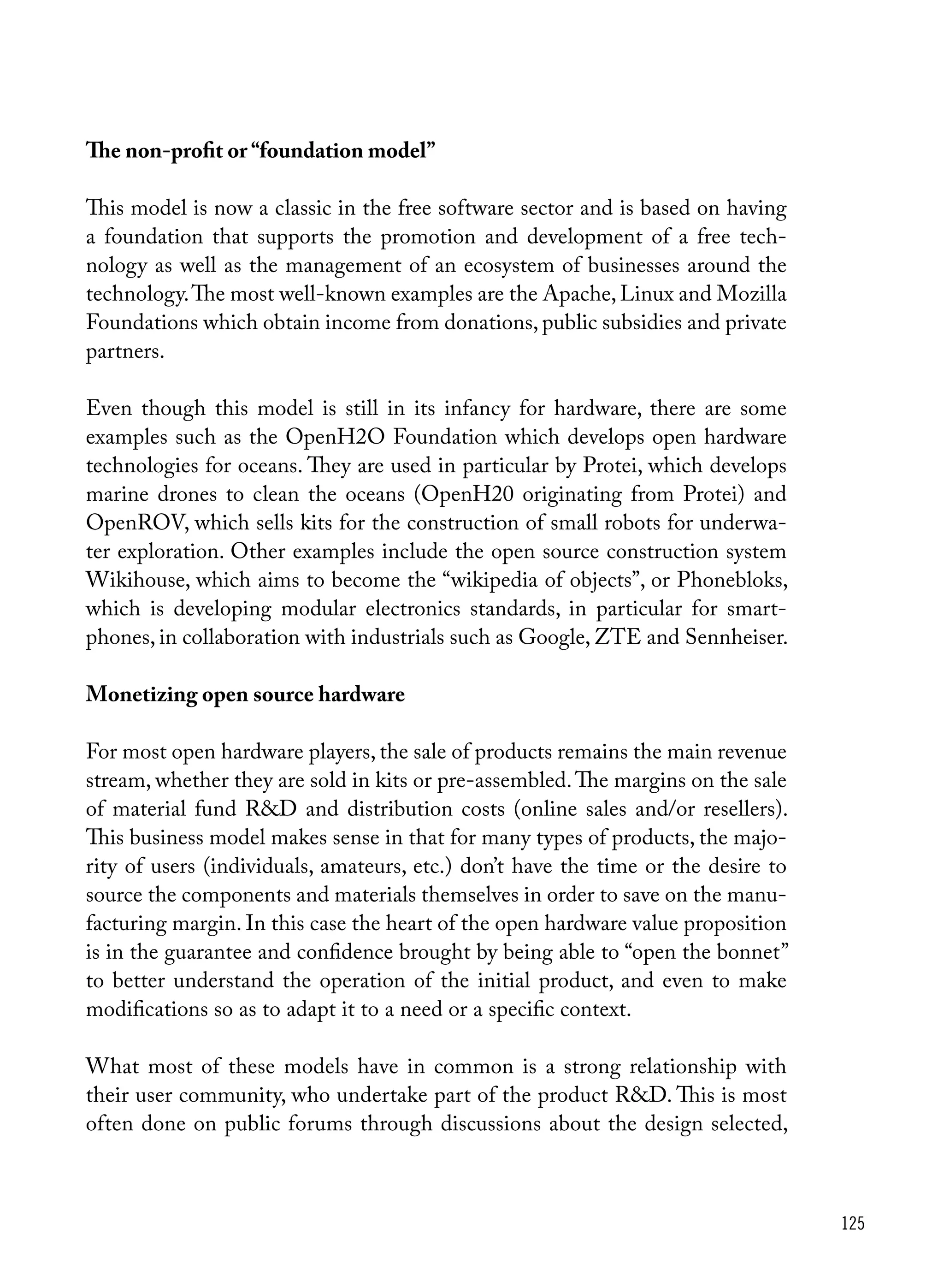
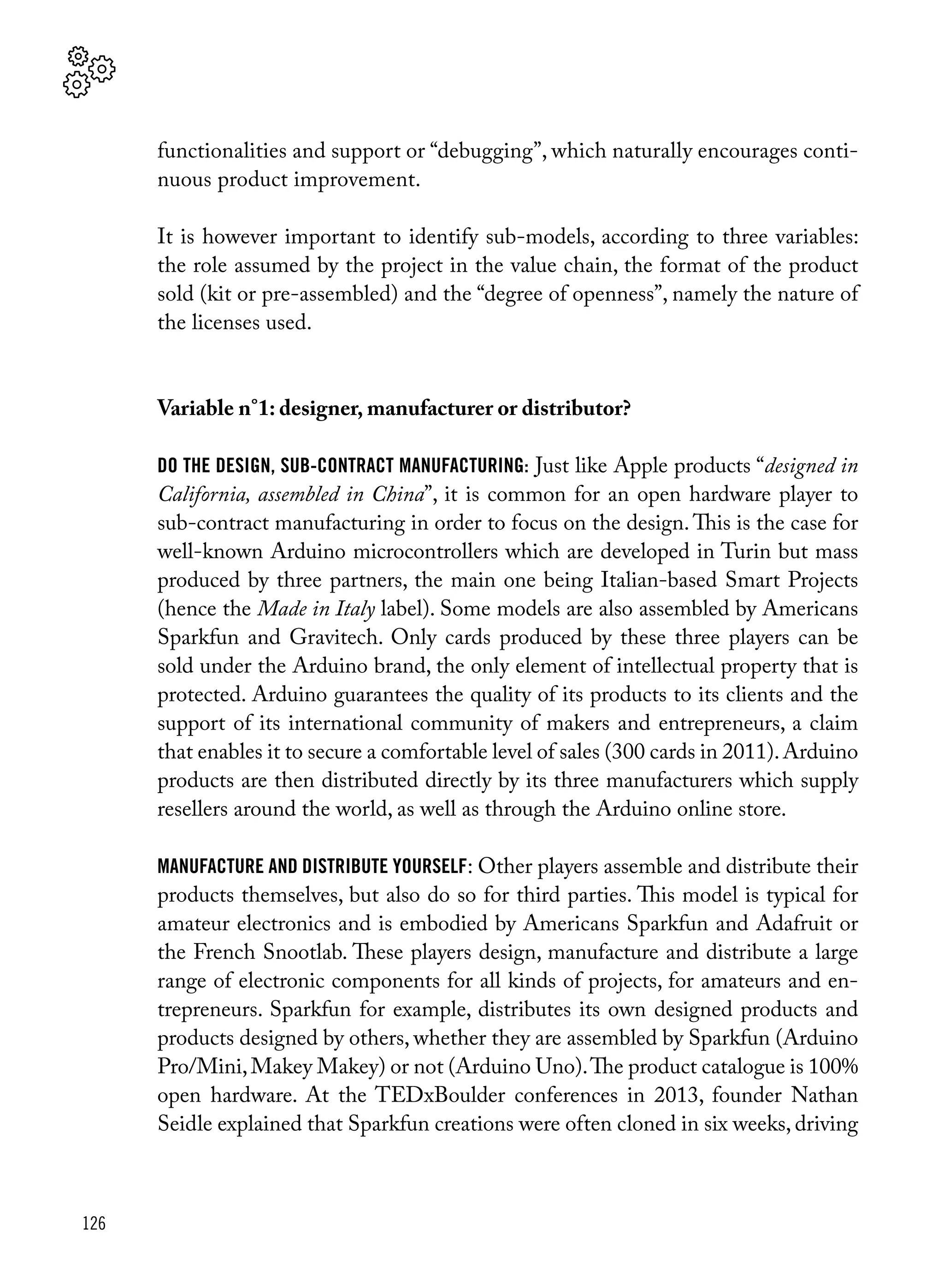










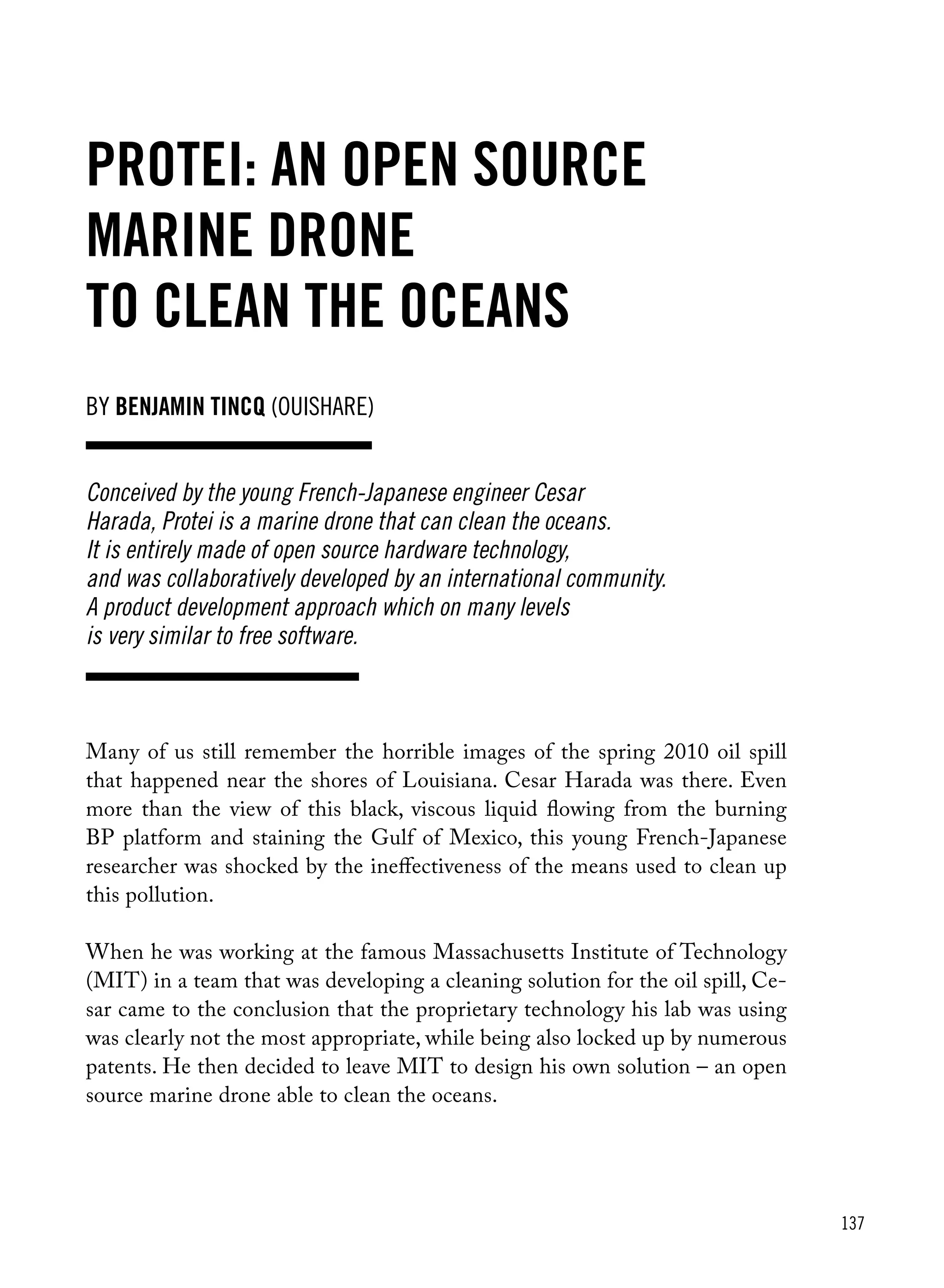






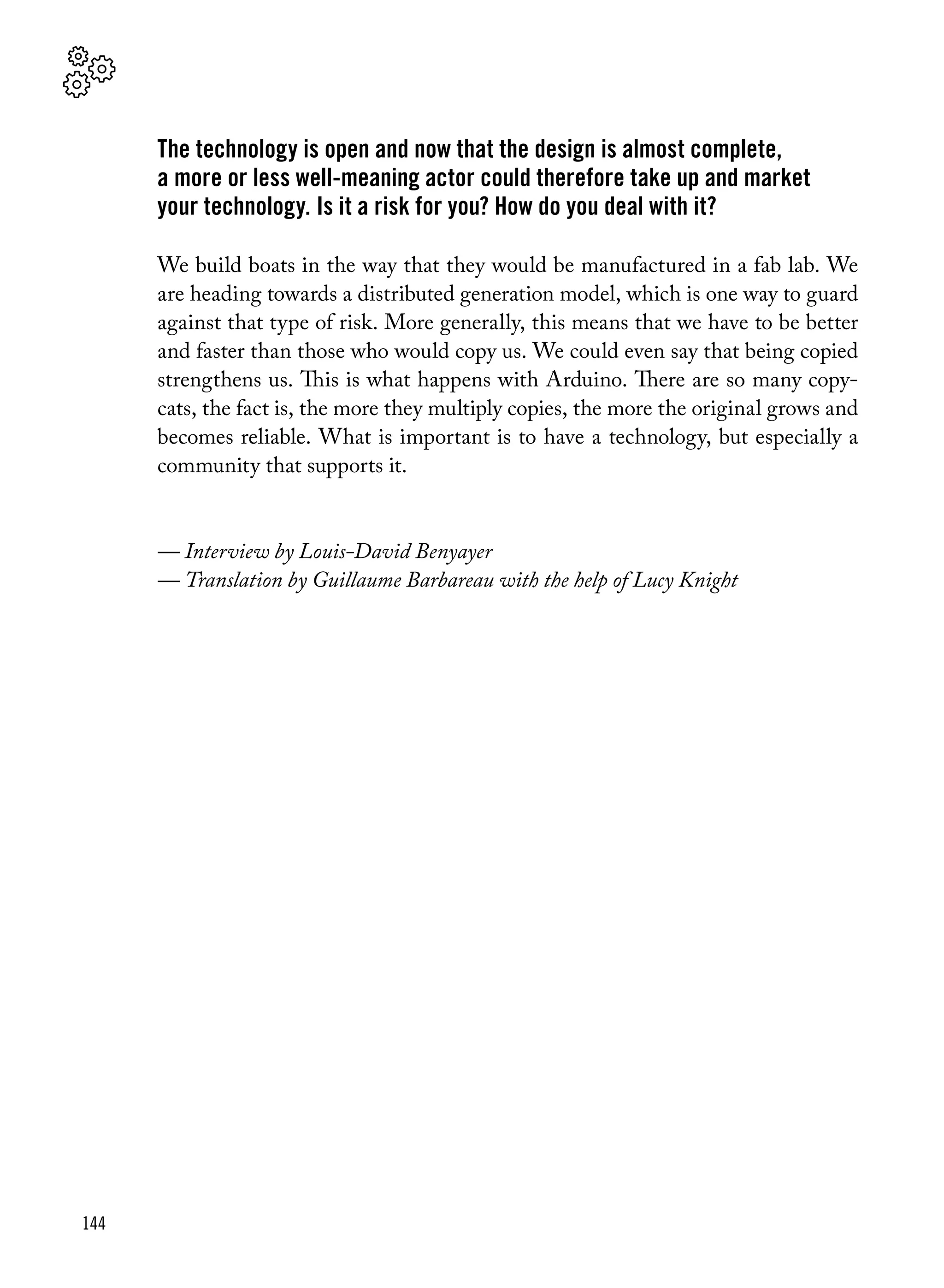


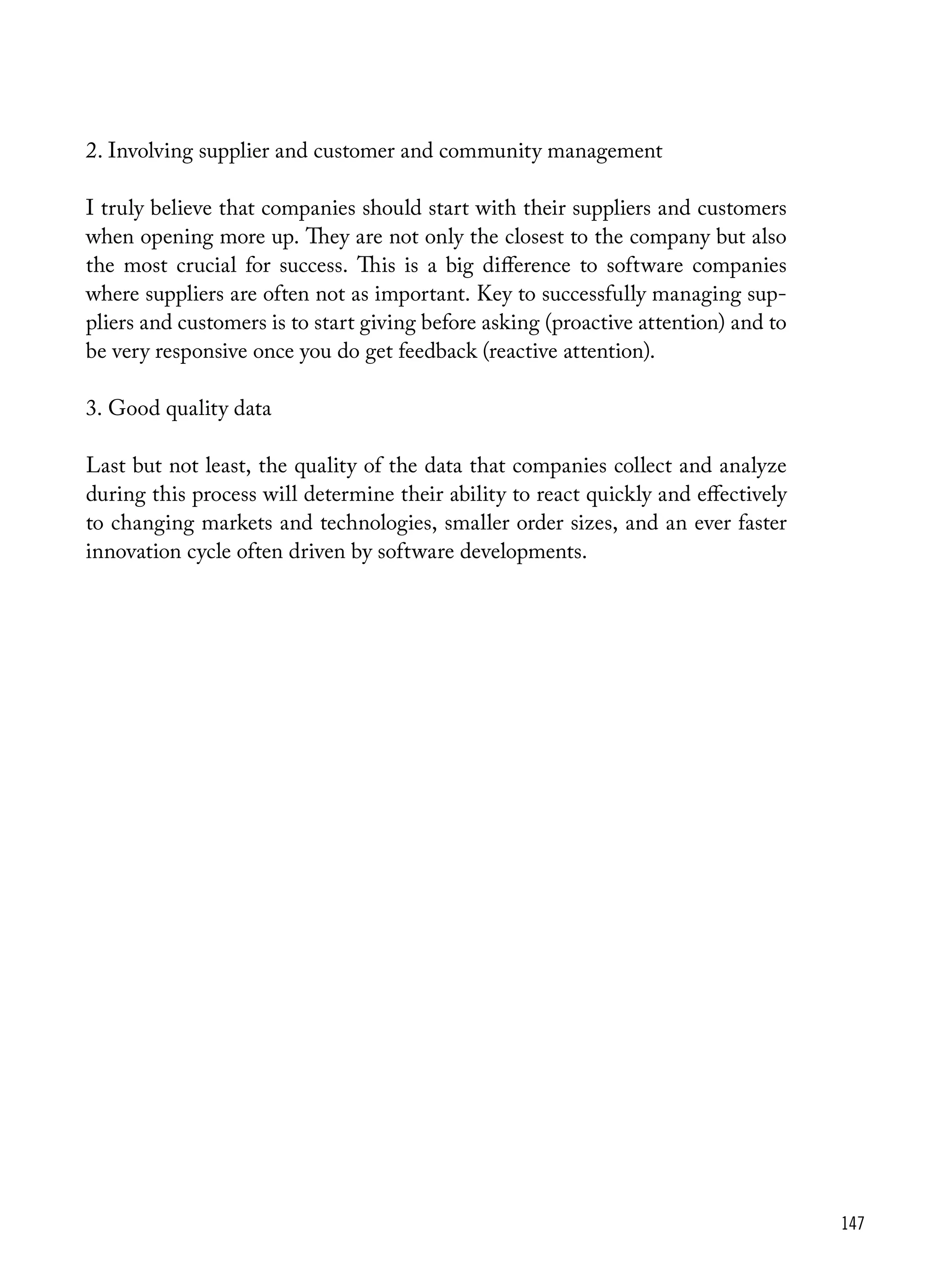


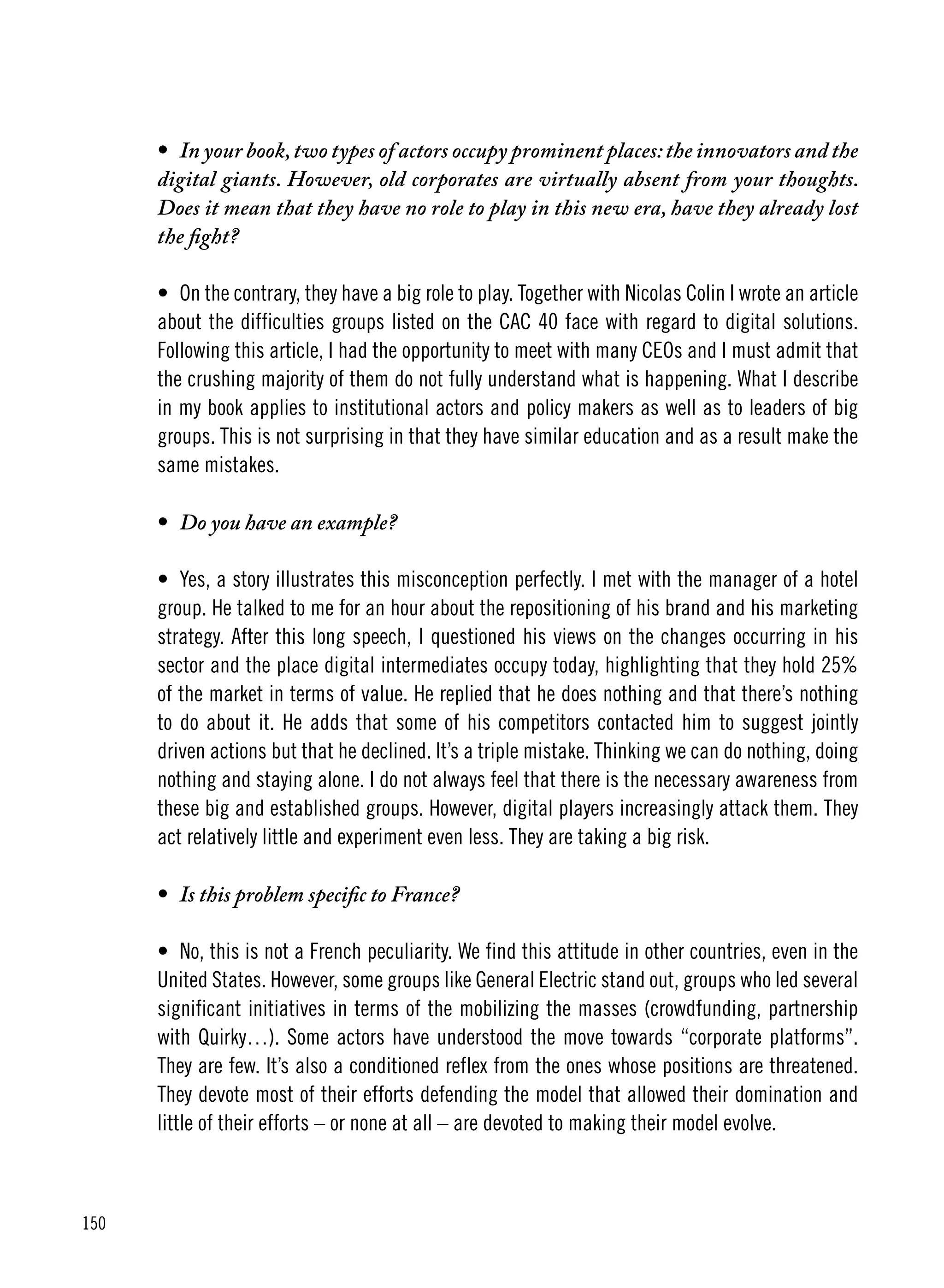

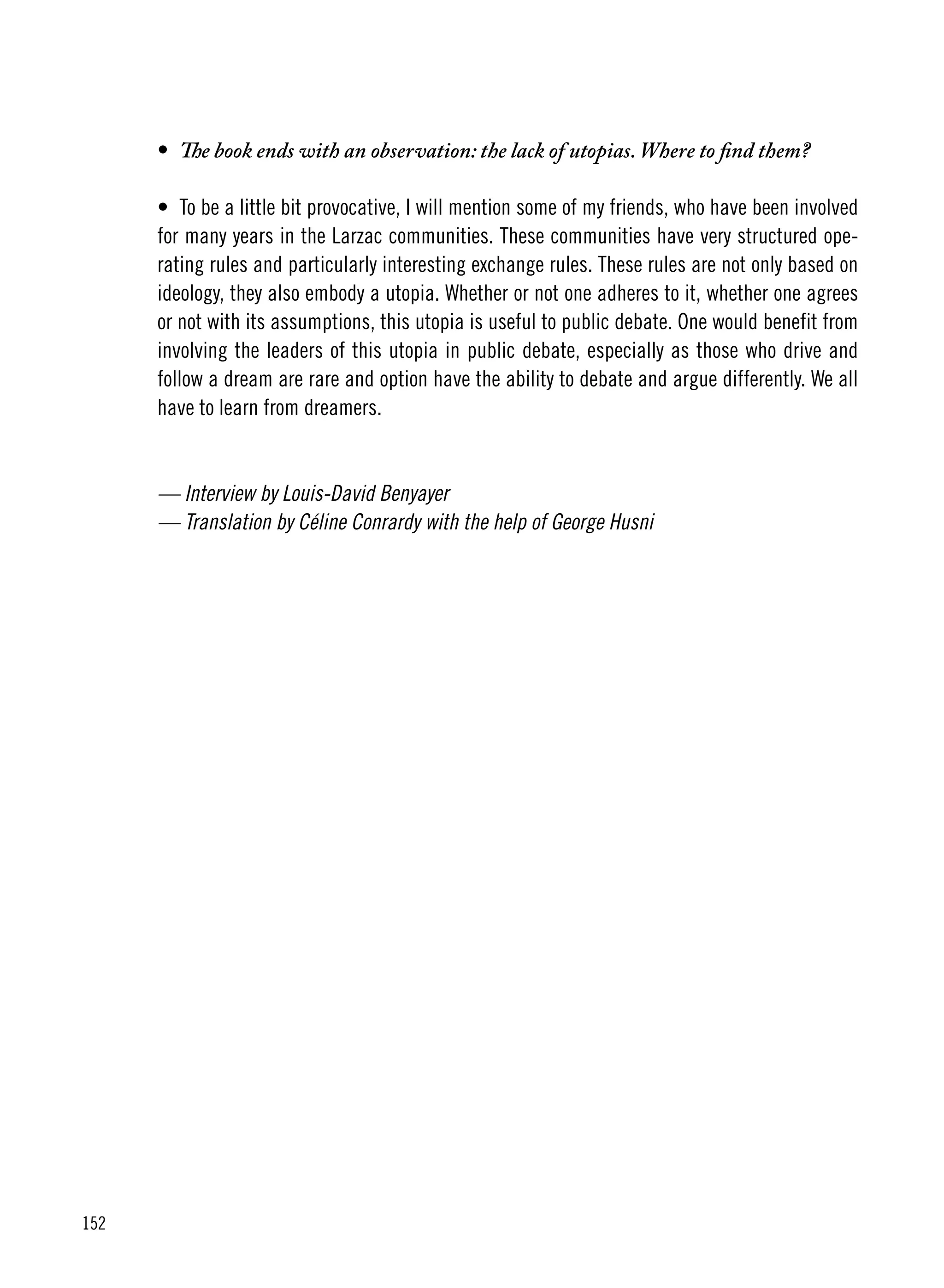


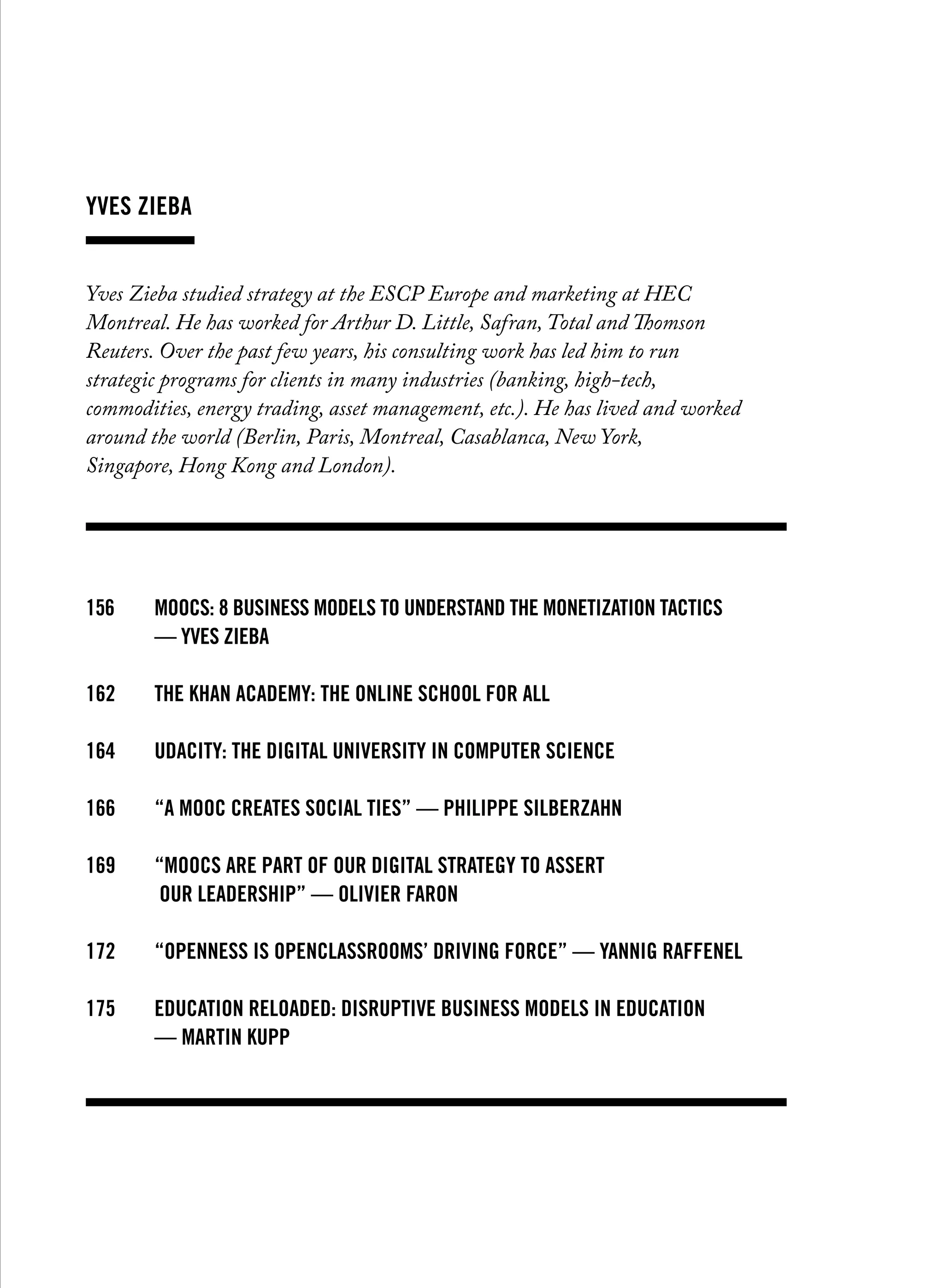



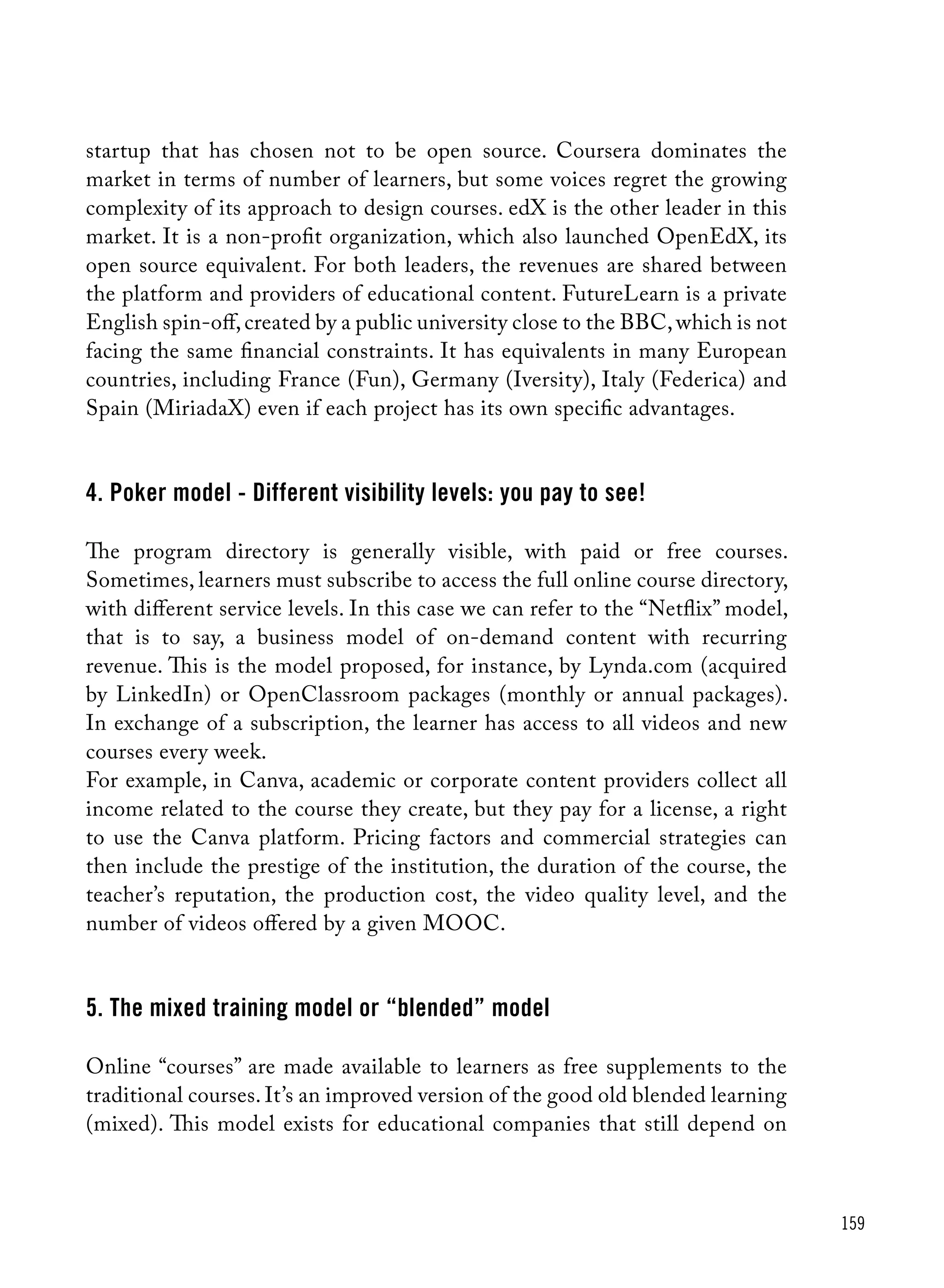








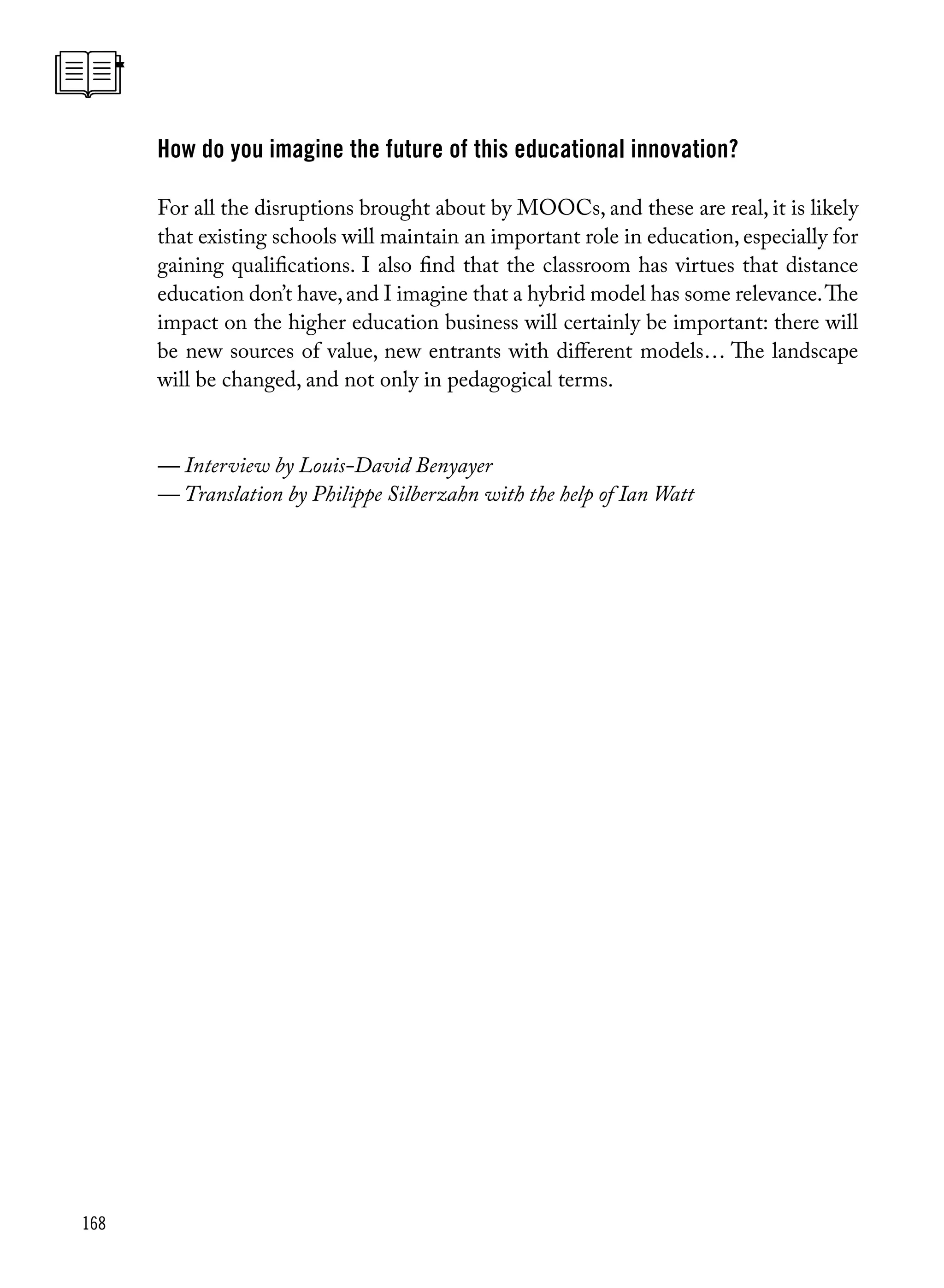



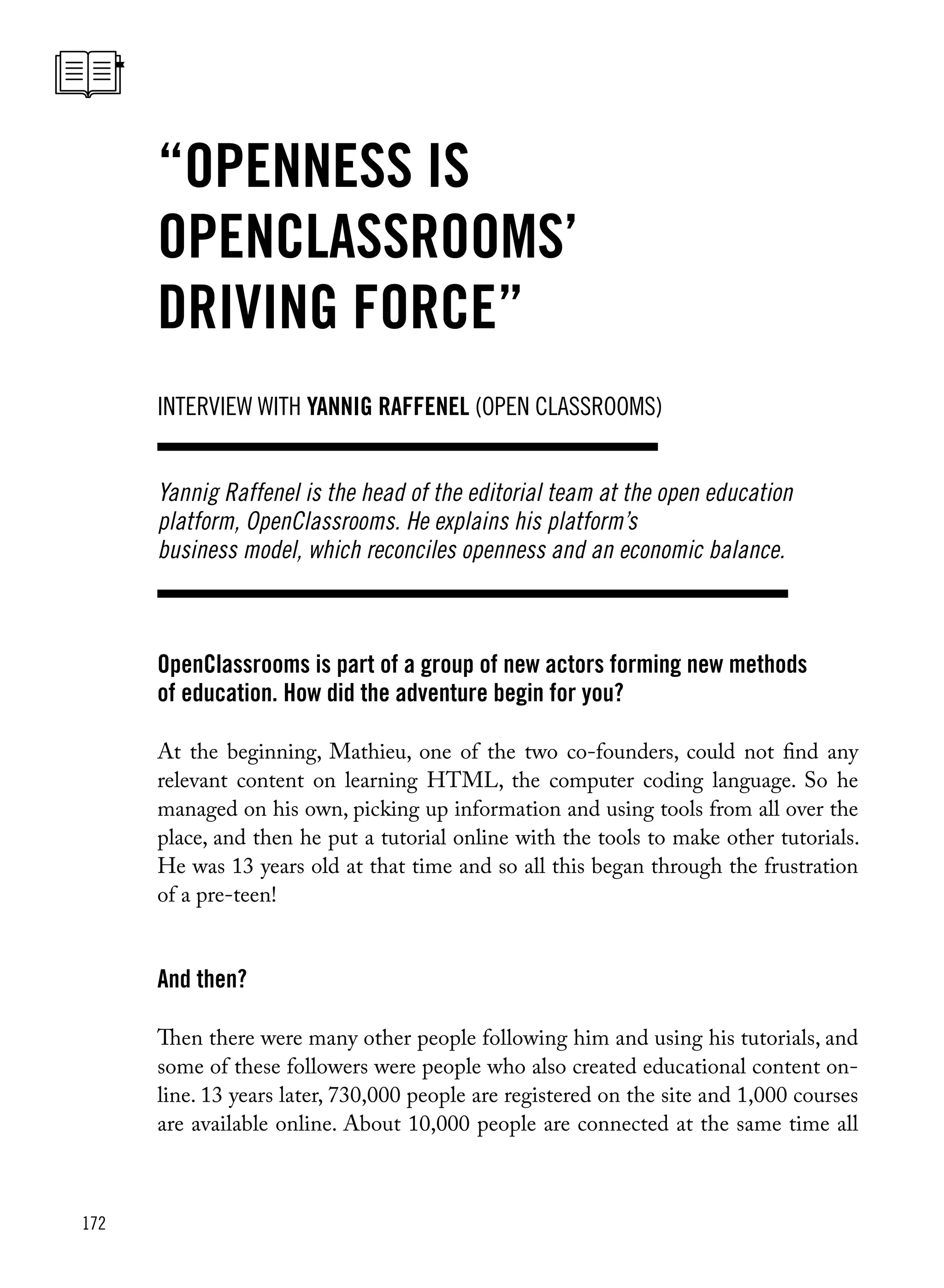

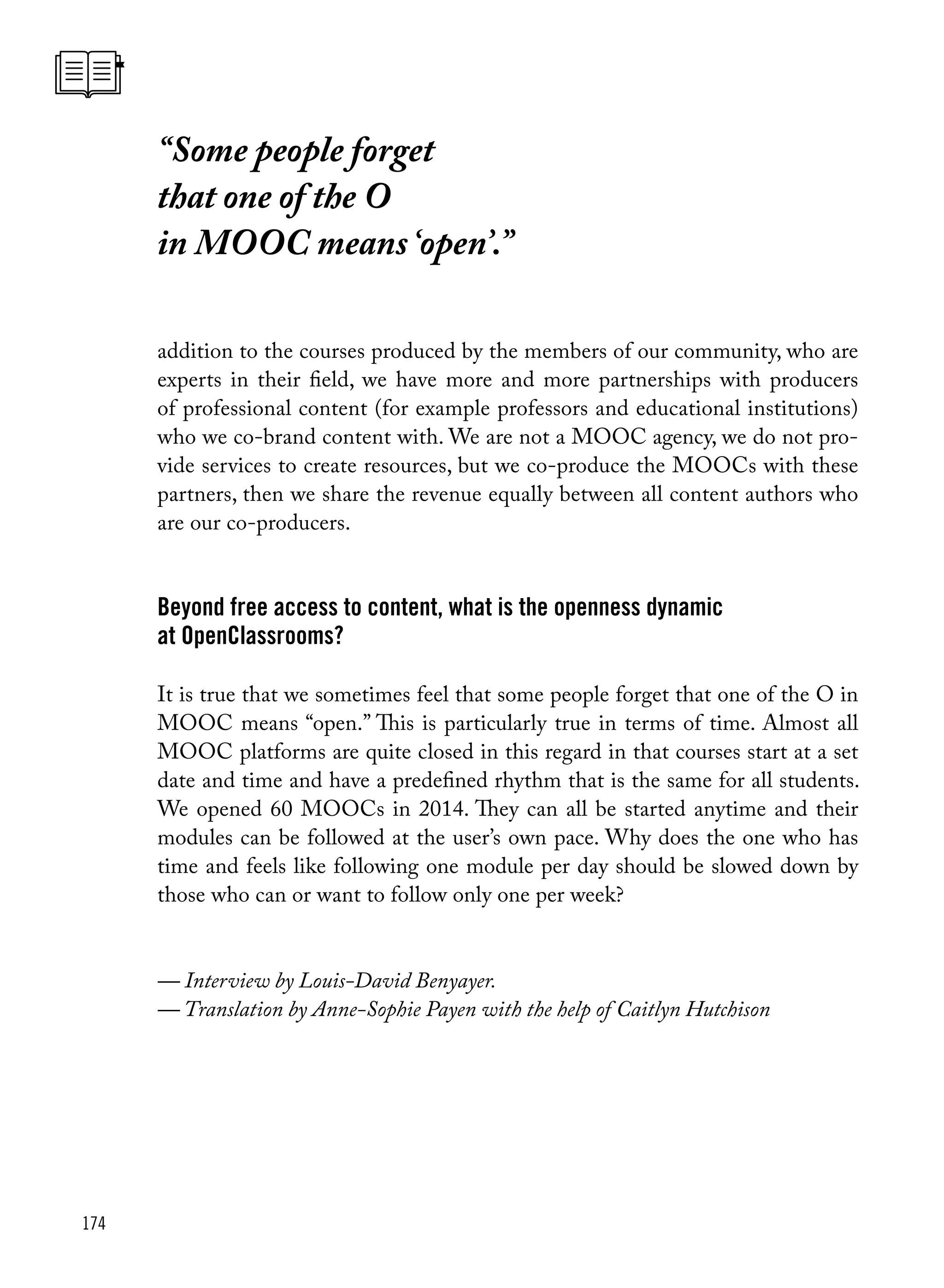



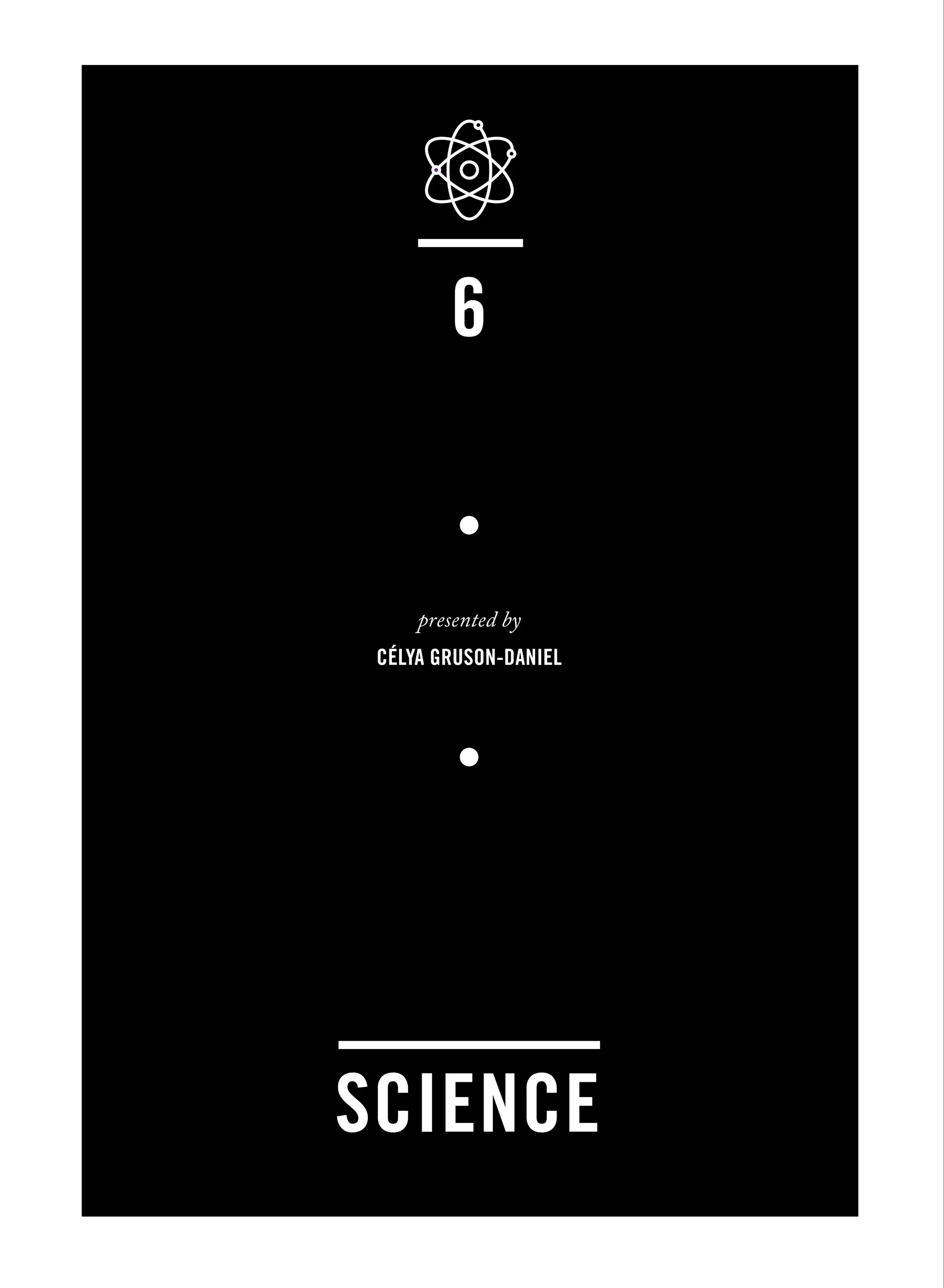




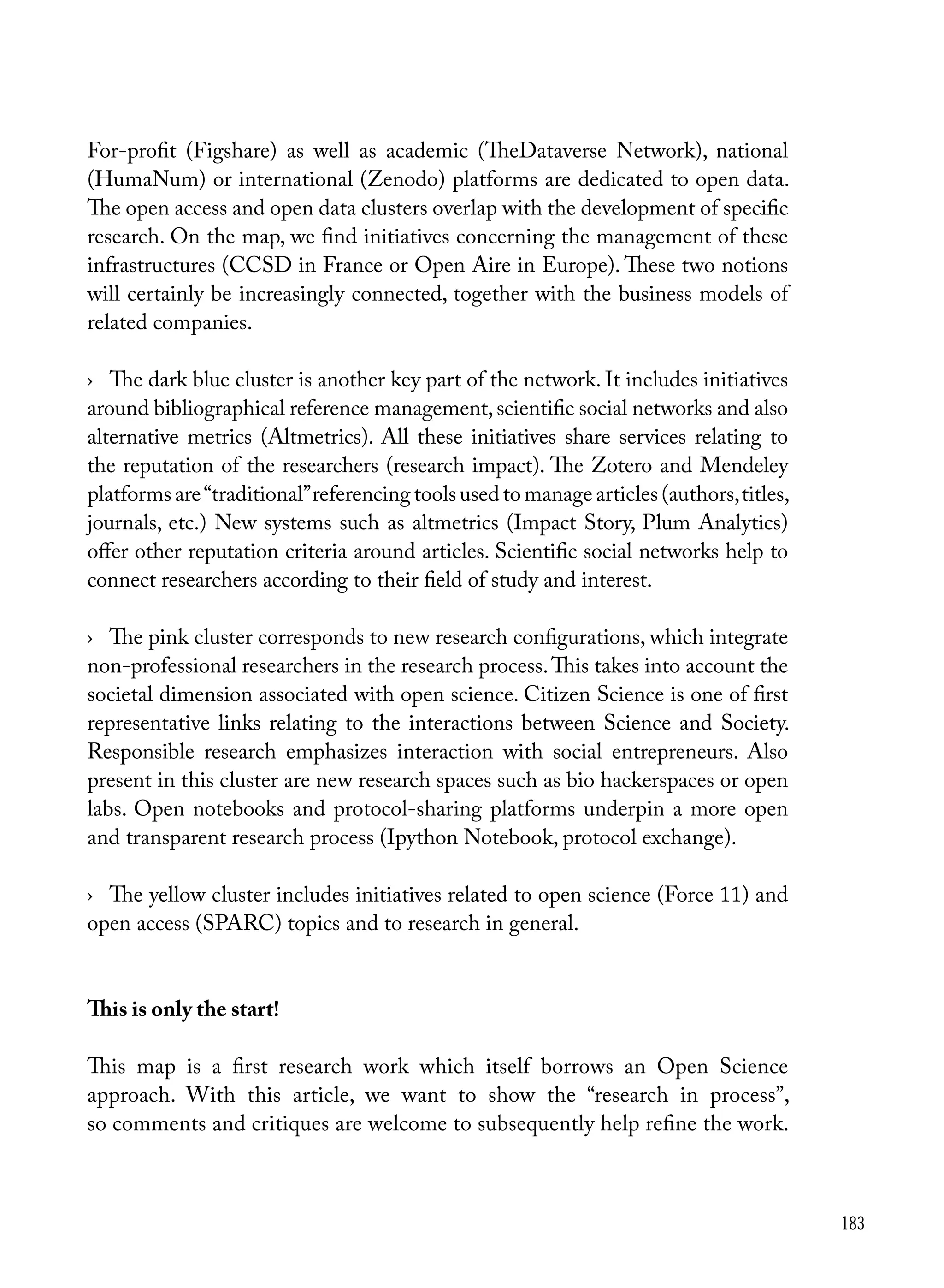


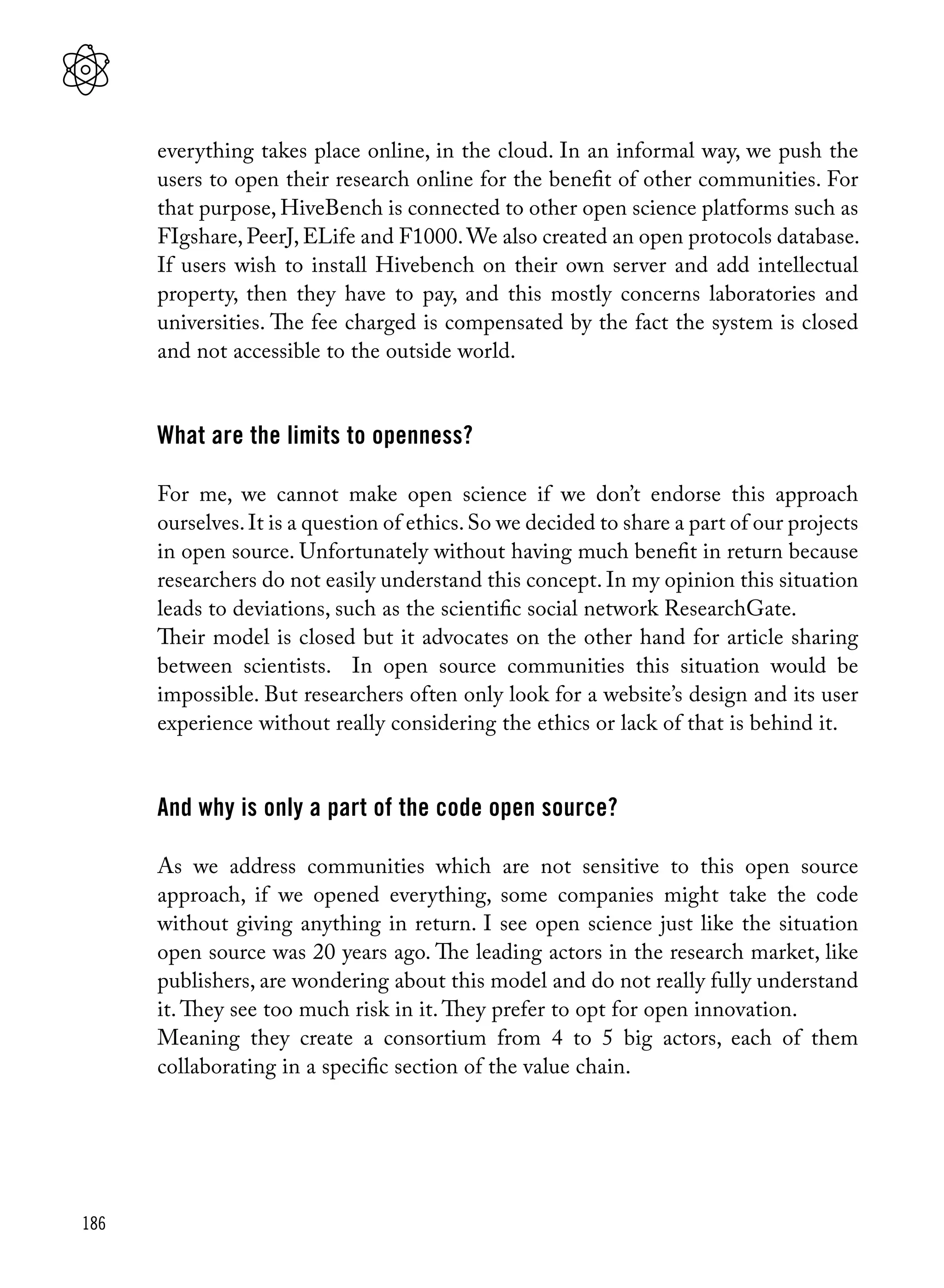





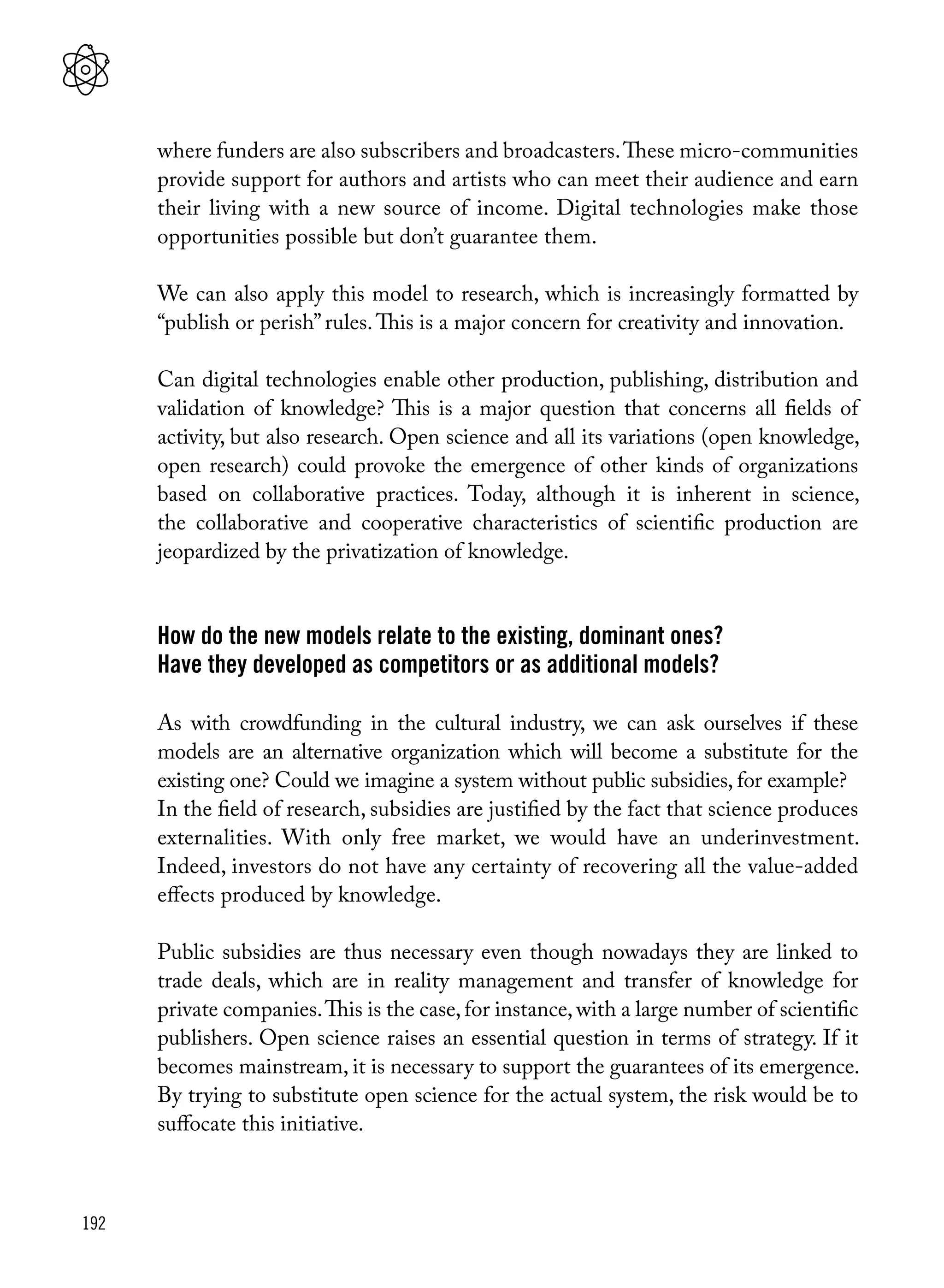

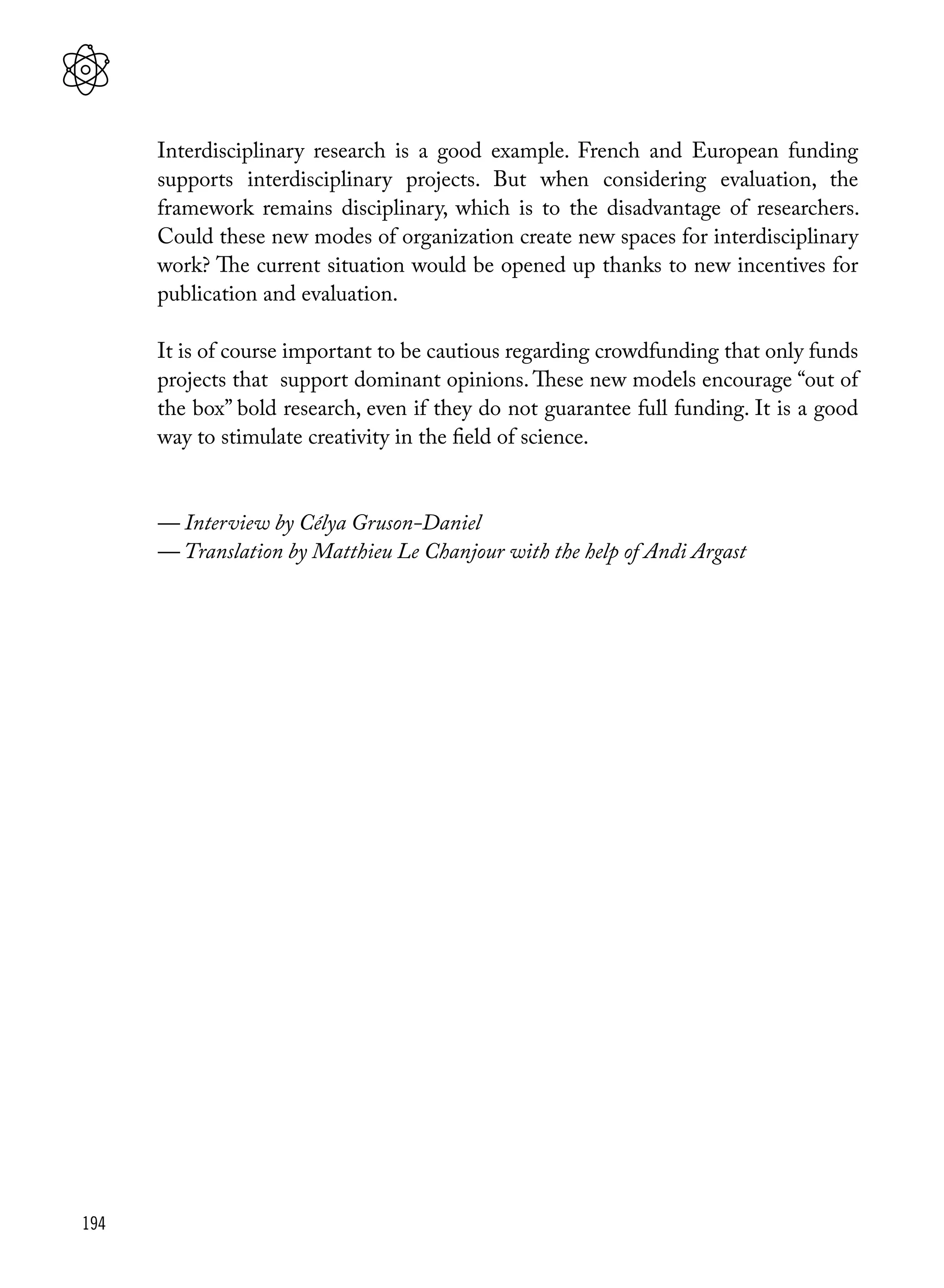
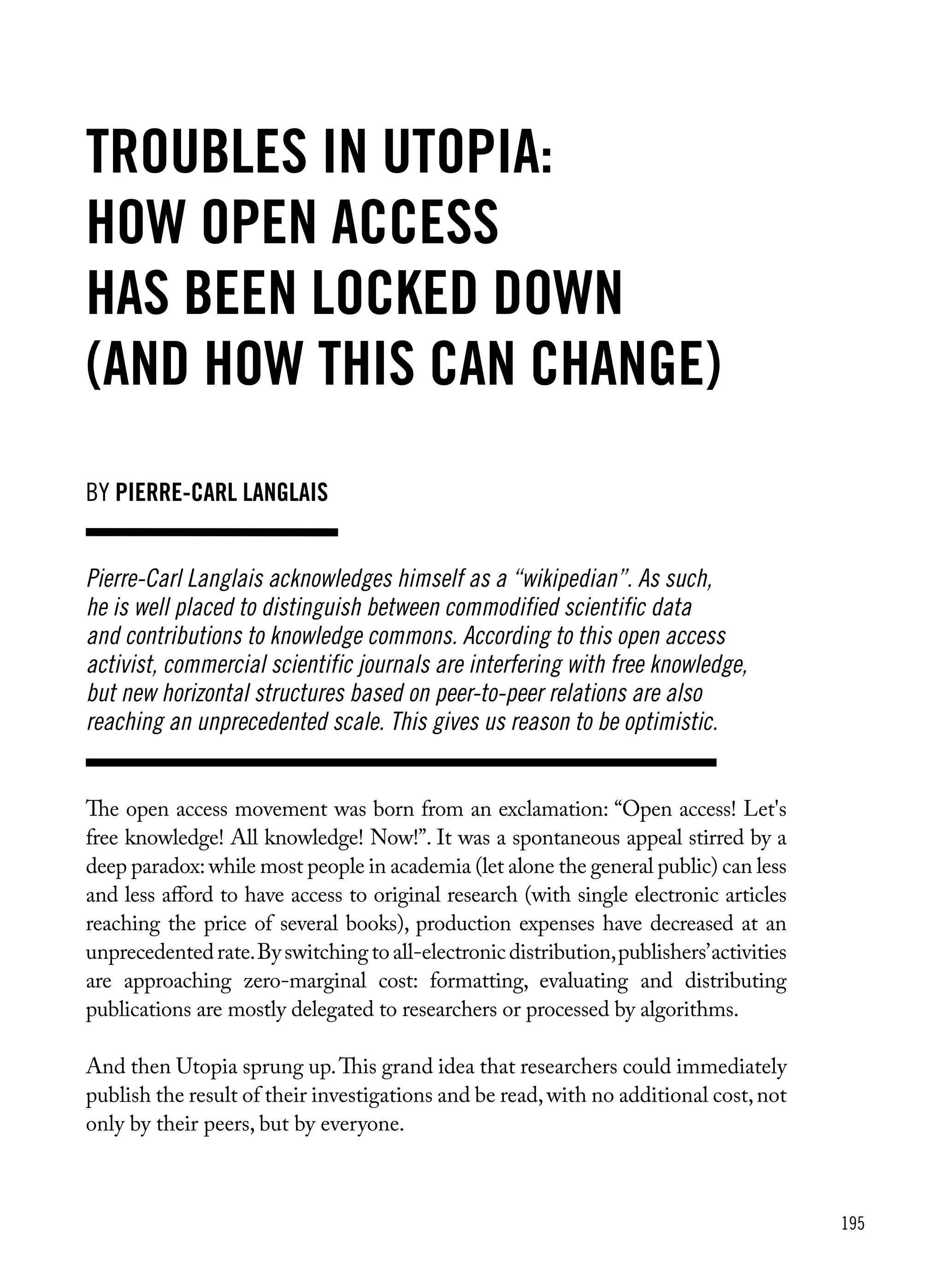

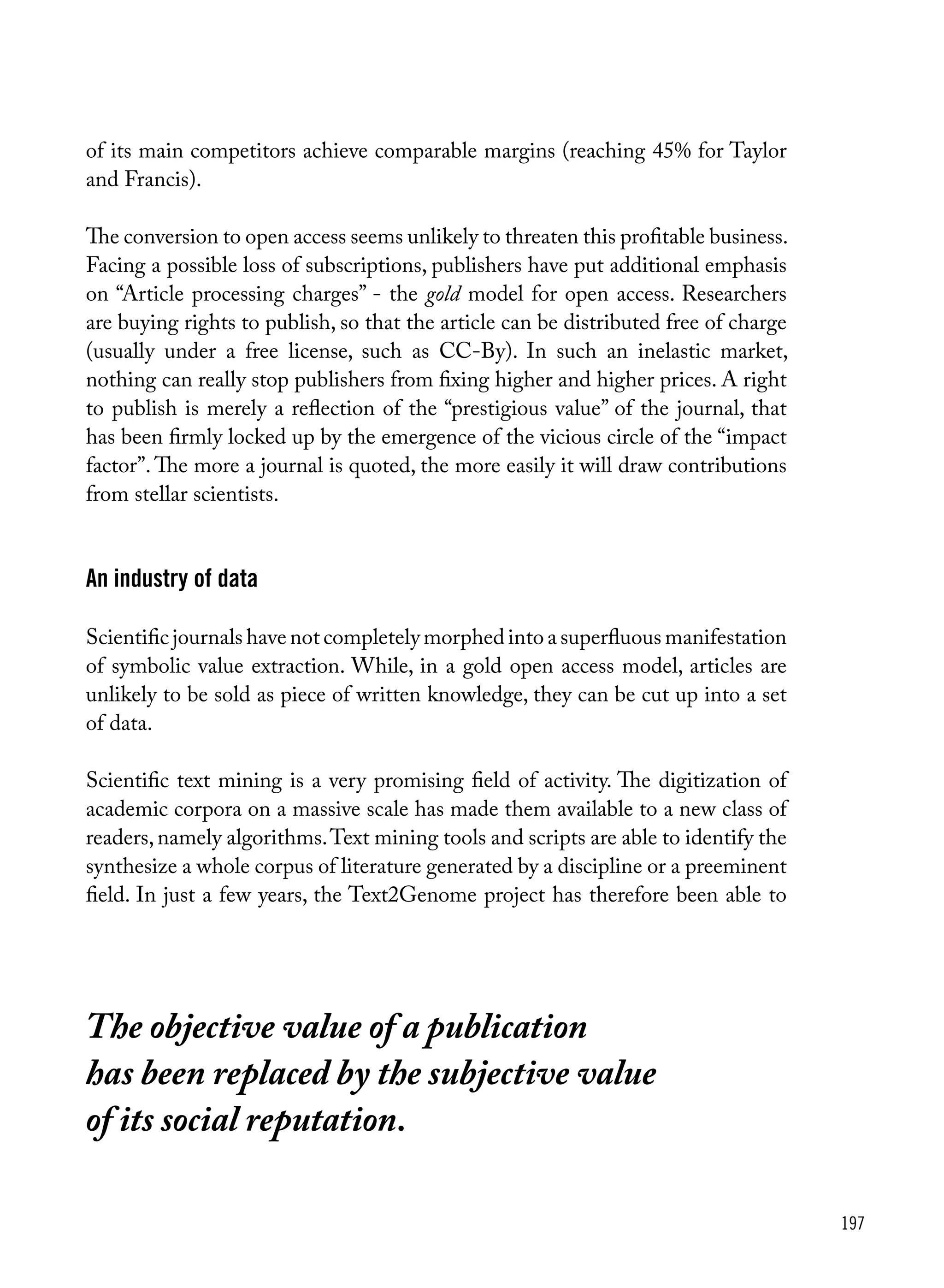
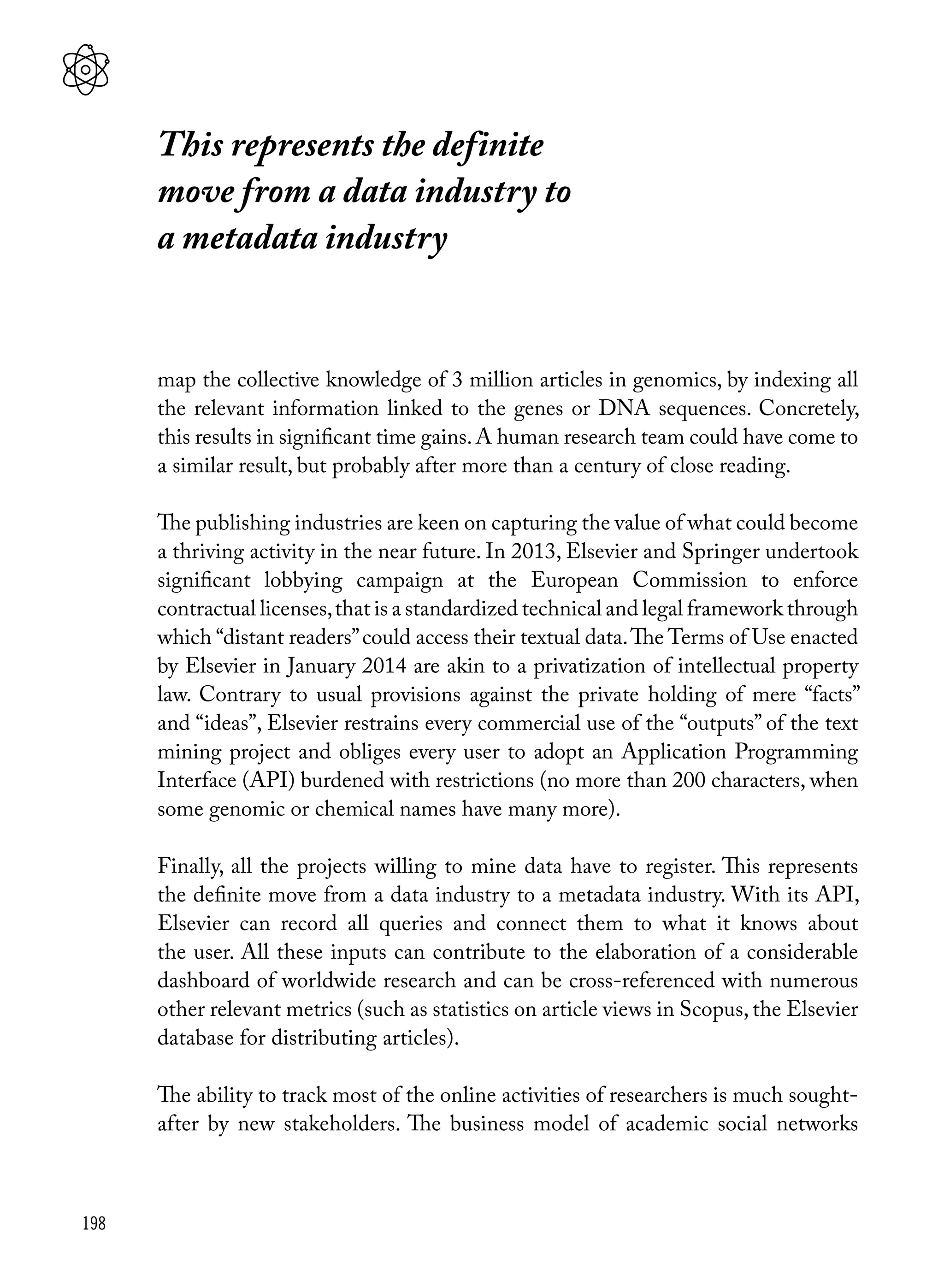




![203
Licenses
and business model
There are many open licenses (open source, open data, etc.),
but they differ depending on sectors or contexts where they are used.
How do you not get confused?
Open licenses appeared in the mid 80’s, when copyright was adapted
and extended to software. Open license usage characterizes a way for the
author to ensure his rights. They essentially deal with copyright, but these
licenses were adapted to fit broader issues of intellectual property rights.
There are more than 70 open source licenses certified by the open source
initiative. In practice, we can count several hundred of them and not all of
them are actually certified. Moreover, authors can modify these licenses (so
several versions of the same license coexist), and users can also choose to
adapt these licenses to their specific needs.
interview WITH benjamin jean (inno3
)
Benjamin Jean is a well-known lawyer in the world of open source,
open data and more generally within open models. President
of the company inno3, Benjamin is also a consultant within Gilles Vercken’s
firm, senior lecturer at Sciences Po, and highly involved within
the community ecosystem (co-founder of the European Open Source
and Free Software Law Event [EOLE] and of Veni Vidi Libri, administrator
of Framasoft and “Libre Accès” and president of the Company
of Acceptance and Allocation of Donations [SARD]).](https://image.slidesharecdn.com/20160504wmglobalanglaispage-160728074215/75/Open-models-book-203-2048.jpg)


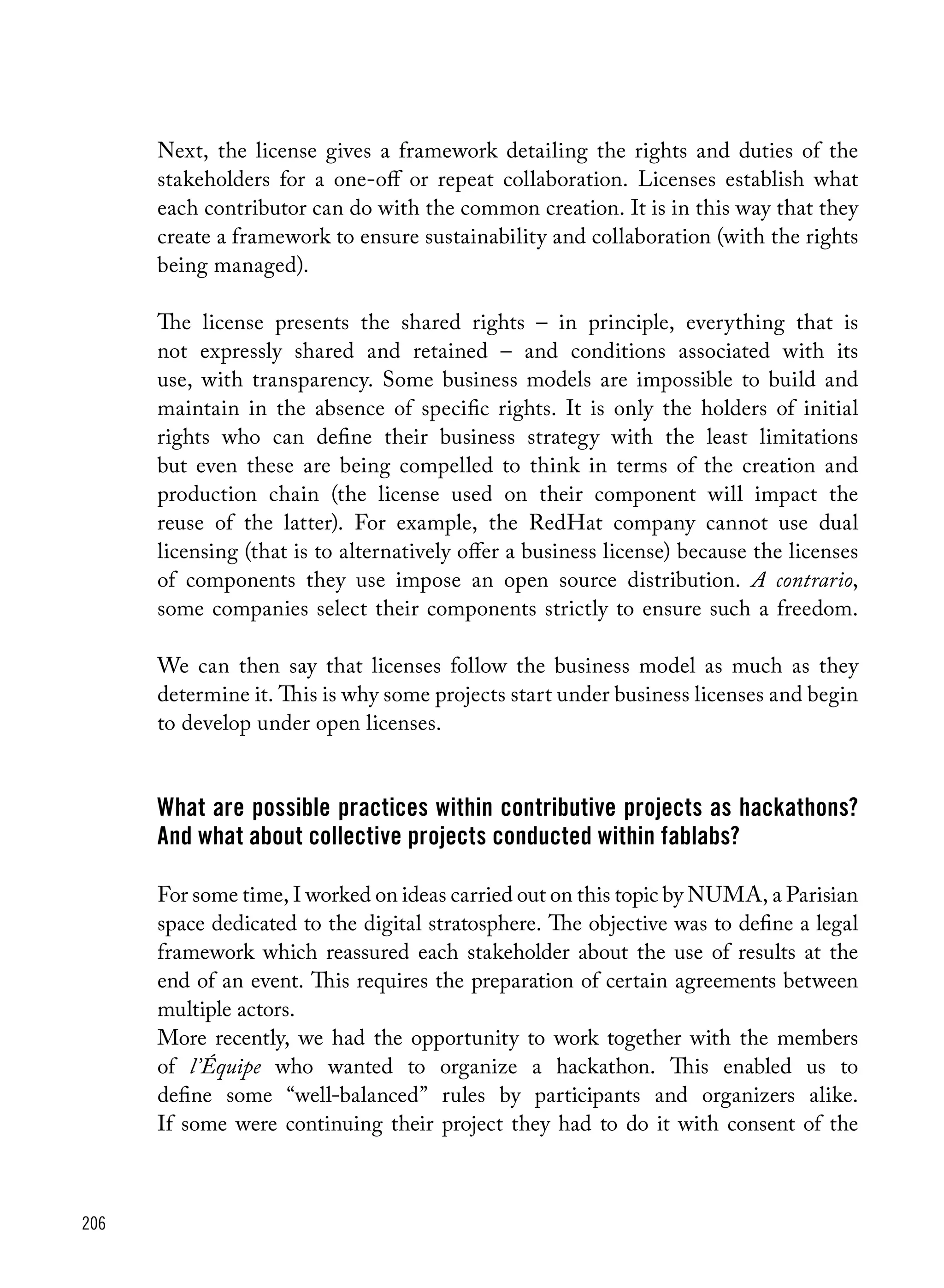



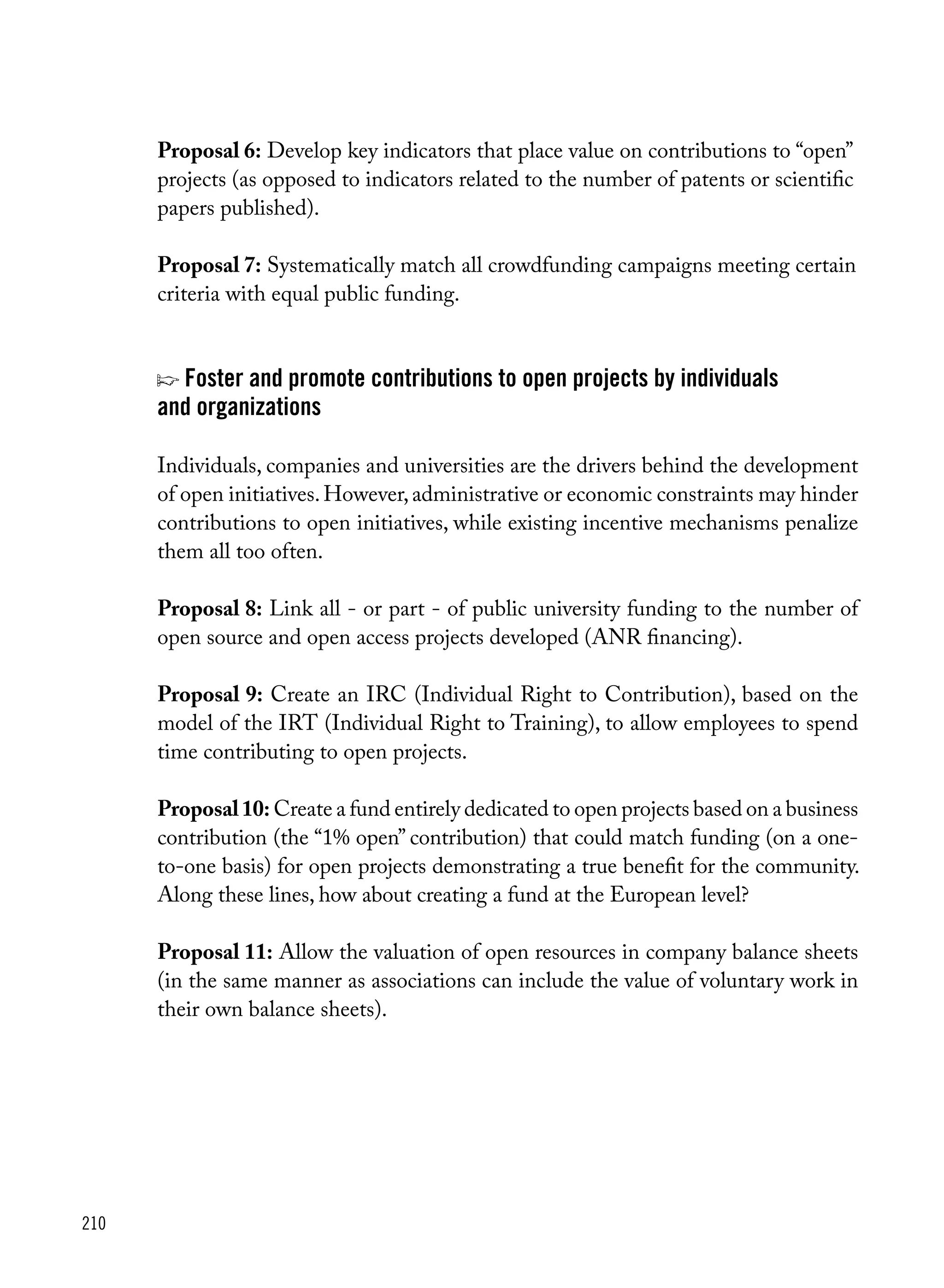




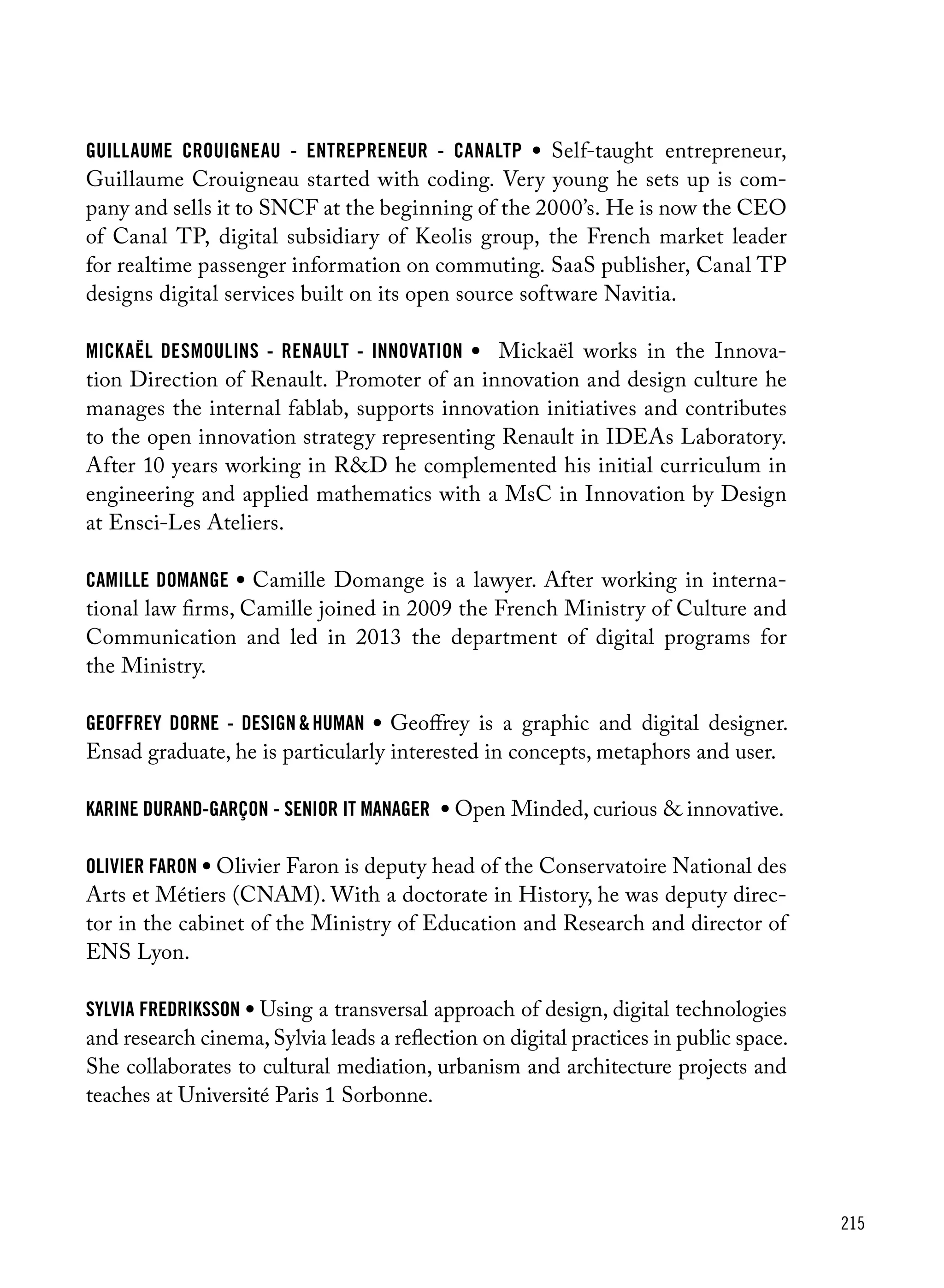
![216
Sophie Gautier - The Document Foundation • Sophie is one of the founding mem-
bers of The Document Foundation (LibreOffice and The Document Liberation
Project). As a volunteer, she adapts the software to French and participates to
Membership et Certification Committees.She is also paid by the Foundation to
assist in release management and Foundation administration.
Bastien Guerry • Bastien Guerry is a developer and consultant, specialist in free
software and digital education issues. He has been an advocate for digital free-
doms since the end of the 20th century, at time when he simultaneously disco-
vered GNU/Linux, the free software movement, and programming.
Célya Gruson-Daniel • Célya Gruson-Daniel is a former neuroscience student
who discovered the Web, Science and Education and then the free culture
and that of the collaborative economy. At OuiShare she puts her thinking
cap on to understand the changes that the Web and open culture are brin-
ging to Science and Society. She is passionate about current transformations
(open science, open access etc.) in research and she is seeking to get involved,
in particular through the "Hack your PhD" community that she co-foun-
ded in 2013. She is currently the MOOCs (Massive Open Online Courses)
coordinator at the Virchow-Villermé Centre (a Franco-German public health
centre), whilst at the same time undertaking a PhD in the field of Information
and Communication in the open science movement.
cesar harada • Cesar Harada is a Franco-Japanese engineer who imagined and
developed Protei, a marine drone that cleans the oceans.
benjamin jean • Benjamin Jean is a specialized lawyer in open models. President
of the company inno3, Benjamin is also senior lecturer at Sciences Po, and hi-
ghly involved within the community ecosystem (co-founder of the European
Open Source and Free Software Law Event [EOLE] and of Veni Vidi Libri,
administrator of Framasoft and “Libre Accès” and president of the Company
of Acceptance and Allocation of Donations [SARD]).
neil jomunsi (julien simon) • After sudying filmmaking, Julien worked as a book-
seller before founding of the digital e-books publishing company Walrus.Under](https://image.slidesharecdn.com/20160504wmglobalanglaispage-160728074215/75/Open-models-book-216-2048.jpg)

